Open Public Structures focuses on creating real meeting places, empowering users and enabling change
What do we enable, when we see architecture as a framework for occupation?
What do we enable, when we see architecture as a framework for occupation?

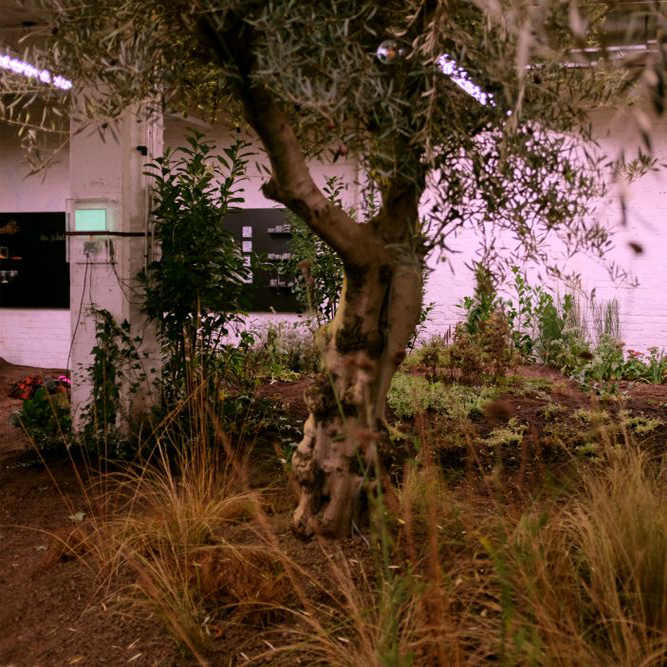
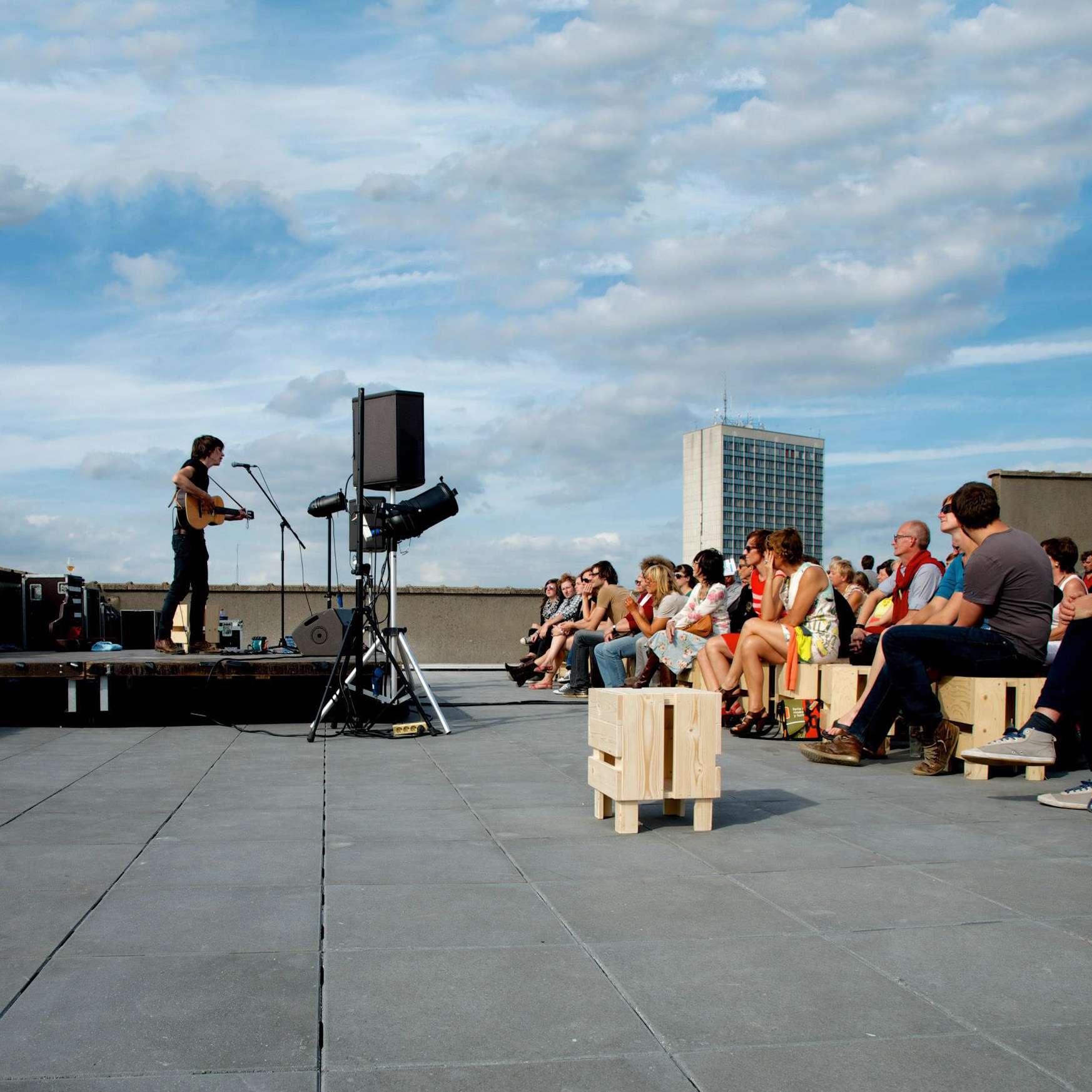
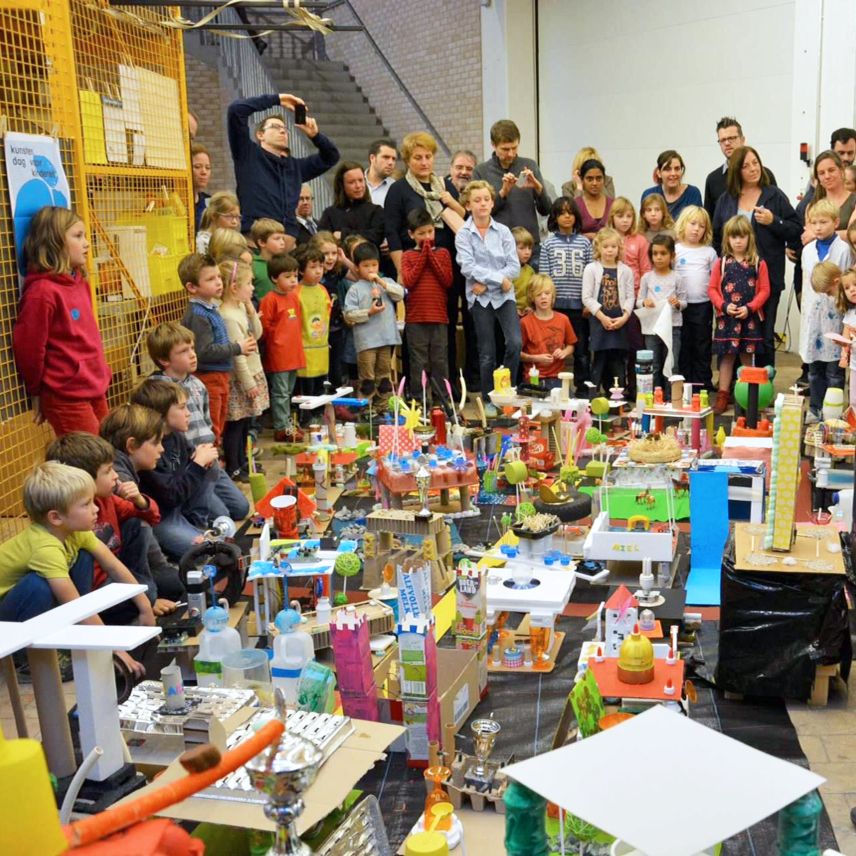

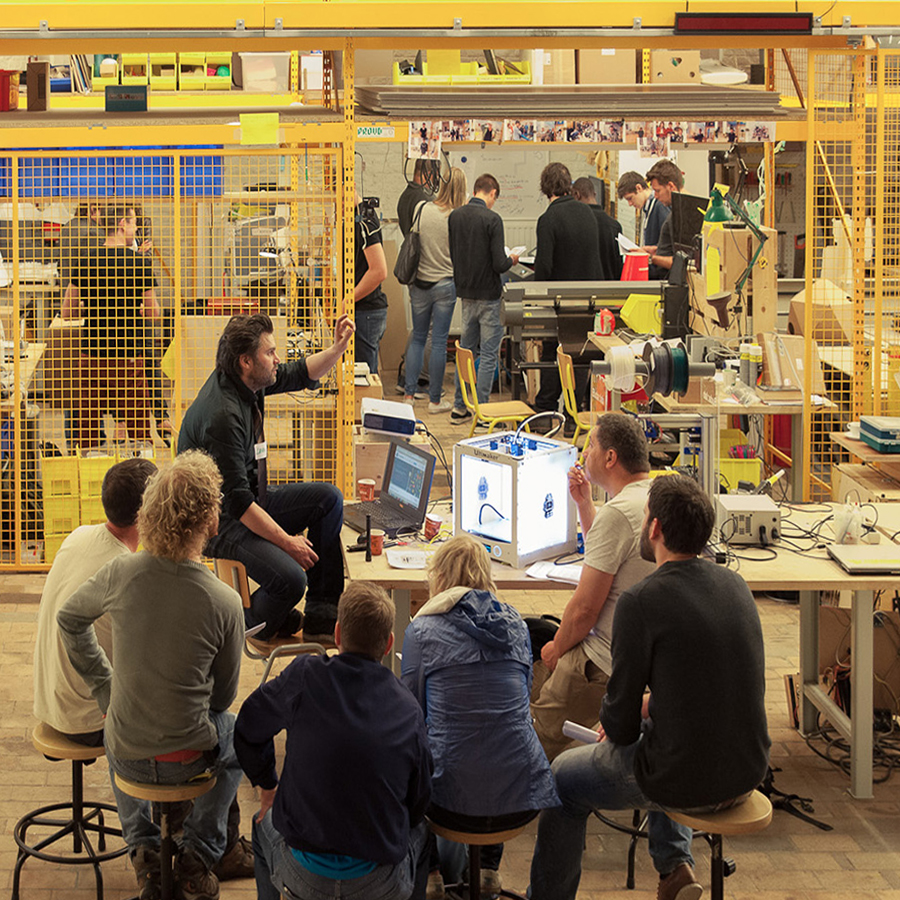

In the existing factory the interventions linked to the renovation of the building were very targeted - a new staircase, new doors and an entrance pavilion - in order to keep as much as possible of the original building. This explains why the building consists of a wide range of (existing) rooms with different characteristics. These rooms are all connected to each other from the entrance pentagon to the roof terrace, but can also function separately, allowing the institution to host various events and users. The diverse characteristics and adaptability of the path allows to absorb a large scope of uses.



A public pathway through the building leads the visitor from the monumental entrance on the square to the roof terrace offering a view on the city of Kortrijk and its landmarks. From beginning to end the Budafabriek offers a context-specific experience. The entrance pentagon functions as an antechamber leading the visitors from the city into the heart of the building. Inside, a long walk develops and ends on the roof with a view of the surrounding area, linking various cultural institutions on Buda Island.
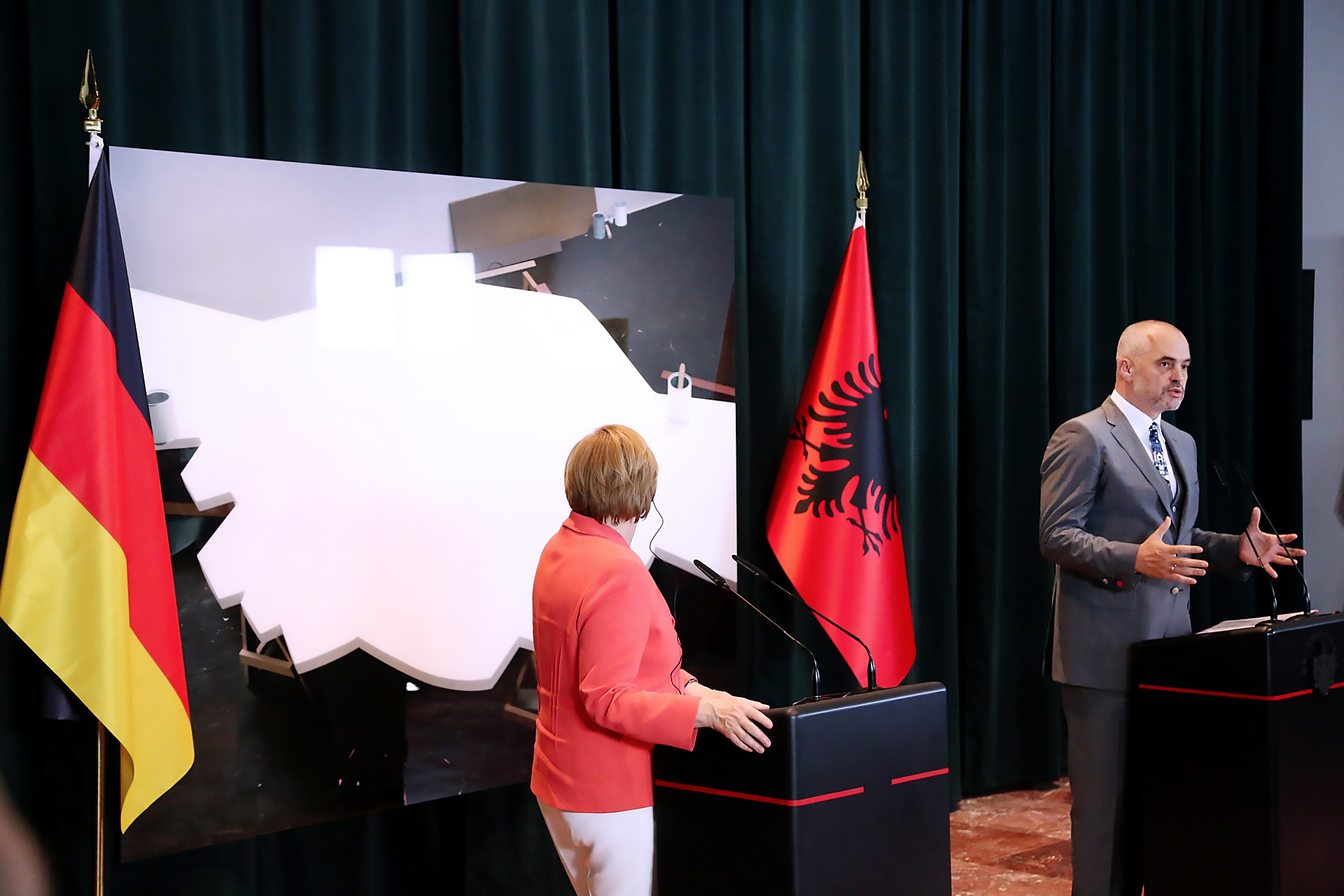
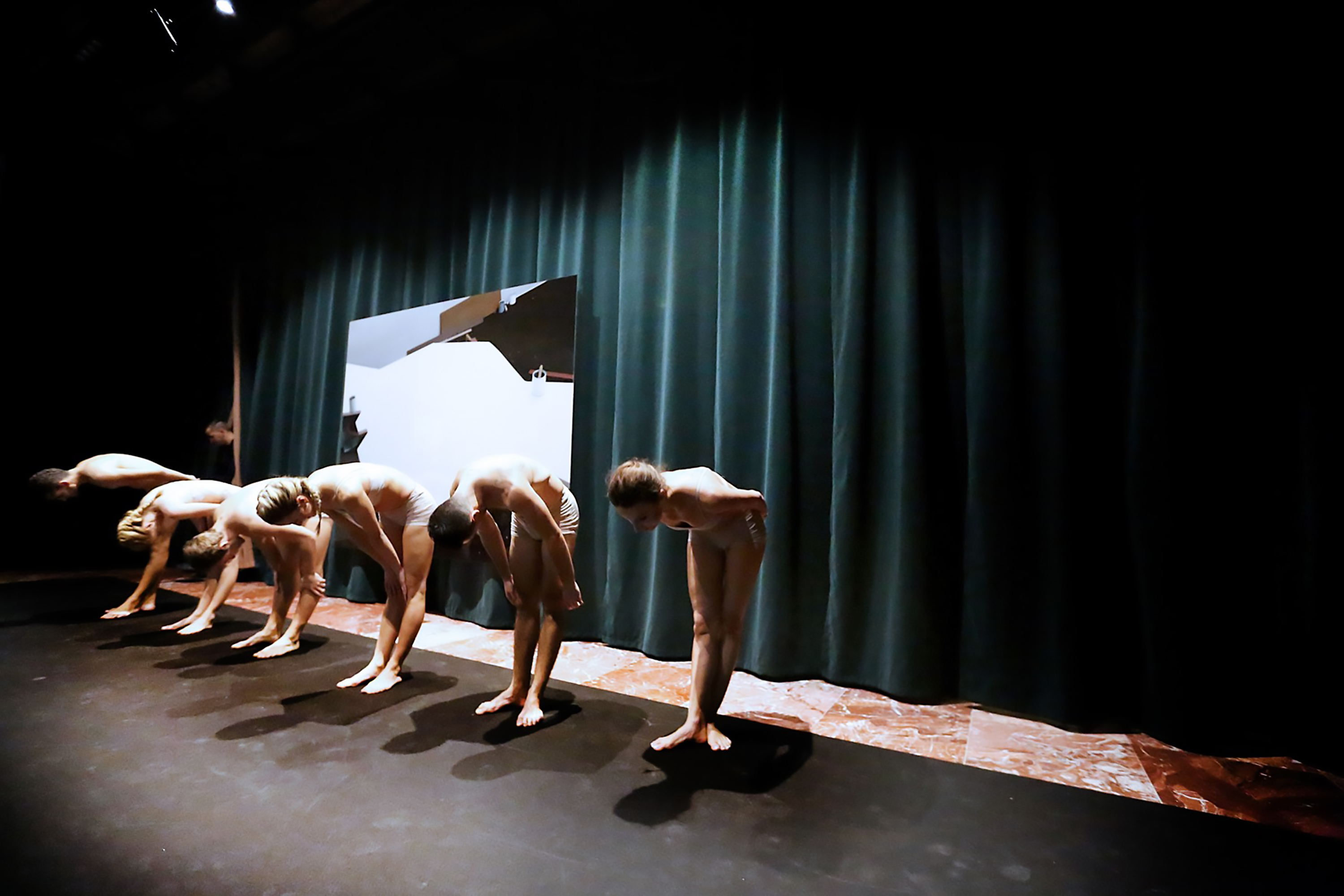
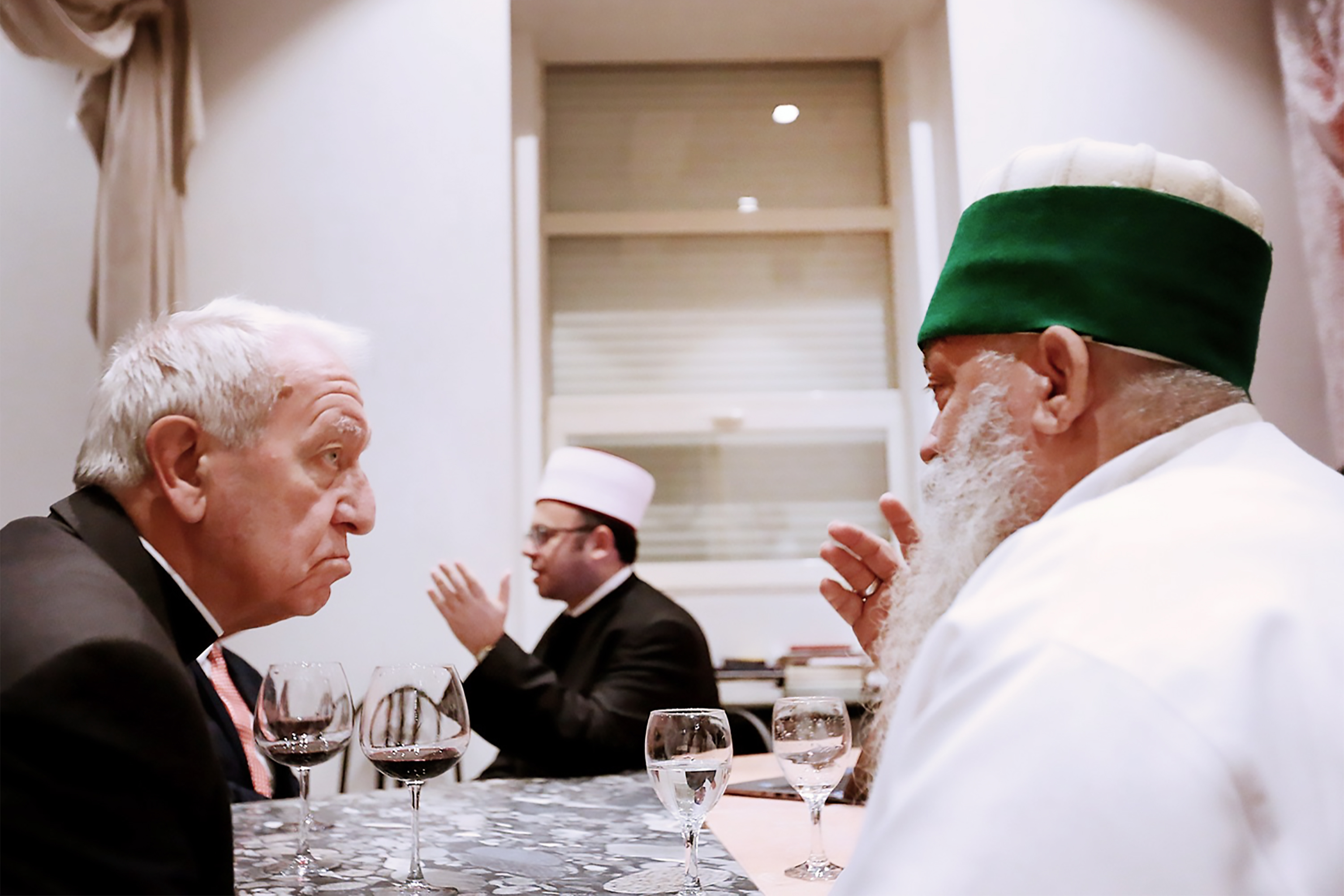
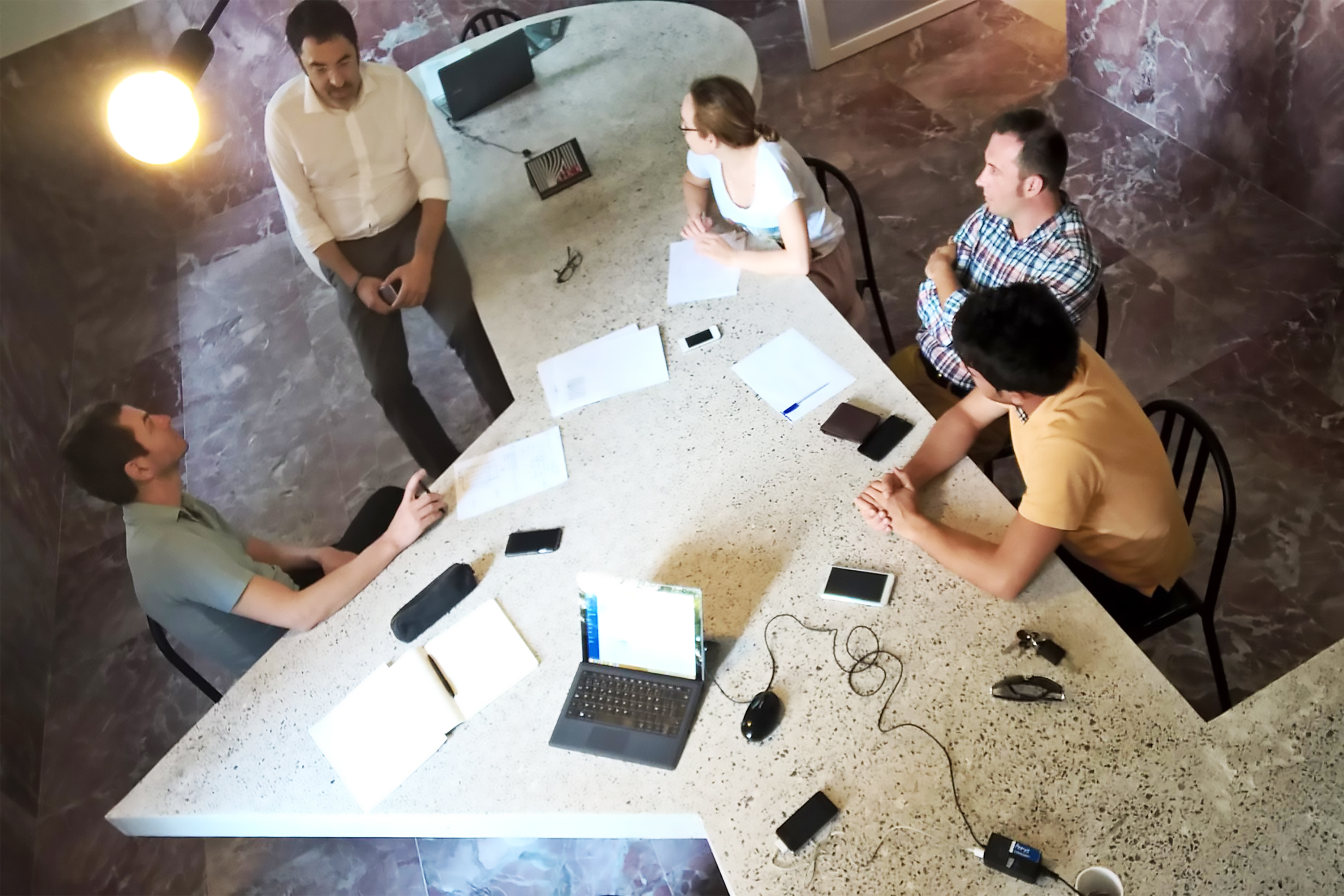

The Prime Minister’s office in Tirana, Albania, is a building that has been closed to the public ever since it was made, regardless of the political system and its central location. The Center for Openness and Dialogue, or COD, opens up the ground floor with a select and intense series of spaces and in situ art works. A cultural agenda (exhibitions, seminars, speeches, film projections, workshops) takes over the front side of the high-security building. The uses are not defined, the brief is rather to create spaces for different forms of dialogue: a foyer or exhibition hall, a press room or auditorium, a public library or presentation space, a meeting room or working space.
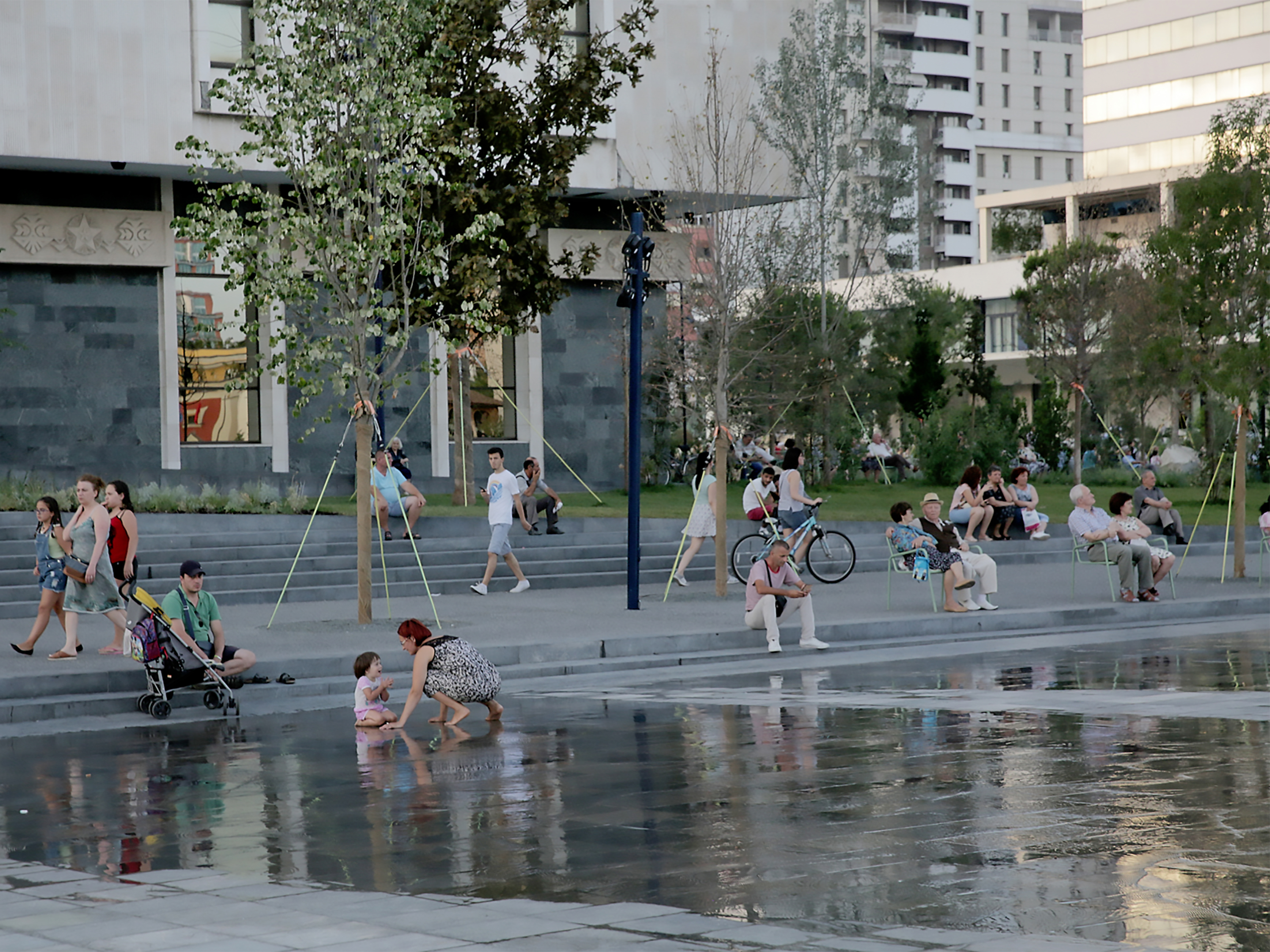
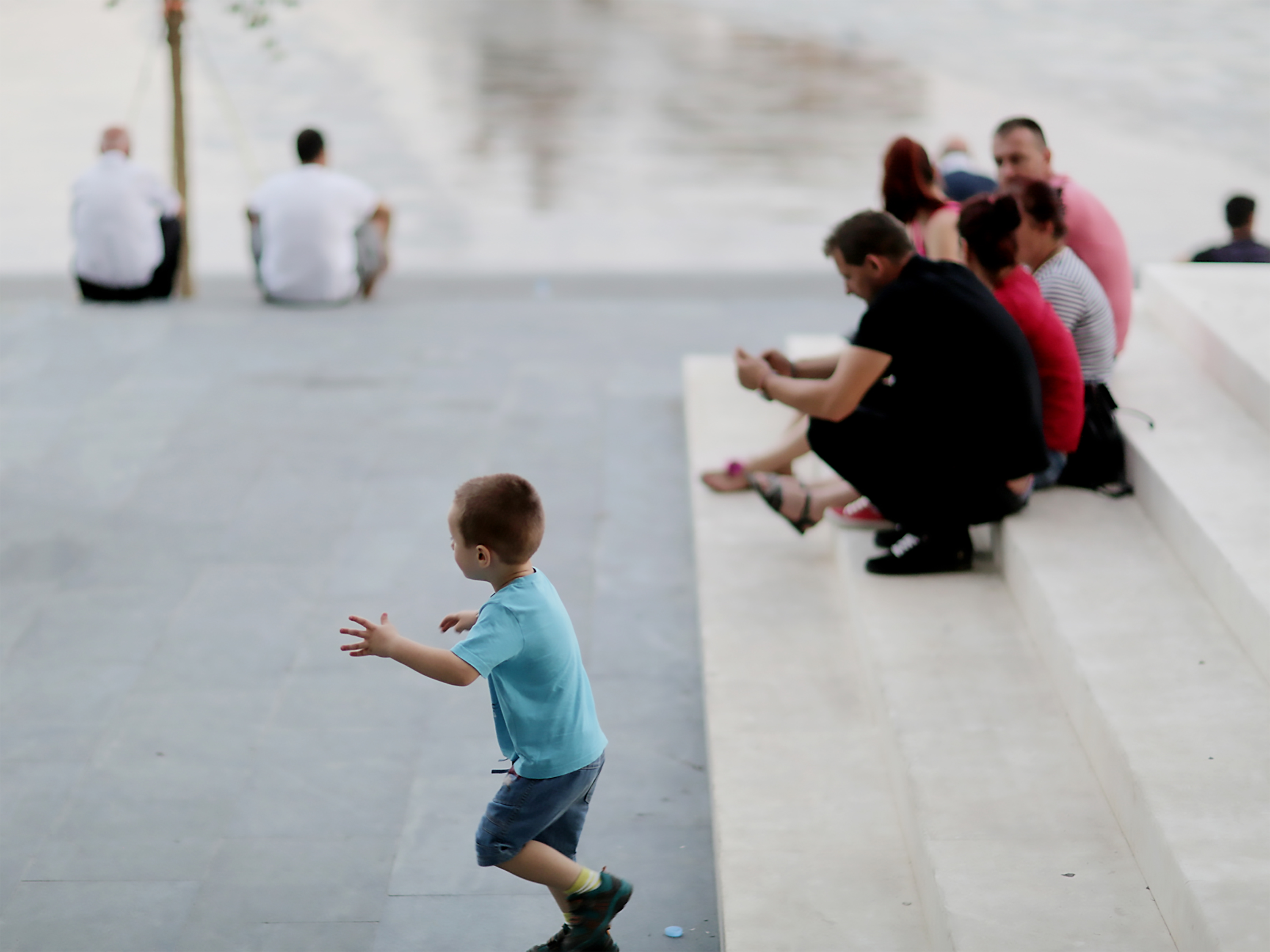
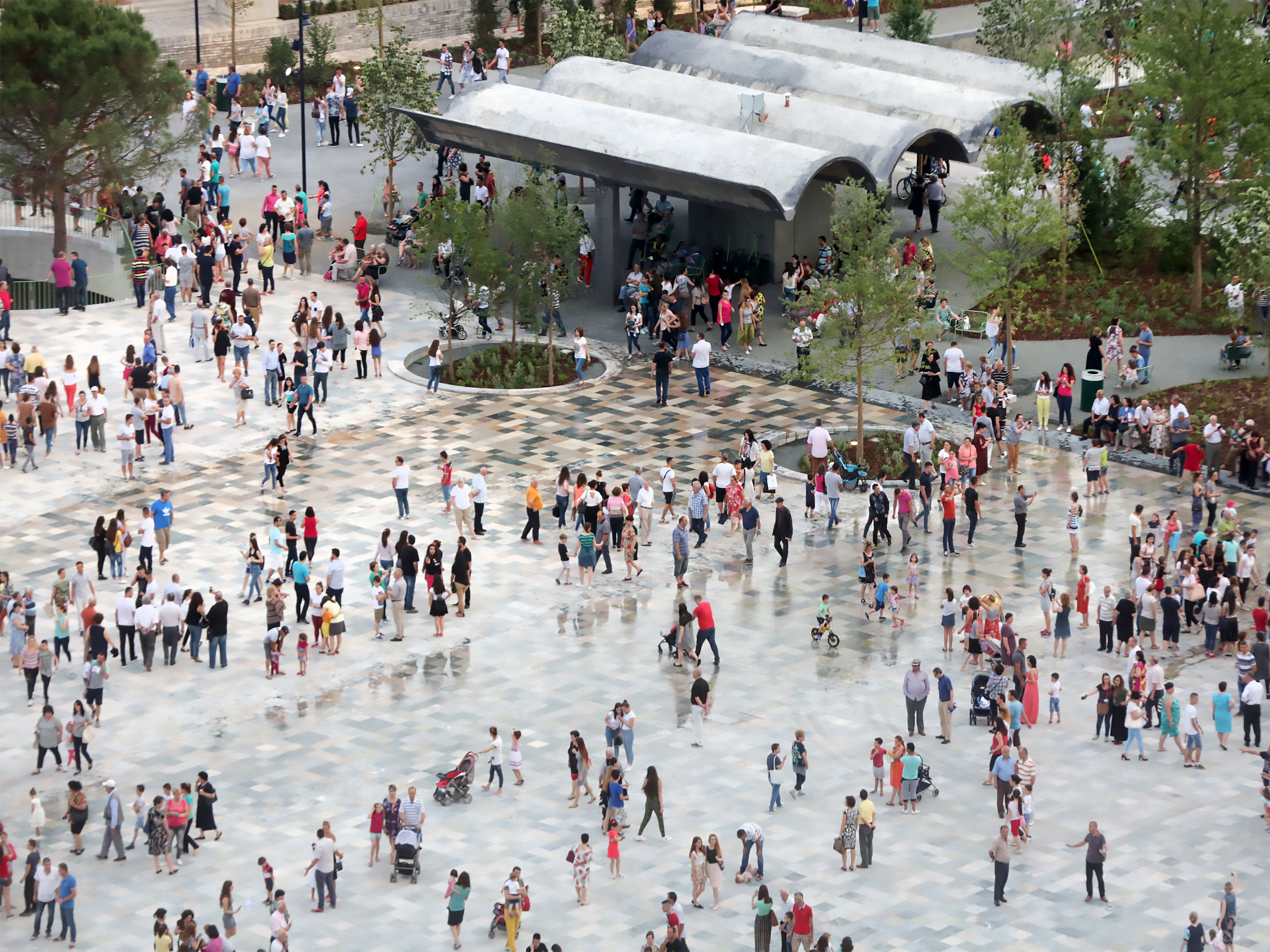

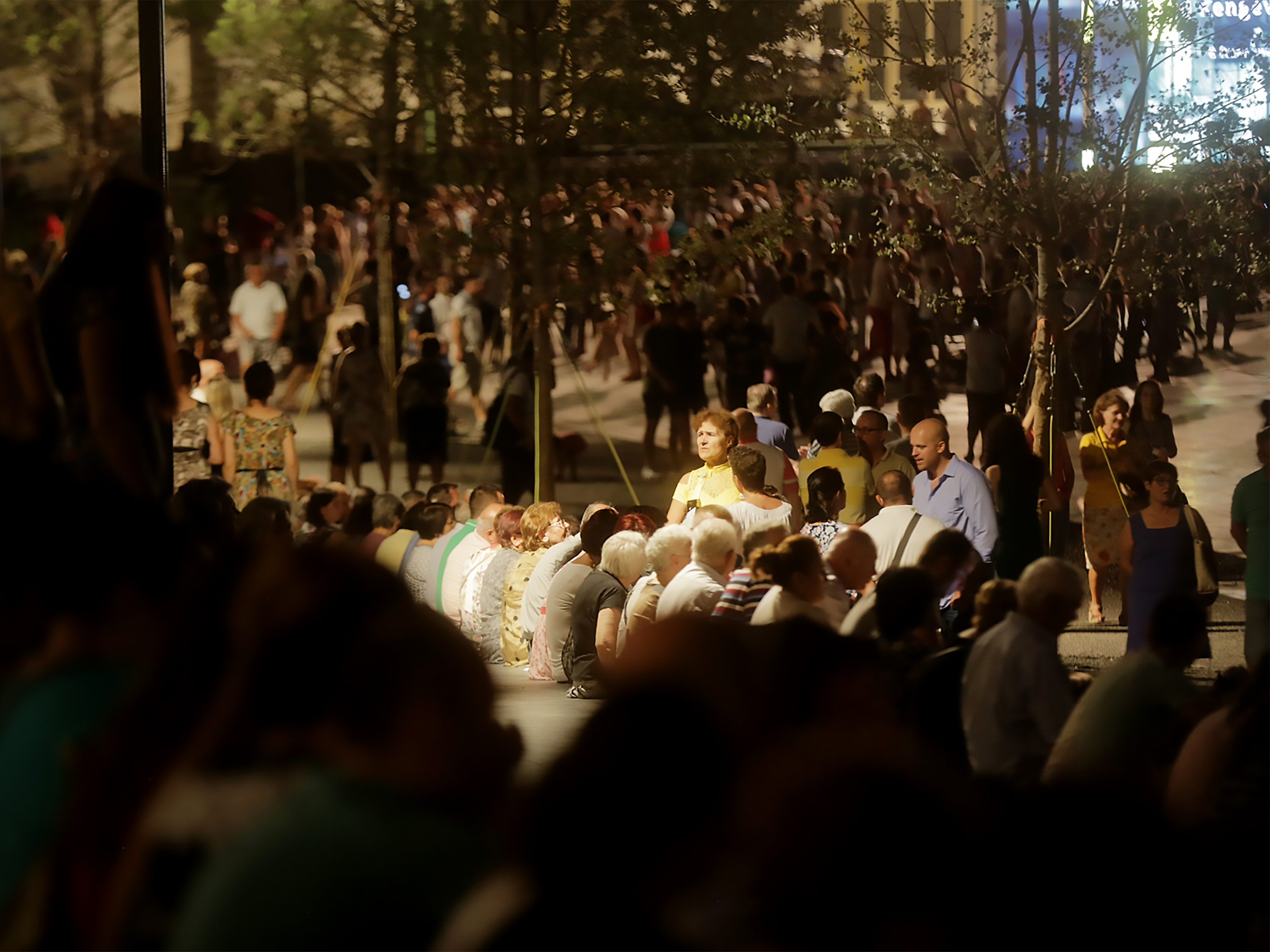



If I were to imagine public space as a movie, it would be one without script or cast. Its stagecraft would be exclusively intented to prompt the audience's actions to take charge of the narrative. The camera movements would direct everyone's gaze back to themselves.
Anri Sala, Chapter 1, Skanderbeg Square, Tirana
The Skanderbeg square is an elastic space, serving as a busy open surface crossed by bikes and pedestrians during the day and hosting informal gatherings during summer evenings, but also accomodating crowded events or religious celebrations. It can thus be appropriated both on a small, individual scale and on a collective one.
How to design such a spatial framework?
How to design such a spatial framework?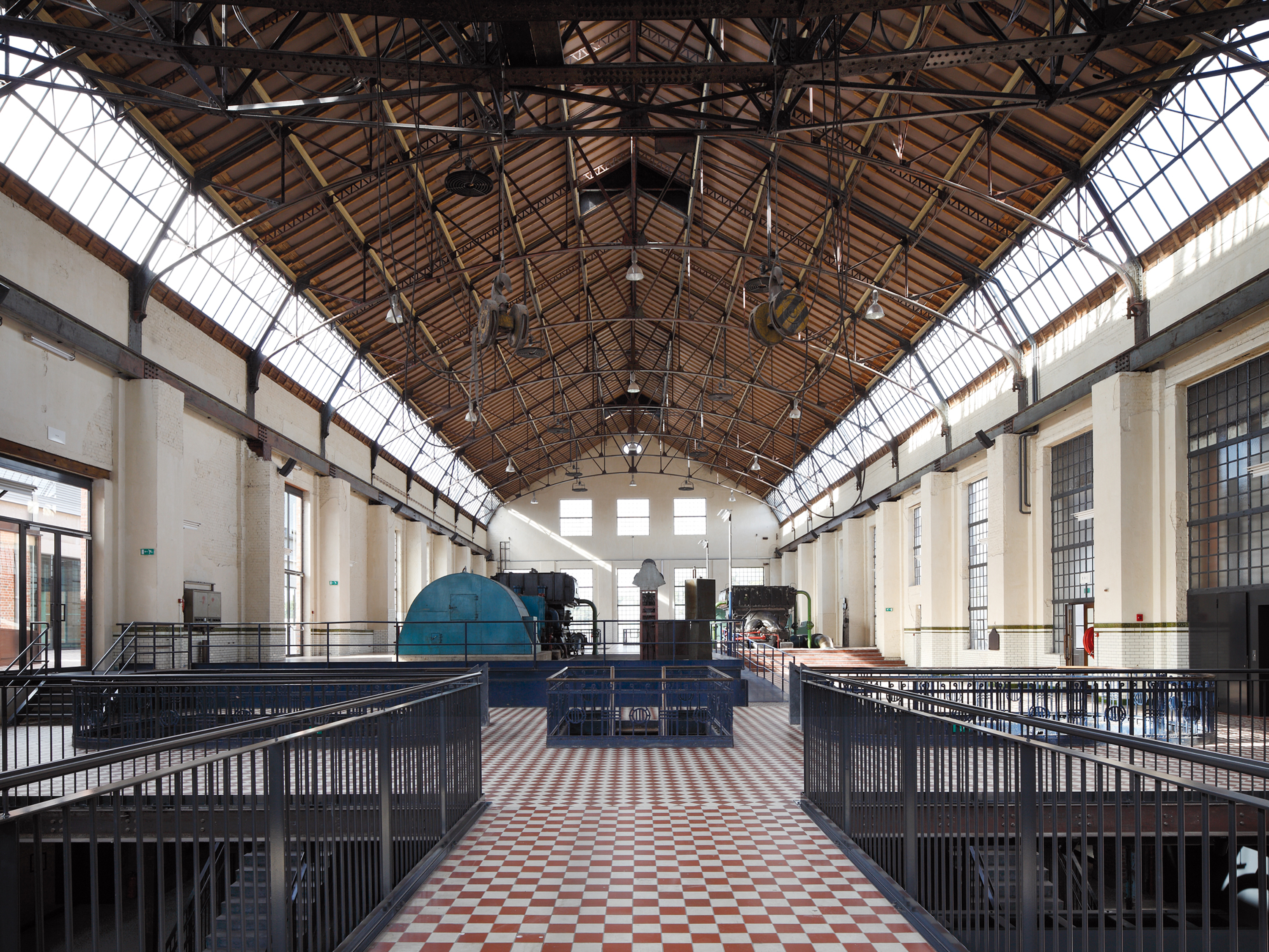
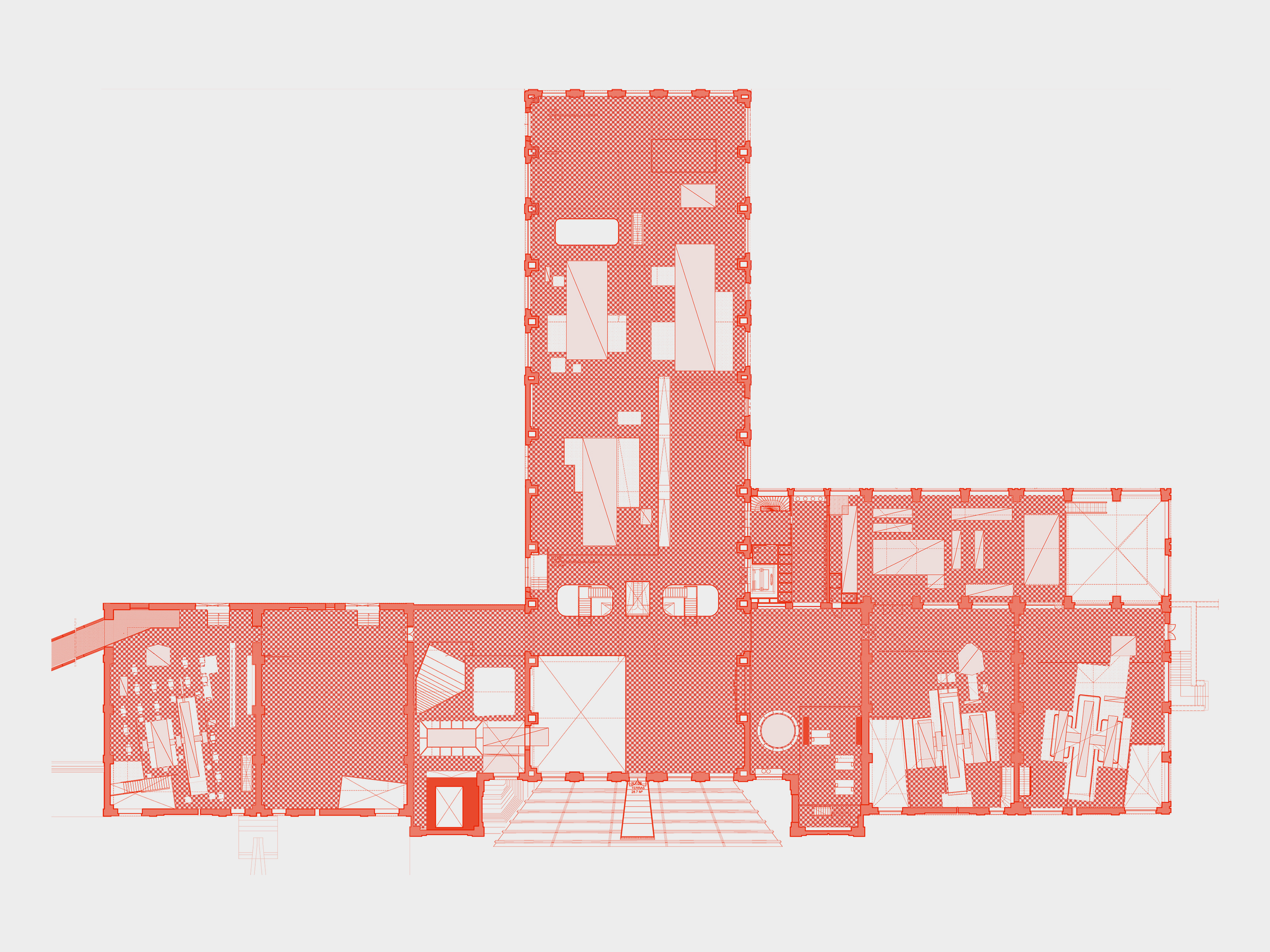
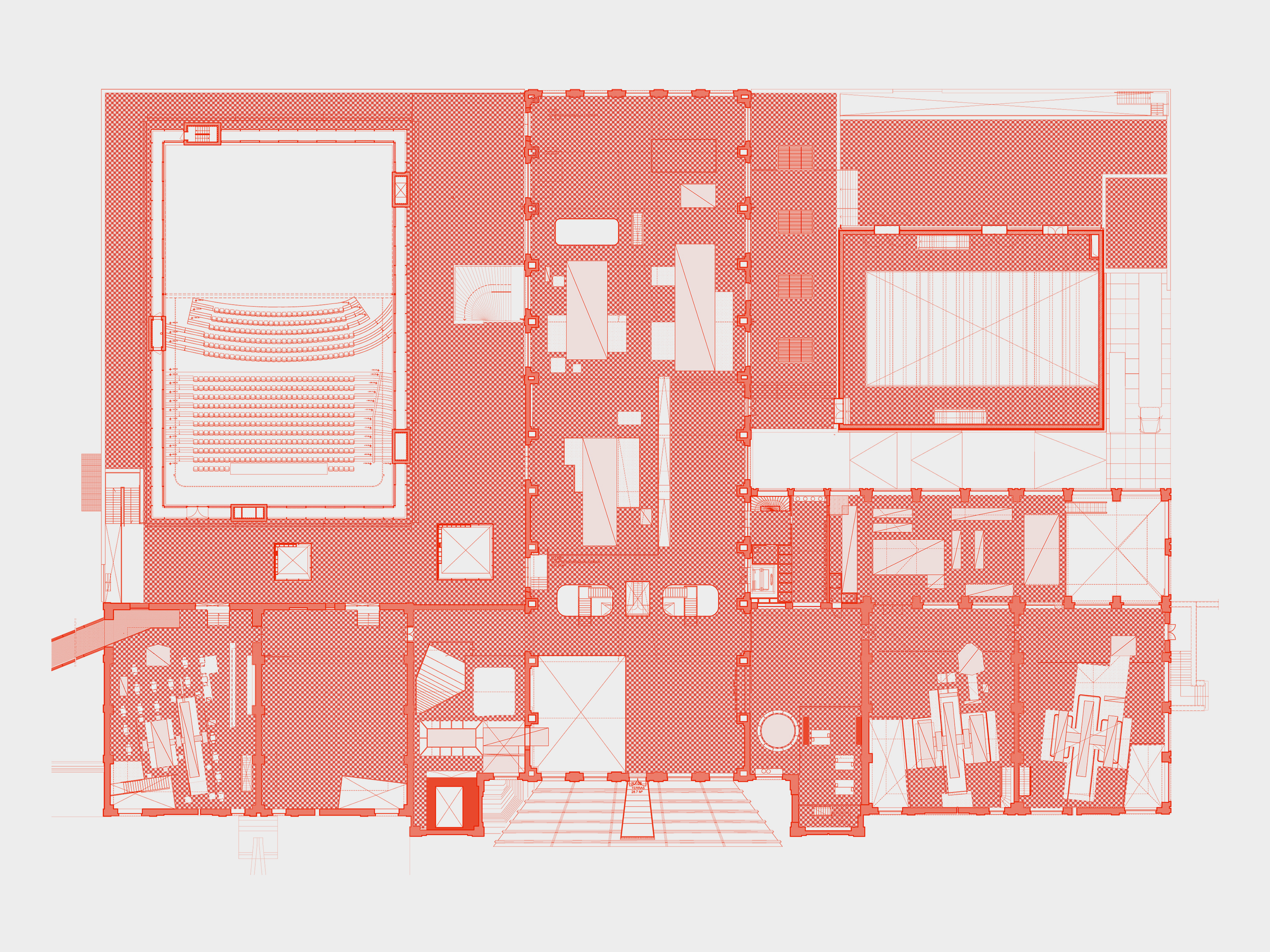
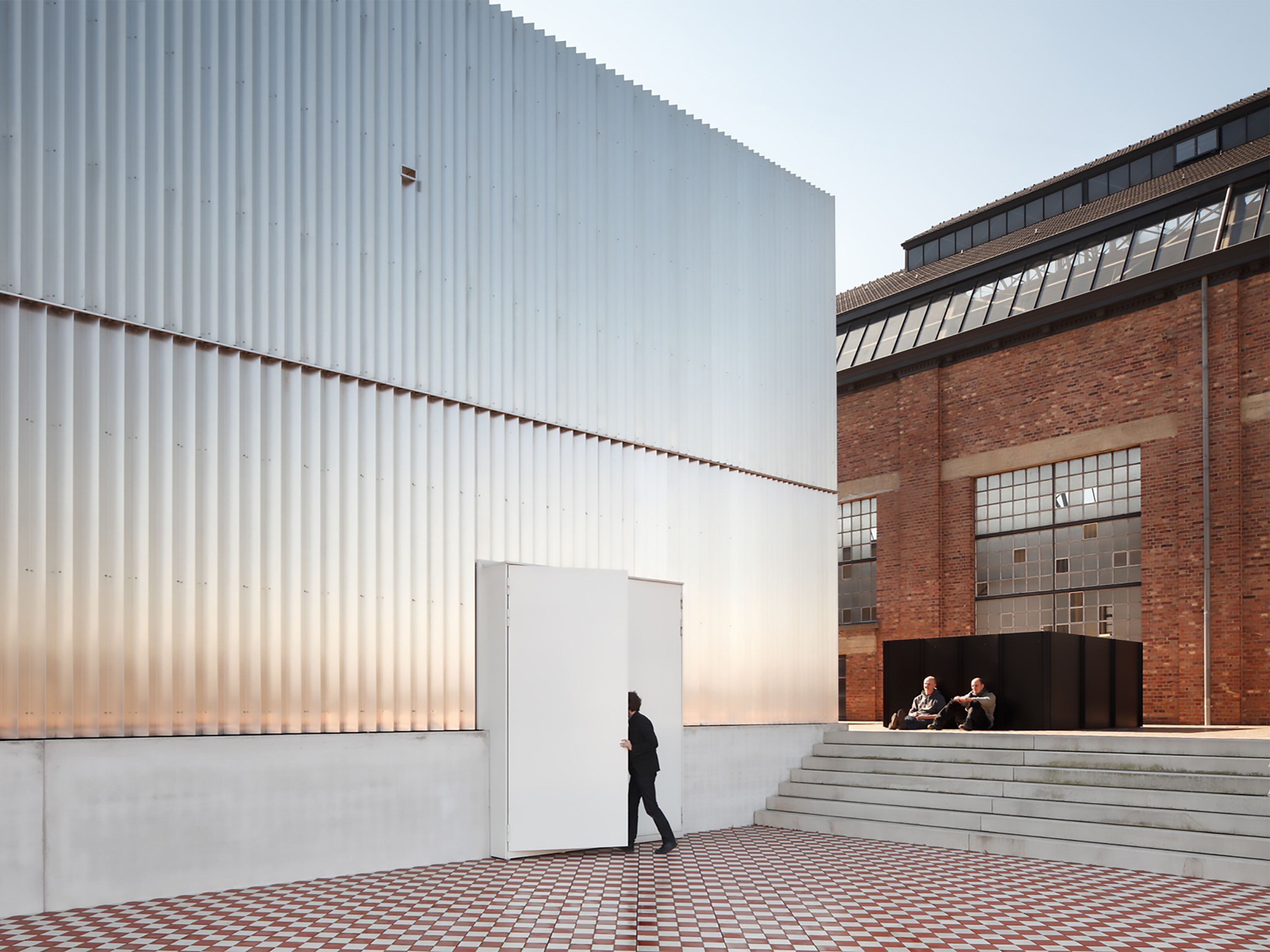
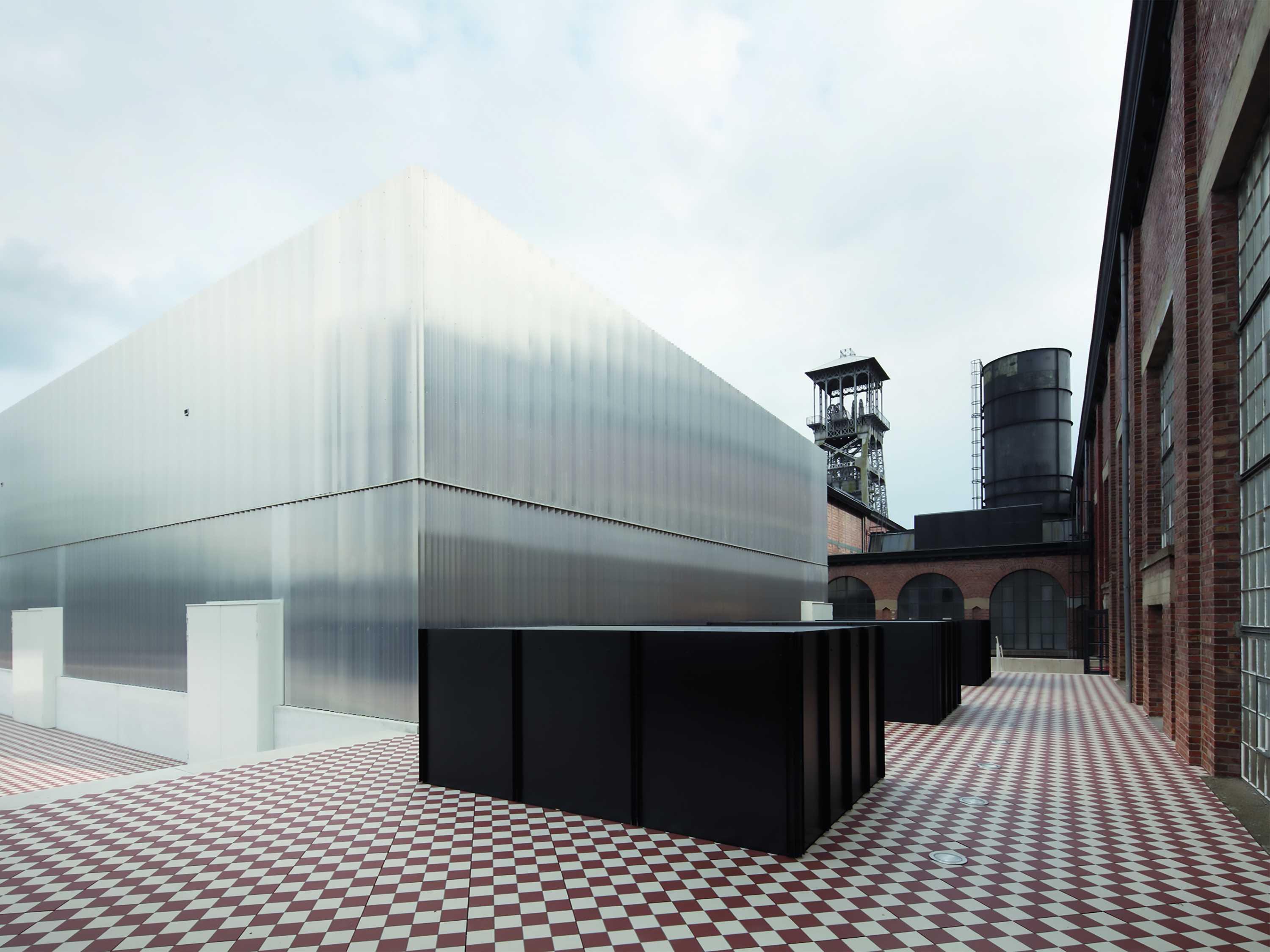

Leaving parts of these historic buildings unprogrammed makes it possible for people to appropriate the space they offer. By doing so unexpected use and fortuitous encounters can take place. In C-Mine, not programming the central lobby on the first floor, allows a multiple range of (unpredicted) uses. Even though the lobby has a very strong character that people can relate to, the occupation of the space remains easy. In this respect, the old building becomes the background for a new podium and meeting place.
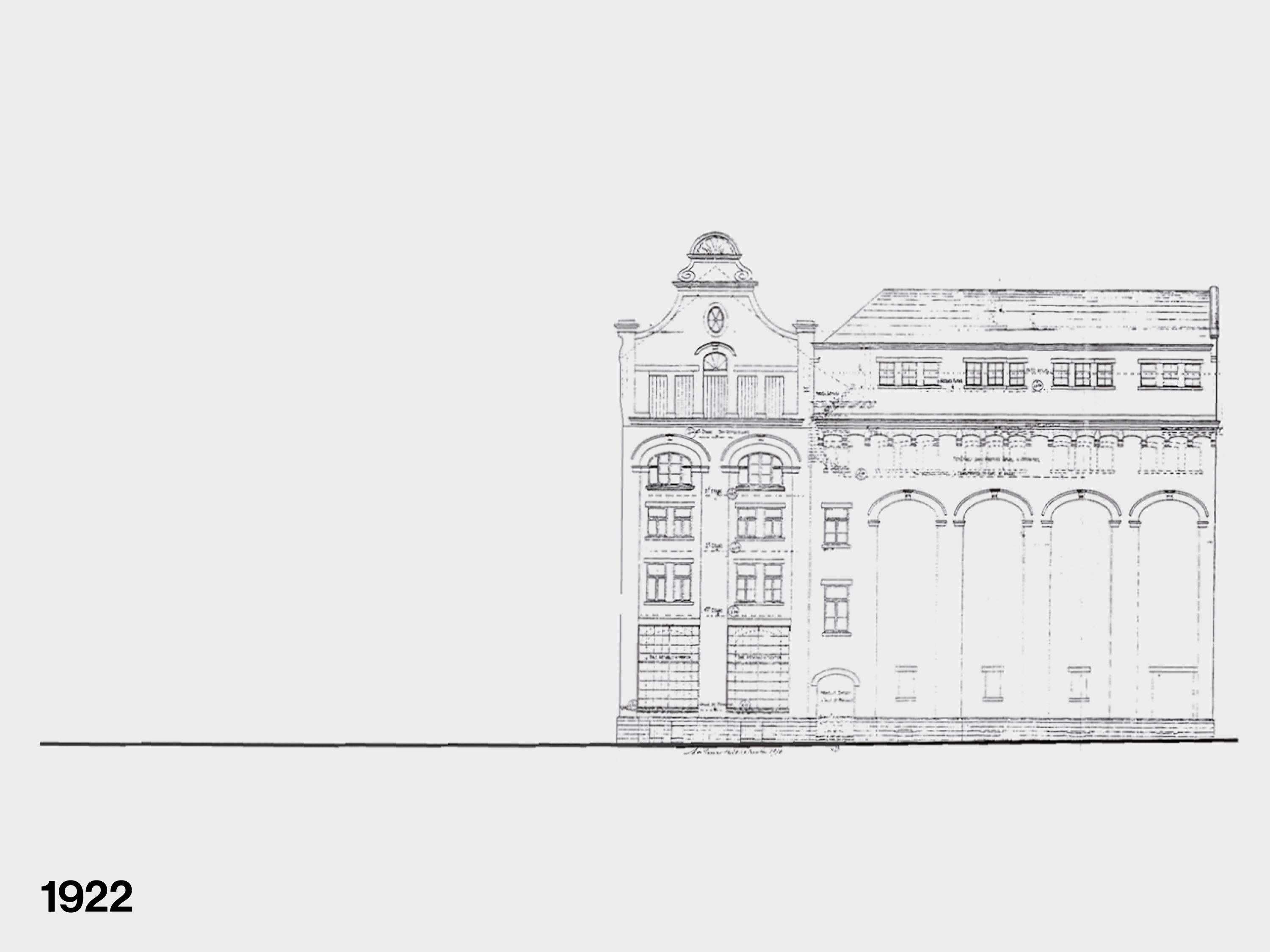
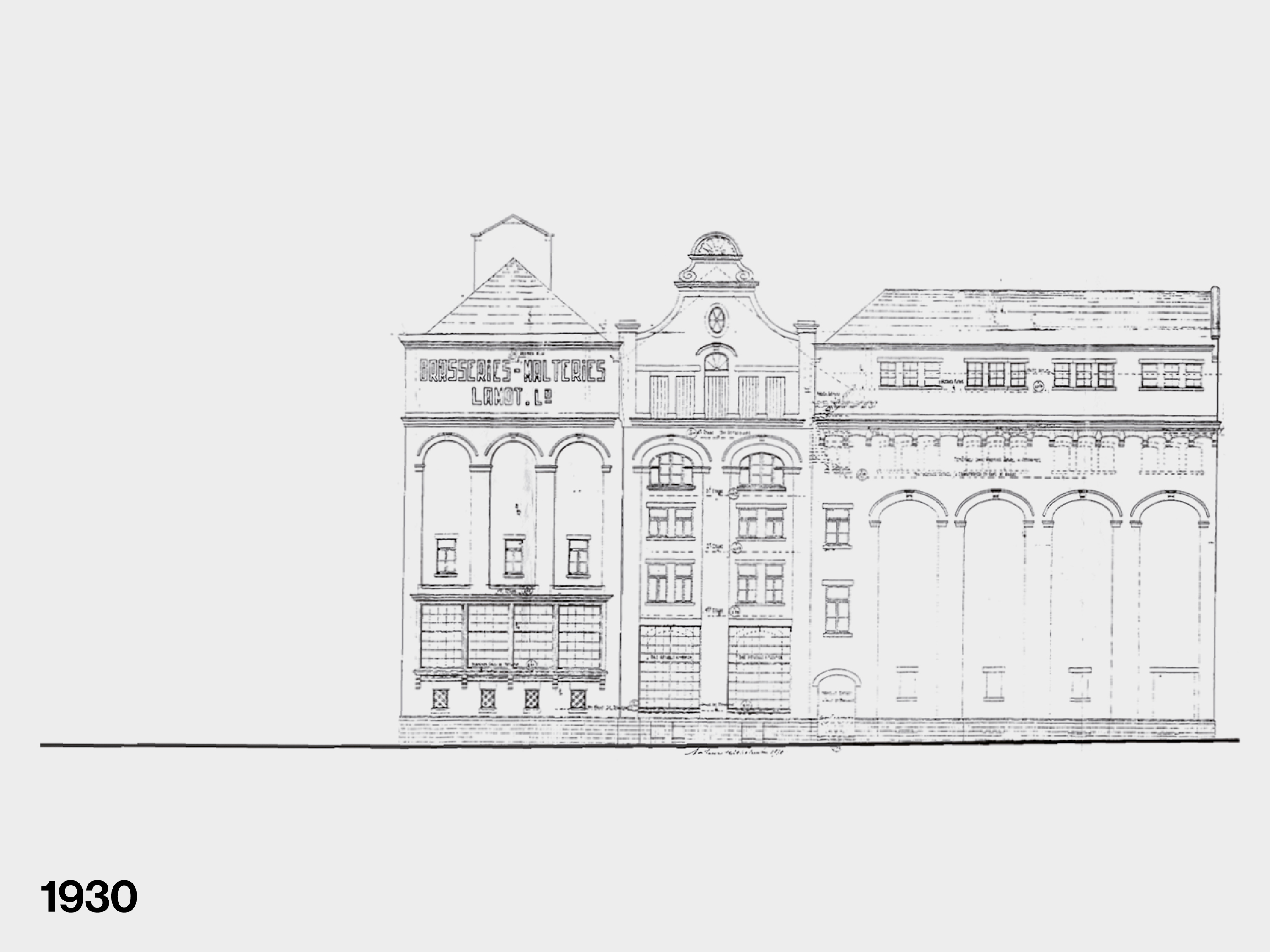


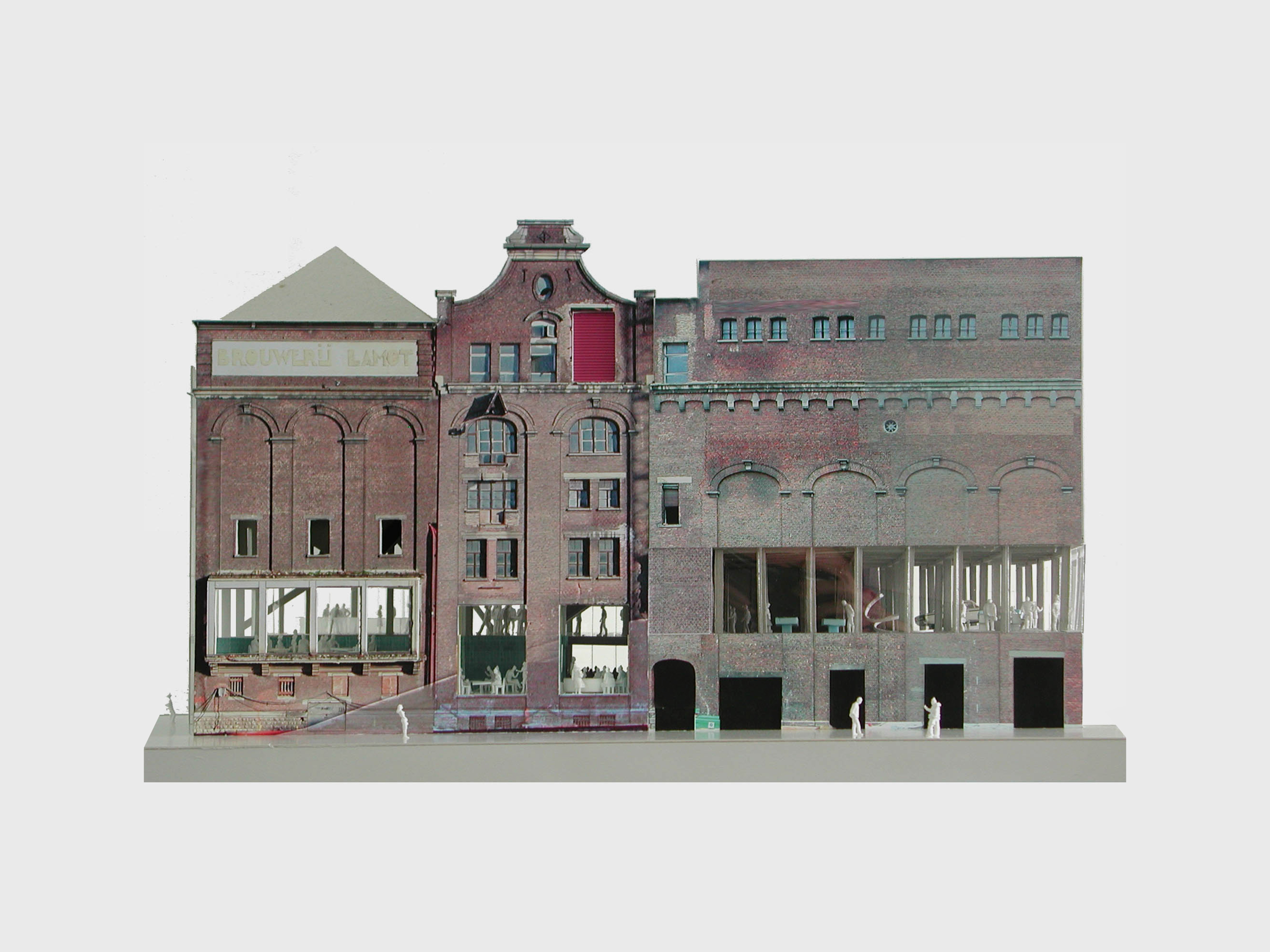

"Tradition is not the worship of ashes, but the preservation of fire." Gustav Mahler
Openness can be the result of an historical continuation, where the building is positioned in relation with its past. This result in projects of refurbishment where the interventions do not cling to the past dogmatically, but rather expresses and shape the new step in the chronology of the building, marking a line between old and new, and negotiating therefore a new use. This is what happened for the former Lamot brewery, where the new use is manifested by the specific interventions in the openings and accessibility of the building, that mark a new step in the life cycle of the building and explore the adaptability of the structure.

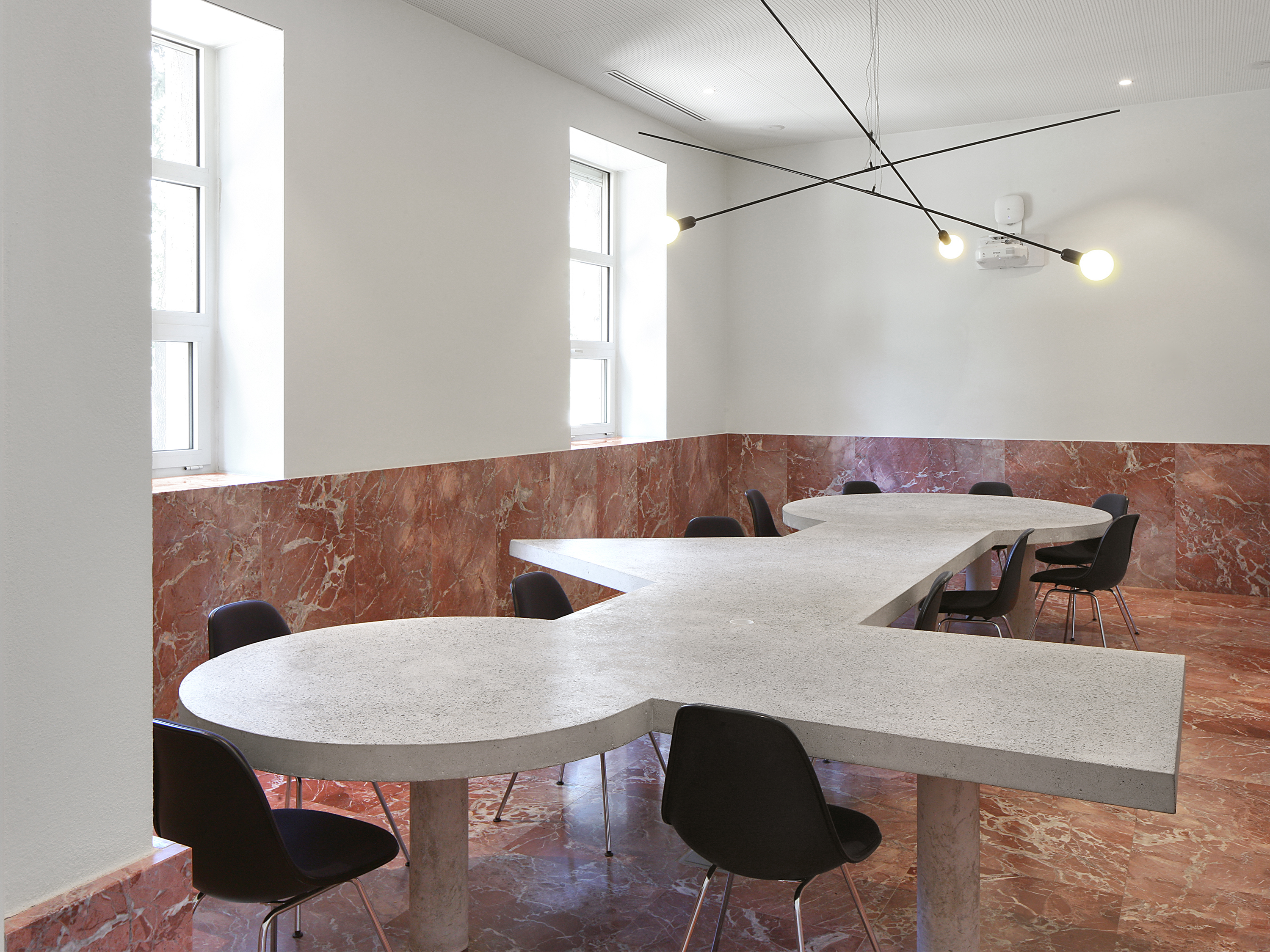
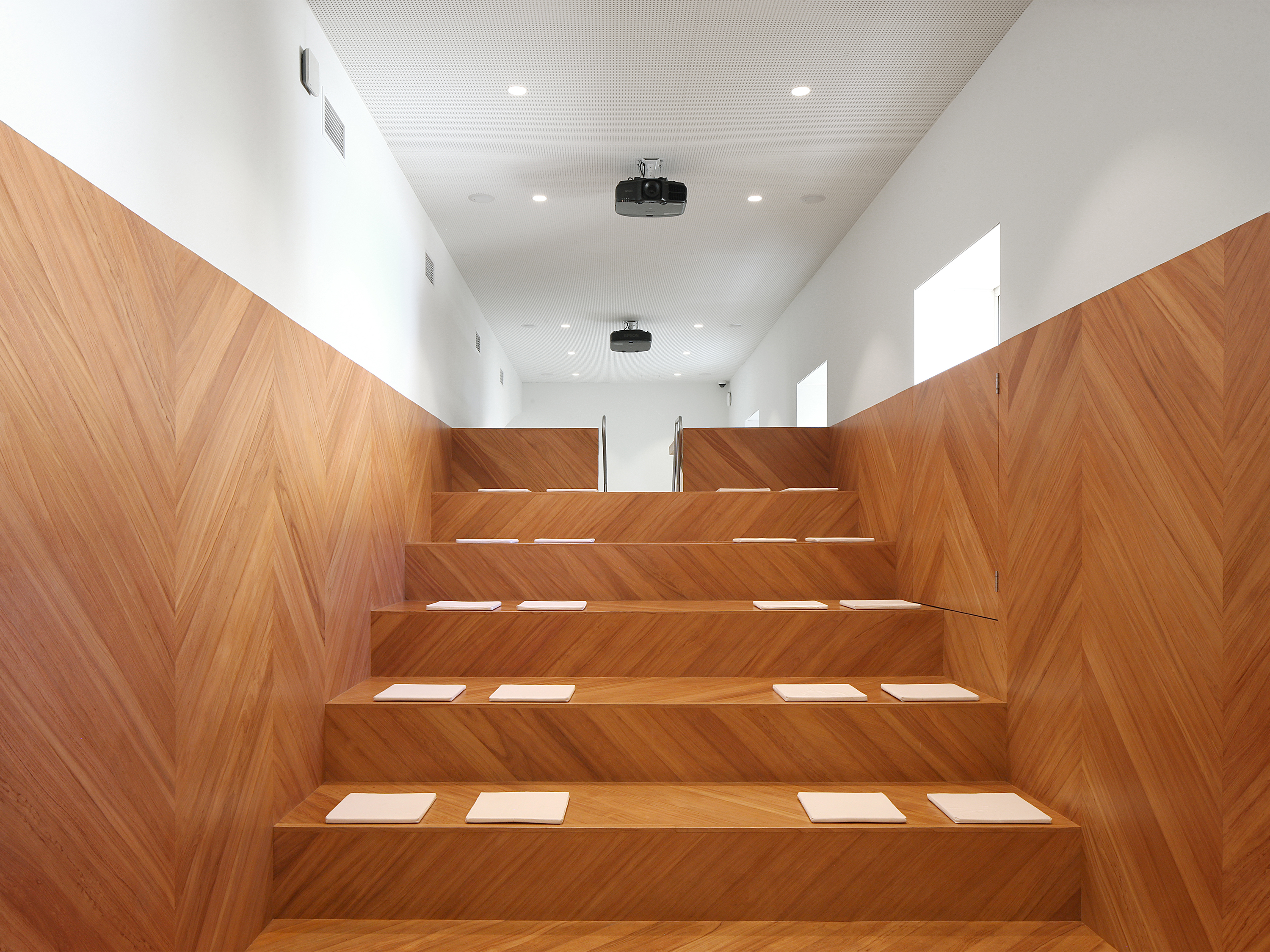

The idea behind the COD is to have an instrument to work with the ambiguity, instead of pretending it’s not there. The COD doesn’t change the openness of the prime minister’s office: it’s a new institution, housed in the premises of the prime minister’s building. These are two different legal entities, which is also why the COD can work with this ambivalence. The ambivalence of the spaces also comes out of this flow, this ming-ling of authors, so to speak, where things were fusing – sometimes resolved, sometimes not. The ambivalence of the space is a way to open it up. Its mixed message creates possible entry points available for everyone
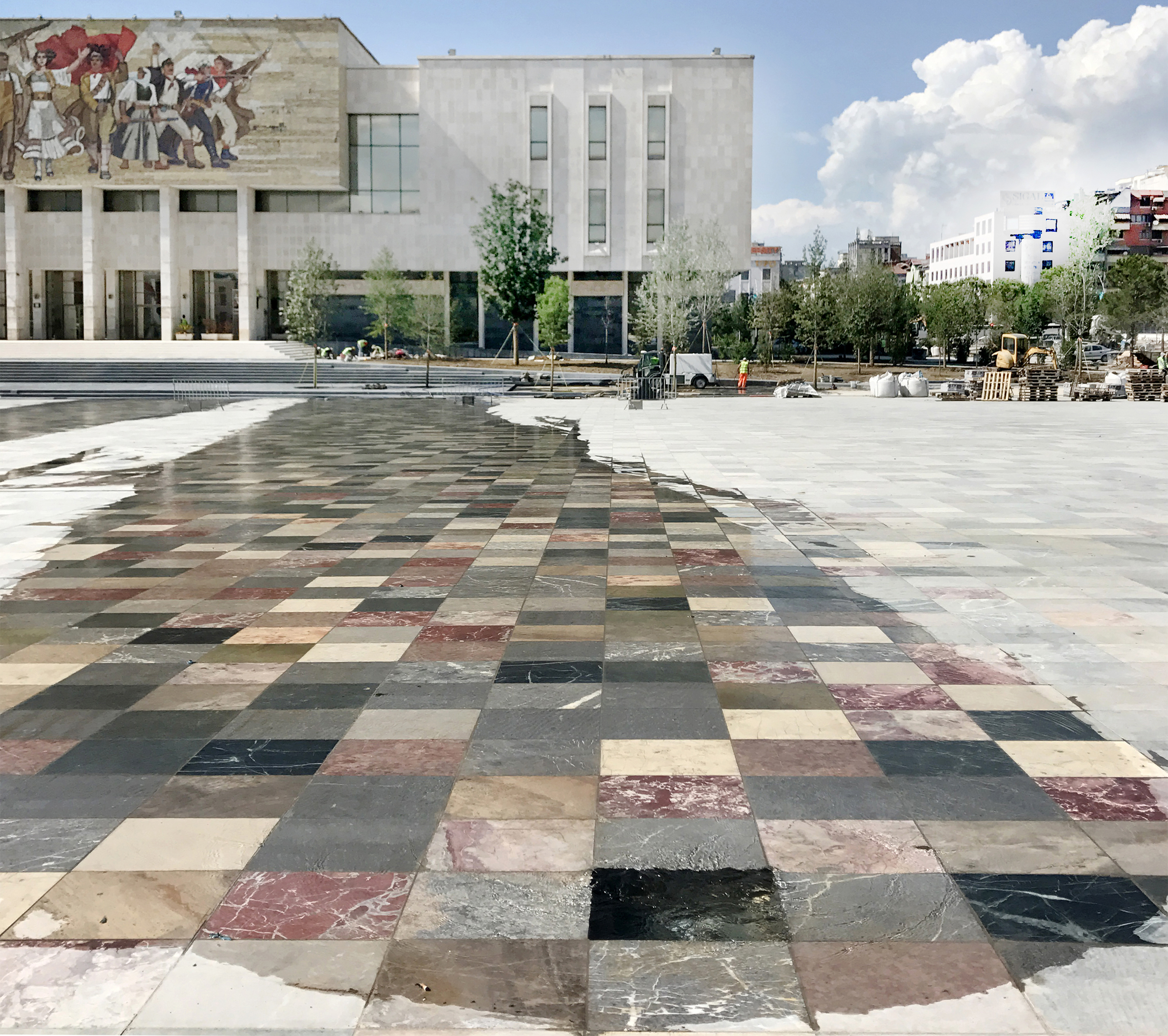




The total surface of the Skanderbeg Square consists of thirty different stone types. Sourced in Albania and thus referring to different areas of the country, they act as a testimony to the region's rich resources. These stones are laid out in a color gradient, creating something that could be called a national mosaic. When the water flows over the stones, the rough surfaces are temporarily "polished", revealing the veins and patterns of the various marbles. The water patches trigger something one could call an intimate moment with the stones.
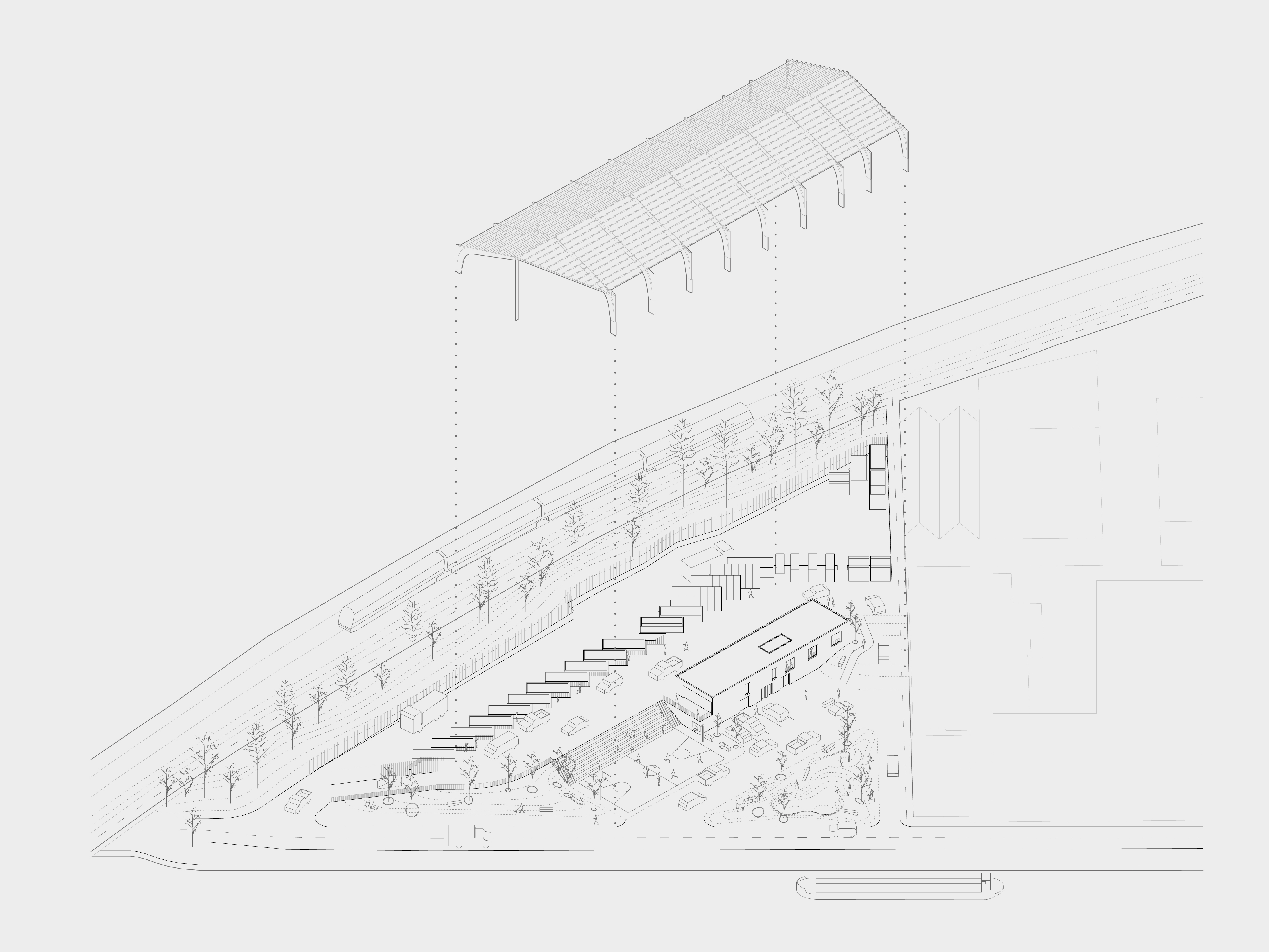
With the existing container parks in the periphery of Brussels reaching their capacity limits, and the ambition of the region to promote a culture of circularity, new container parks are planned in more central urban locations. The container park in Anderlecht becomes in that sense a pilot project, testing conditions for a more urban integration of this type of facility. To lower the mental threshold towards this functional infrastructure, the project proposed a double strategy: to compact the functions of the site to be as legible and as open as possible towards the public space, and to introduce, under the same roof, an urban sports program integrating the site in the network of public spaces of the neighborhood.
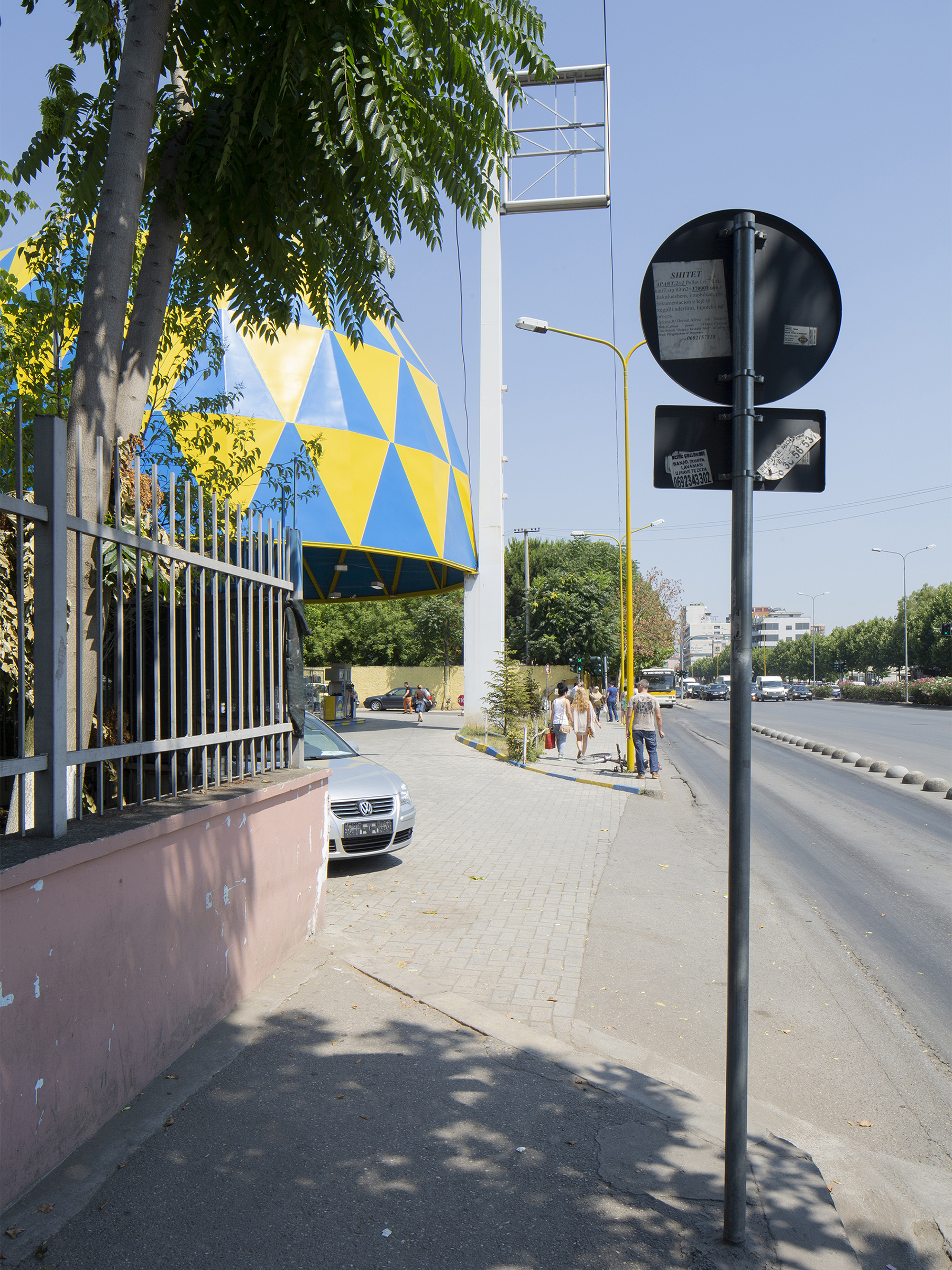
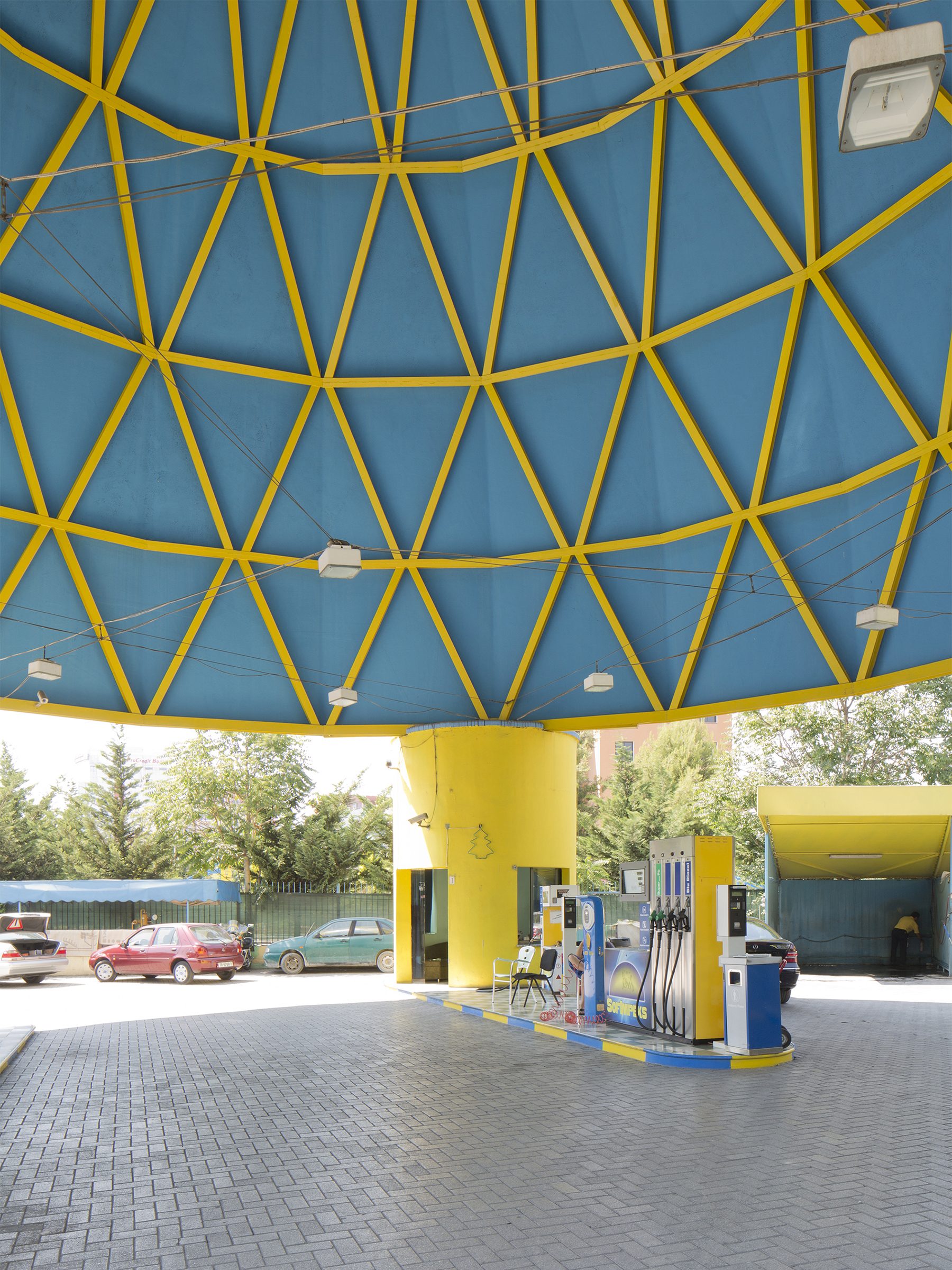
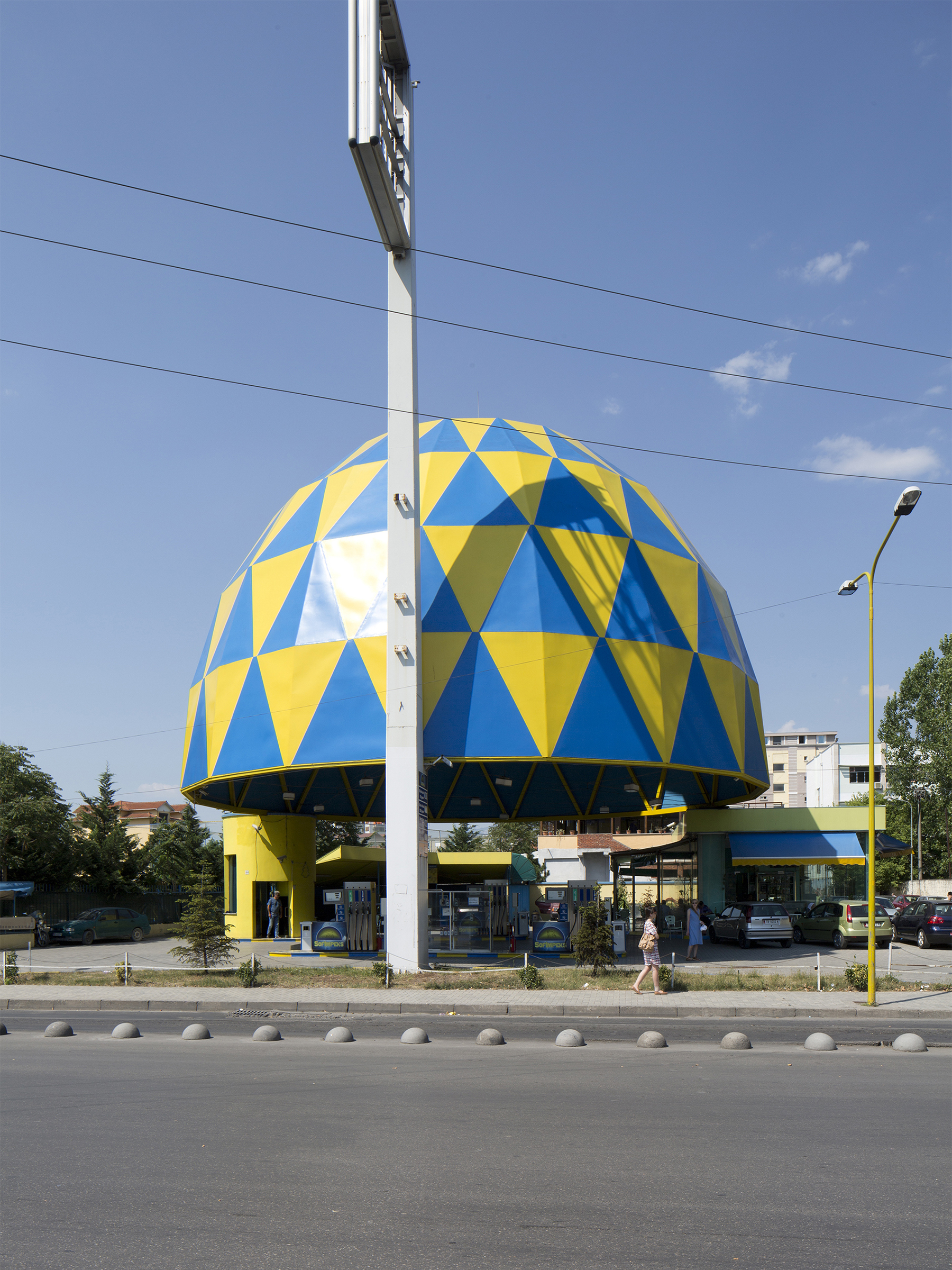

The same kind of urban reasoning drives the design of 51N4E’s Europetrol station situated along the biggest approach road to Tirana from the airport. Held by three supports, a monumental steel cupola floats above a small clutch of petrol pumps. Standing beneath it, you get an intense sensation of being sheltered, a feeling you might expect from a chapel perhaps, but not something as banal as a petrol station. It is a calculated collision of scales and atmospheres indicating that, once again, this project is about transforming a functional environment to provide asylum for a public space that otherwise would have no place in the city.
How to understand different uses, and allow them to come together?
How to understand different uses, and allow them to come together?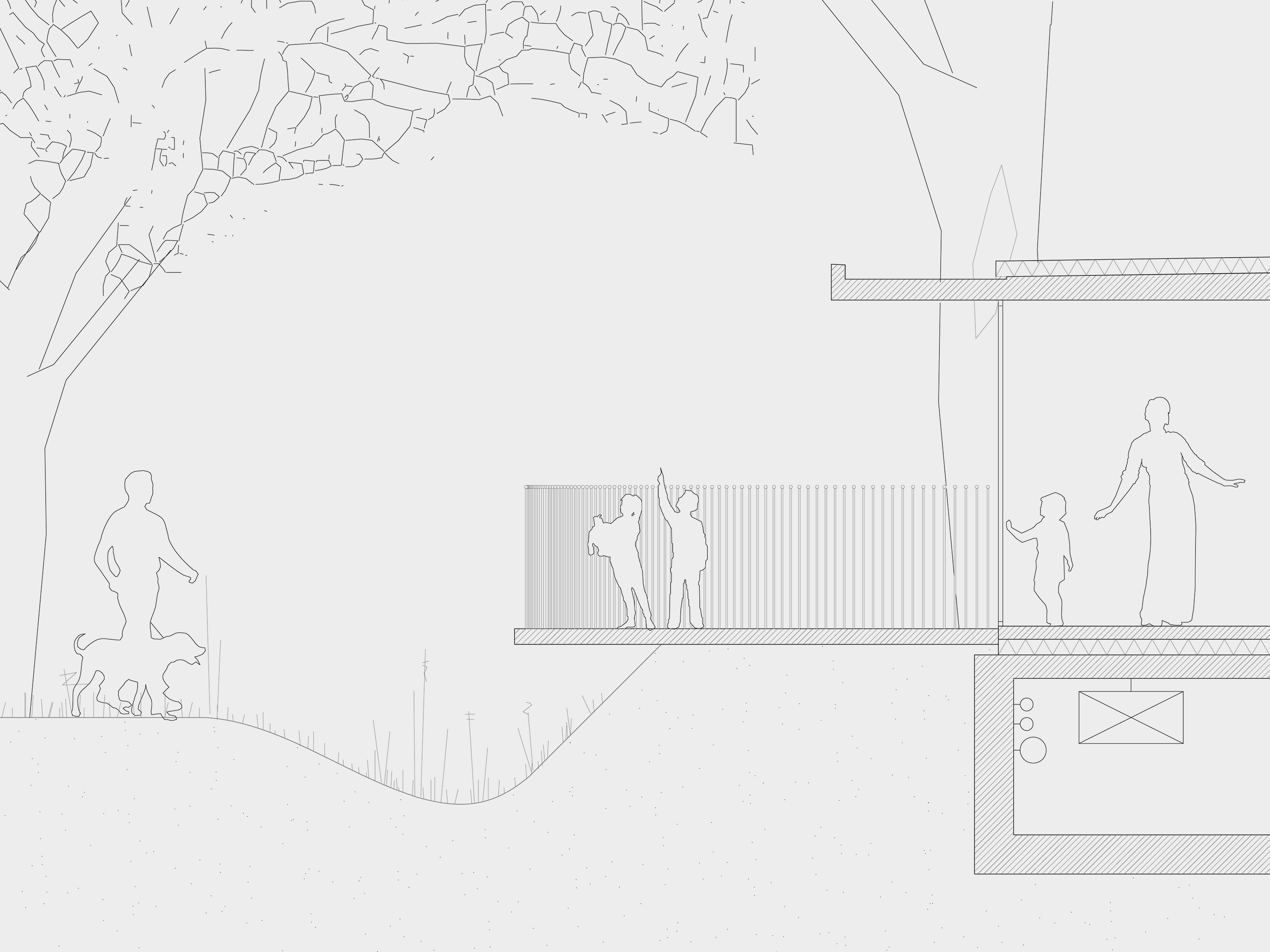
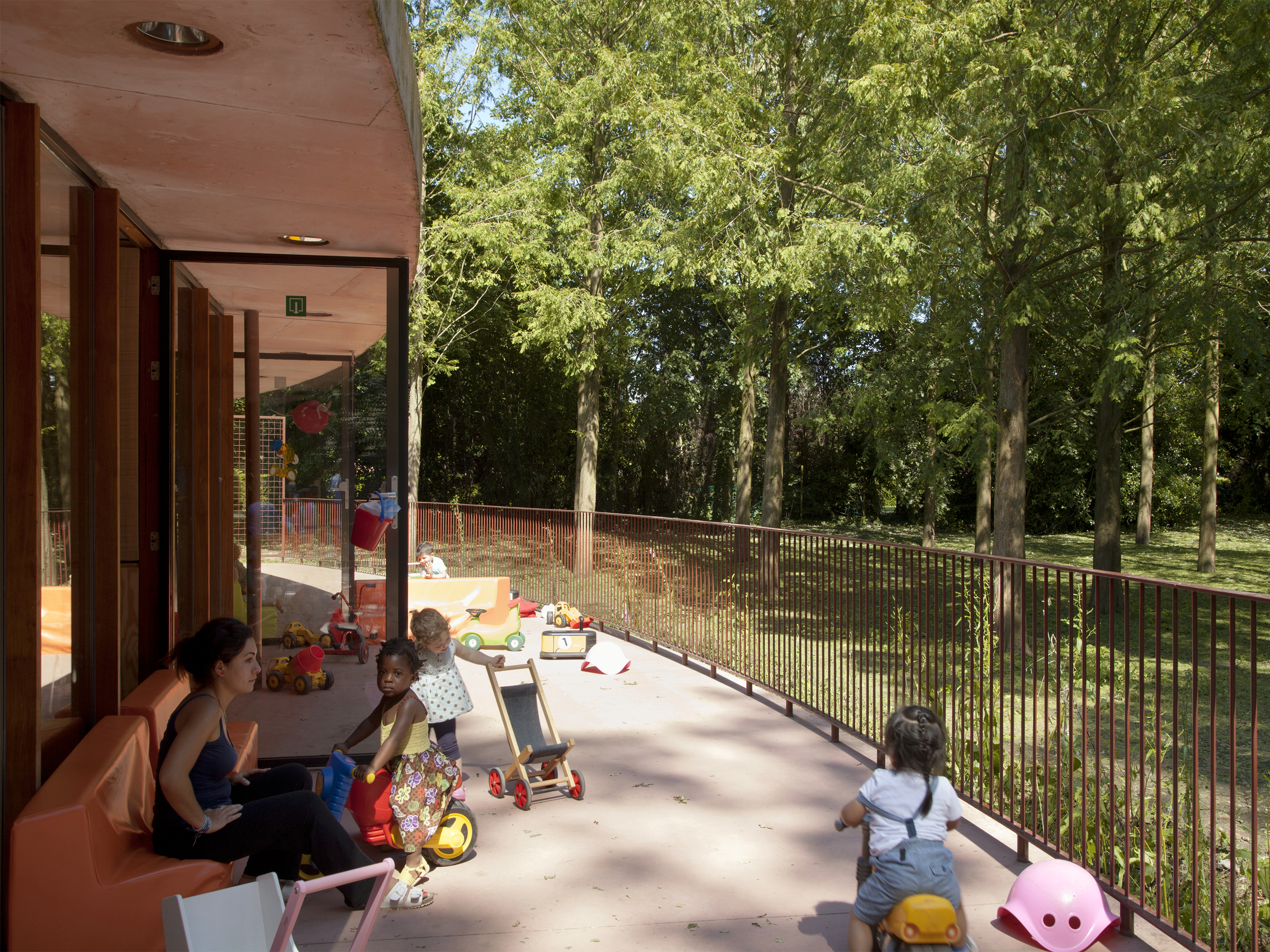
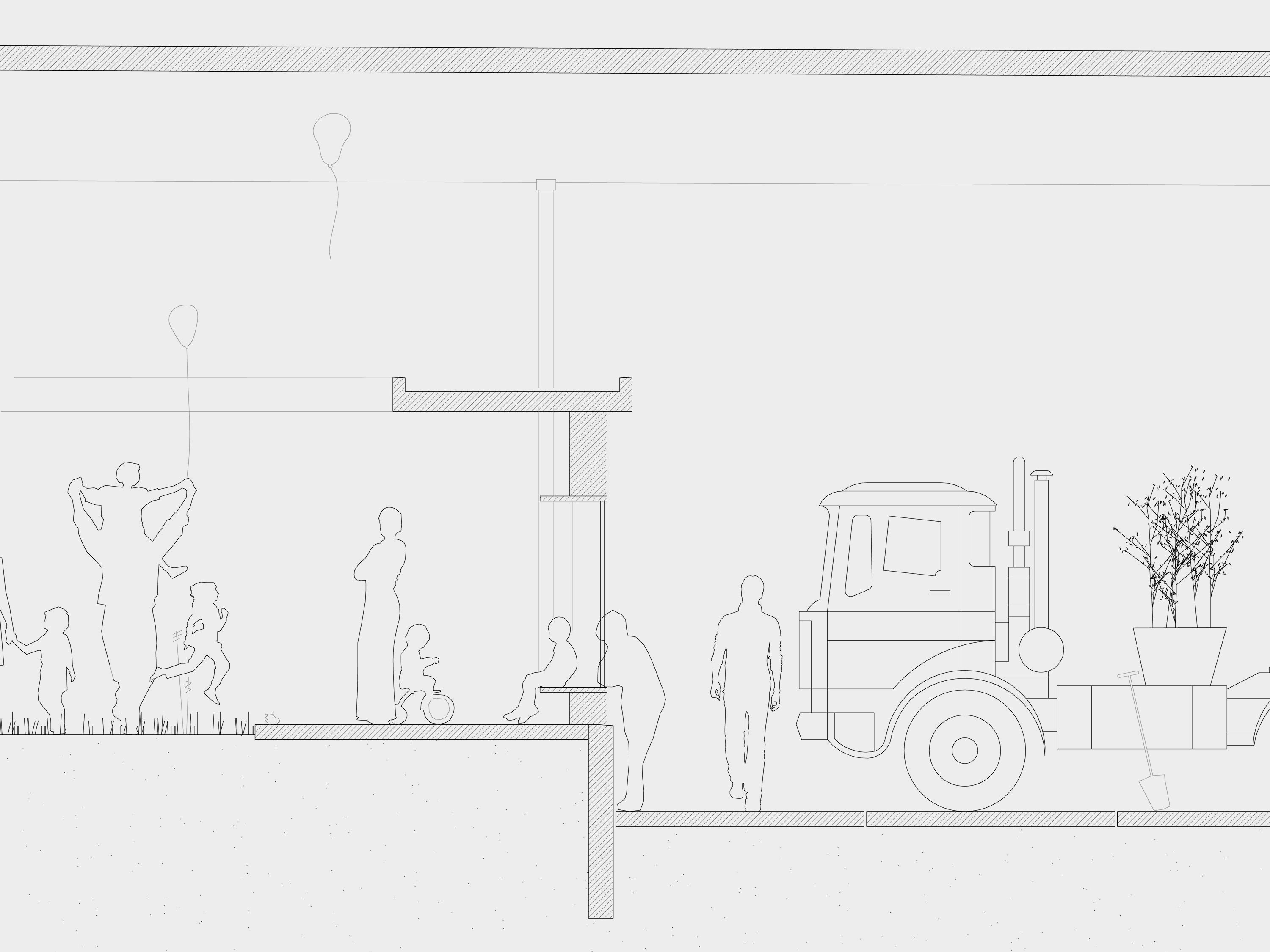
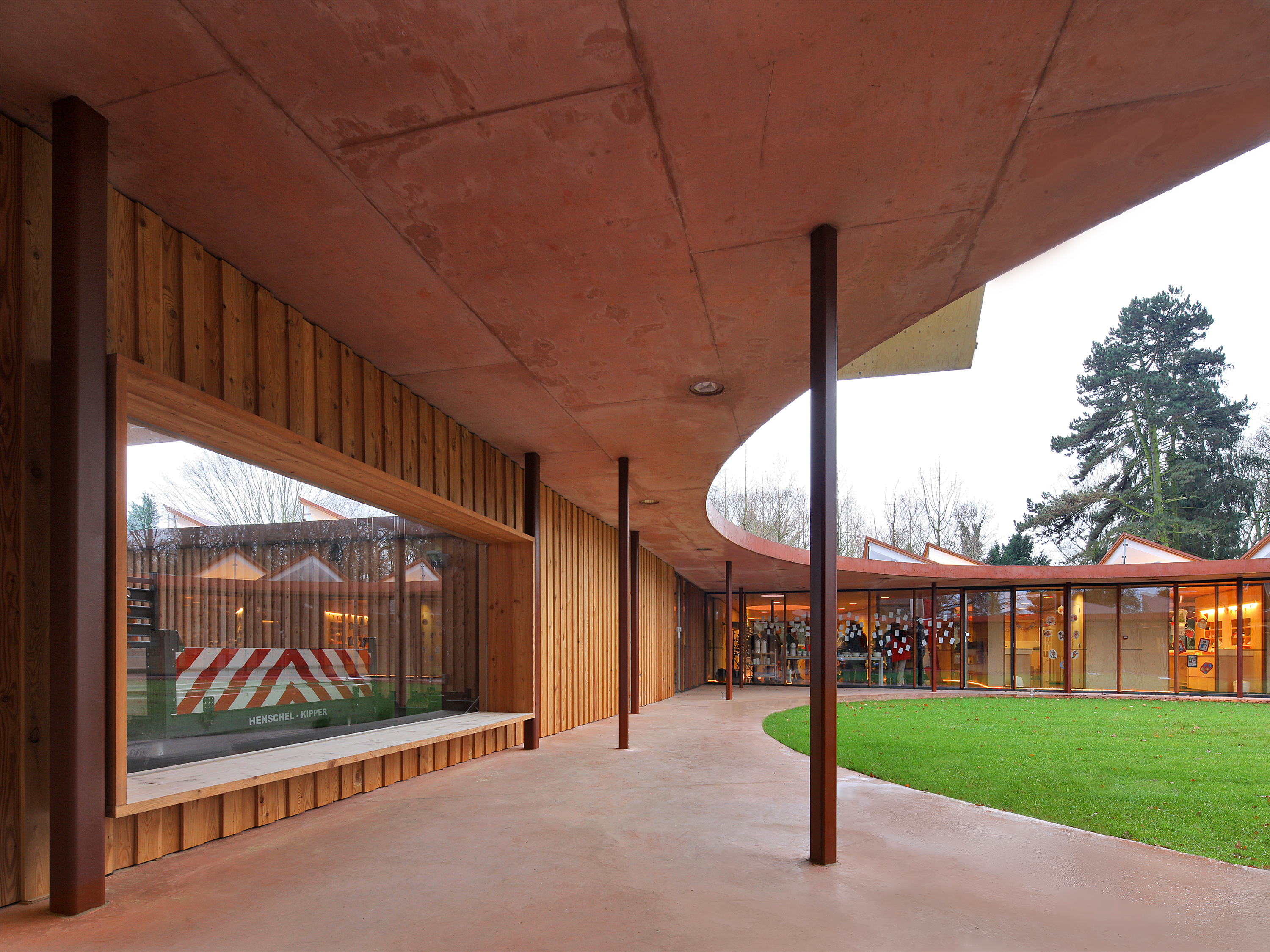

To free up as much park space as possible, the project Speelpleinstraat proposes to integrate the unlikely combination of kindergarten and machine depot in a compact circular building. Organized in a single level around an interior courtyard, the plan minimizes circulation and maximizes the relation between users and with the surroundings. The sharp contrast between the two users is softened by raising the level of the kindergarten thus putting all users at eye level, only separated by a glass wall. Seen from the outside the raised level detaches the building from the park, allowing to avoid a tall wall so that the greenery can flow freely around it.
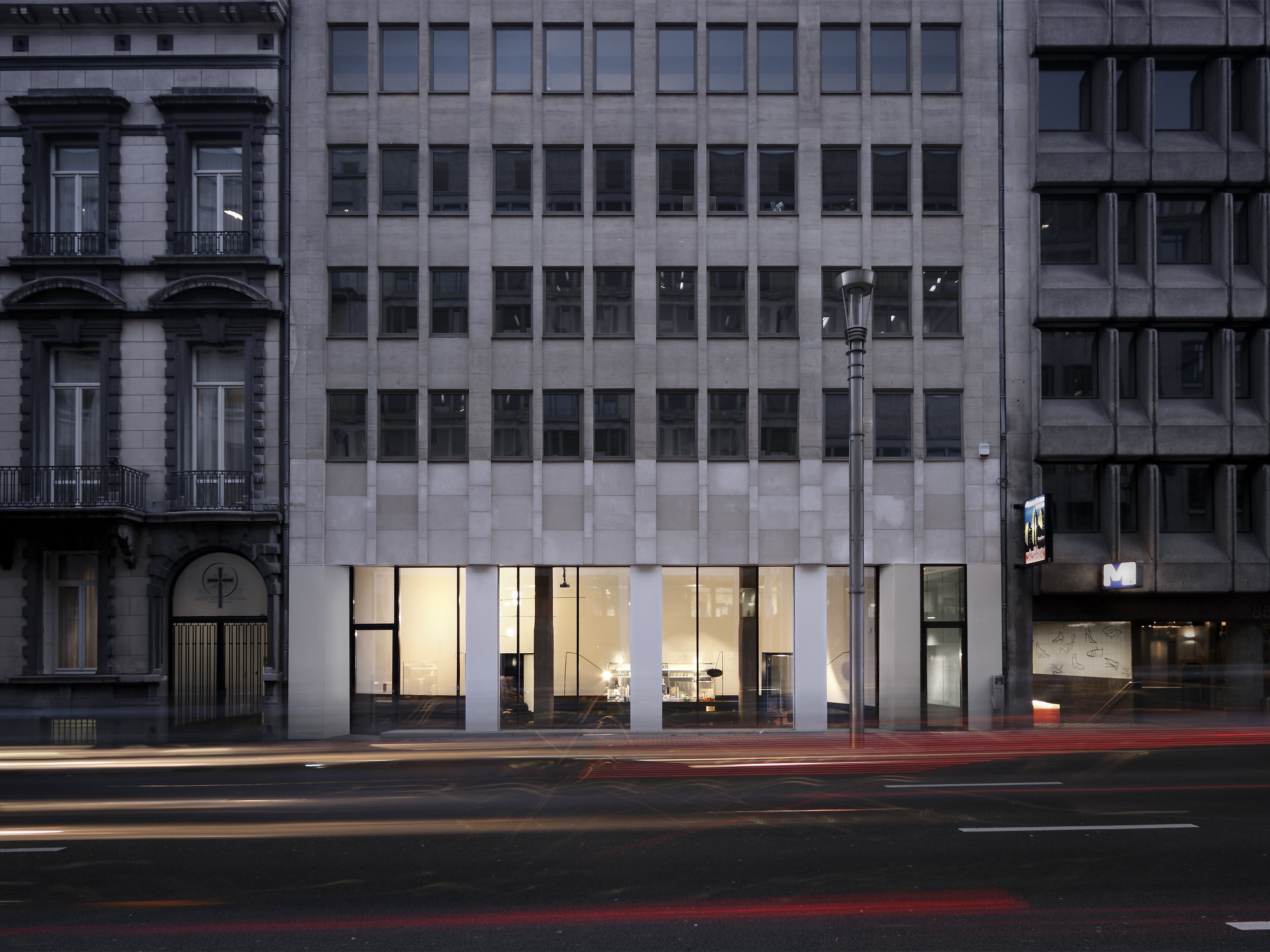
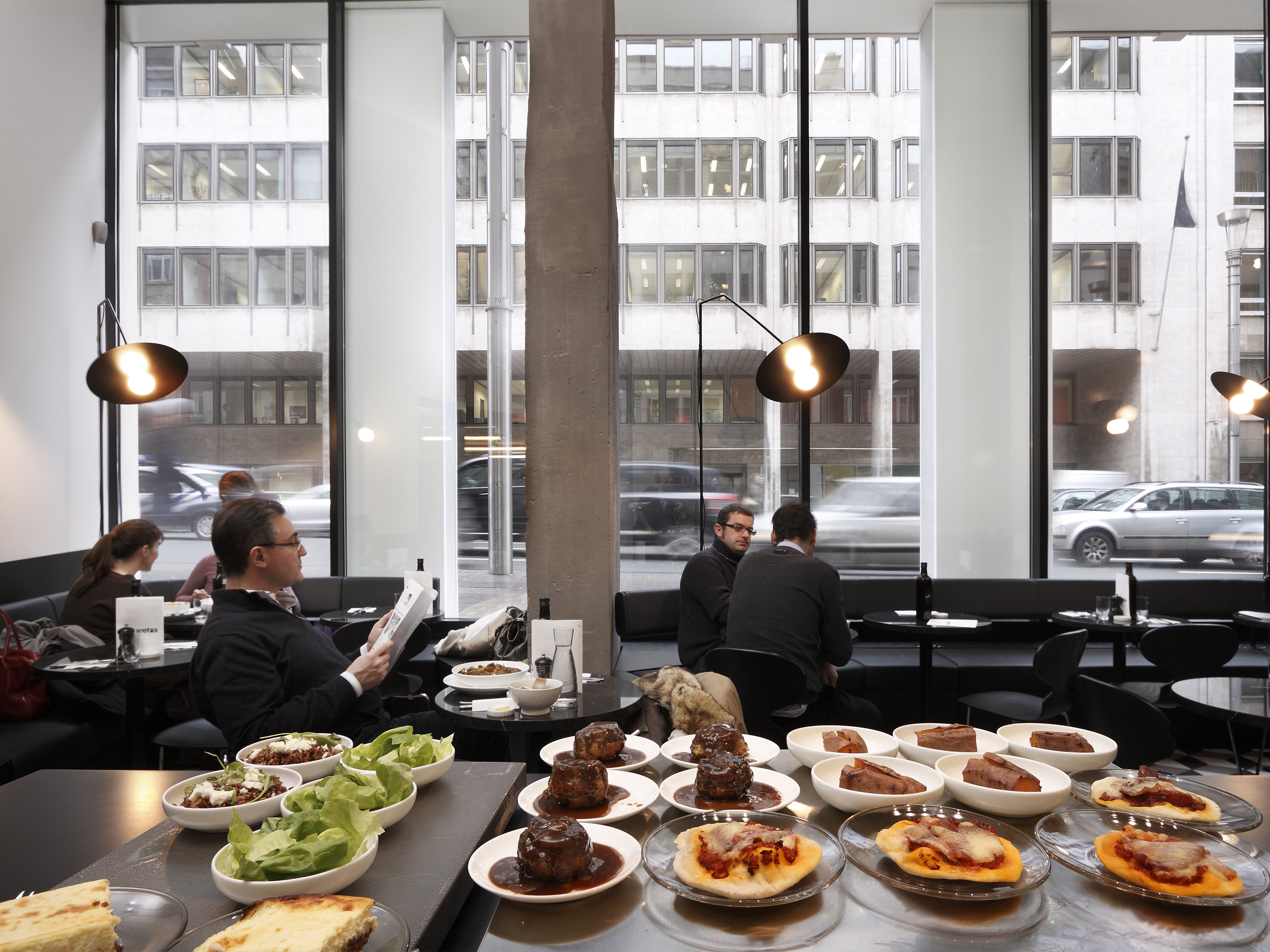

On the Rue de la Loi, Brussels’ busy entrance in the heart of the European Quarter, is WET89. On the ground floor level of the building, a small public facility - a café - was added to the program for high-end office spaces renovation for the headquarters of CD&V. Its design is intentionally neutral from party identity, to offer a welcoming urban spot in a street dominated by speeding cars and devoid of urban life. The double-height performant glass façade makes the slightly sunken space at once public and intimate, visually connected and acoustically separated from the boulevard.
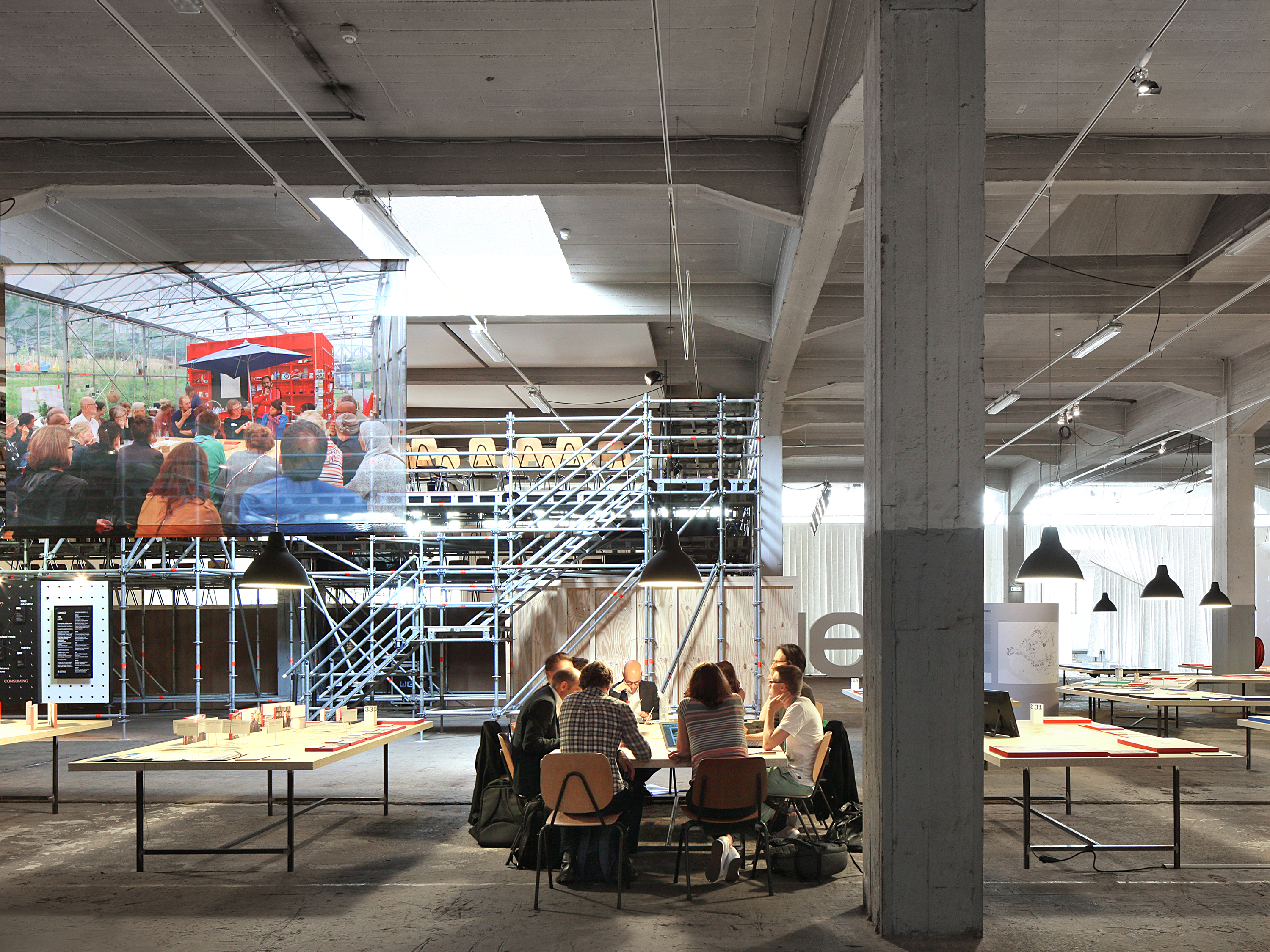
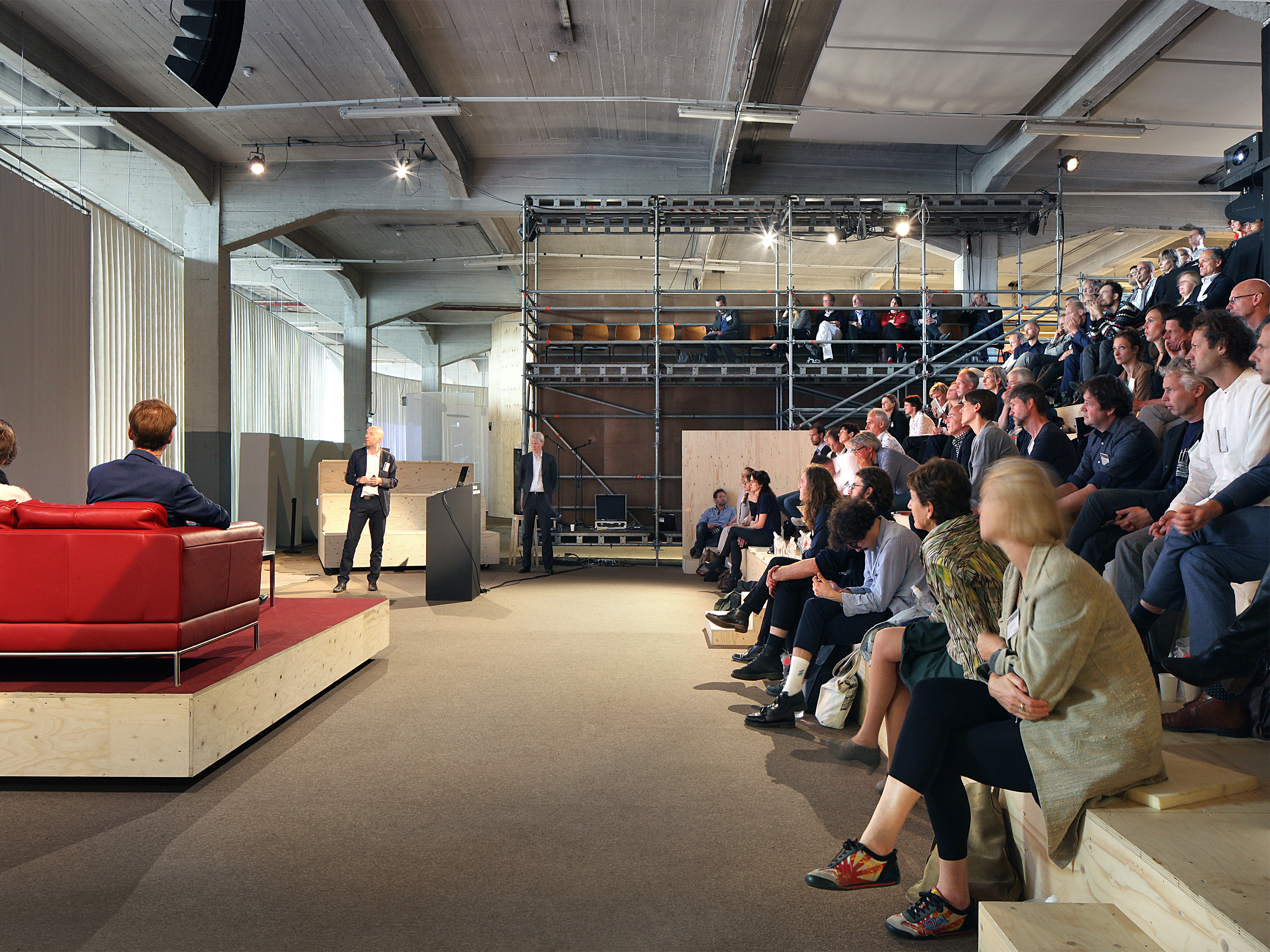
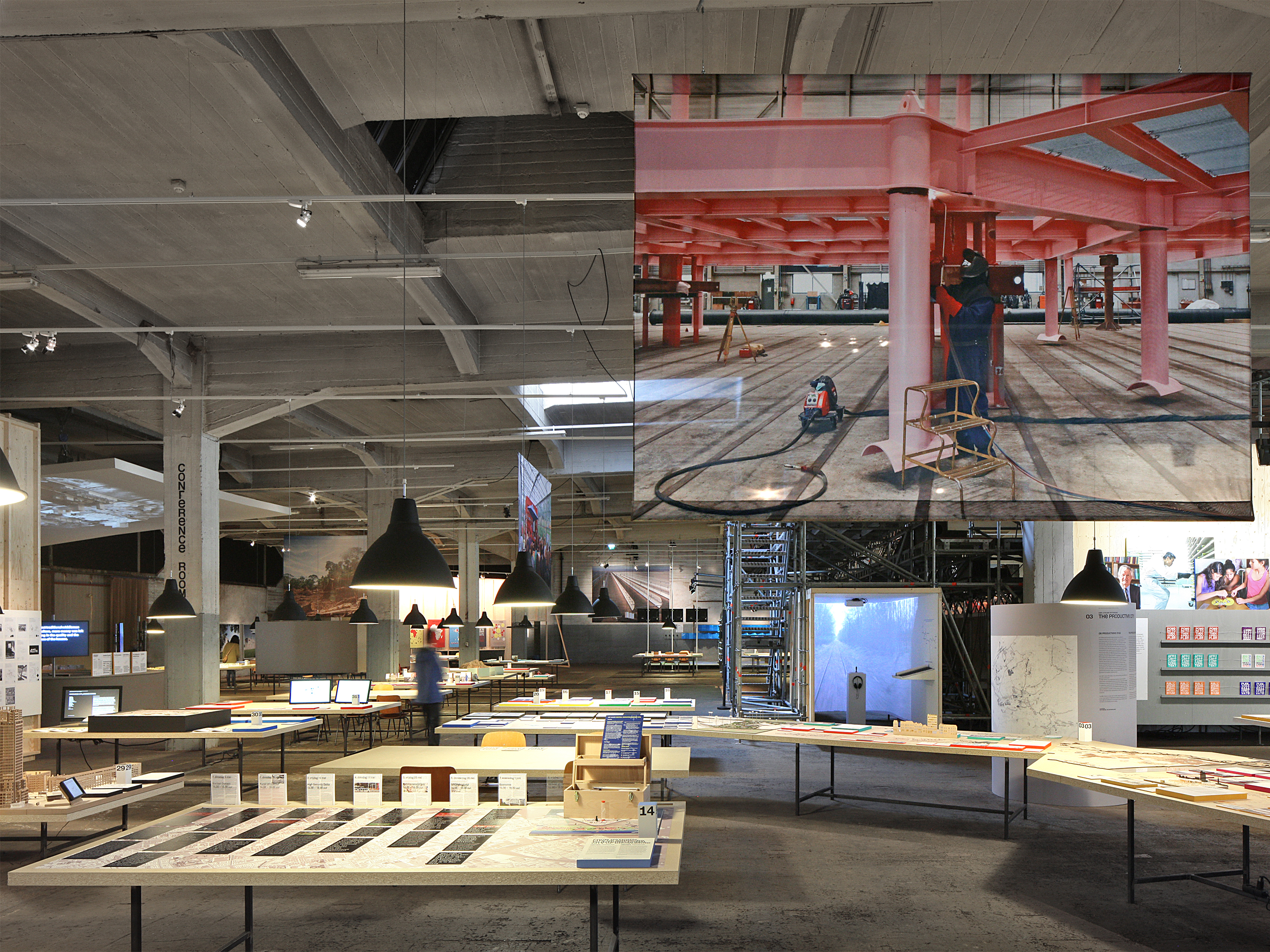
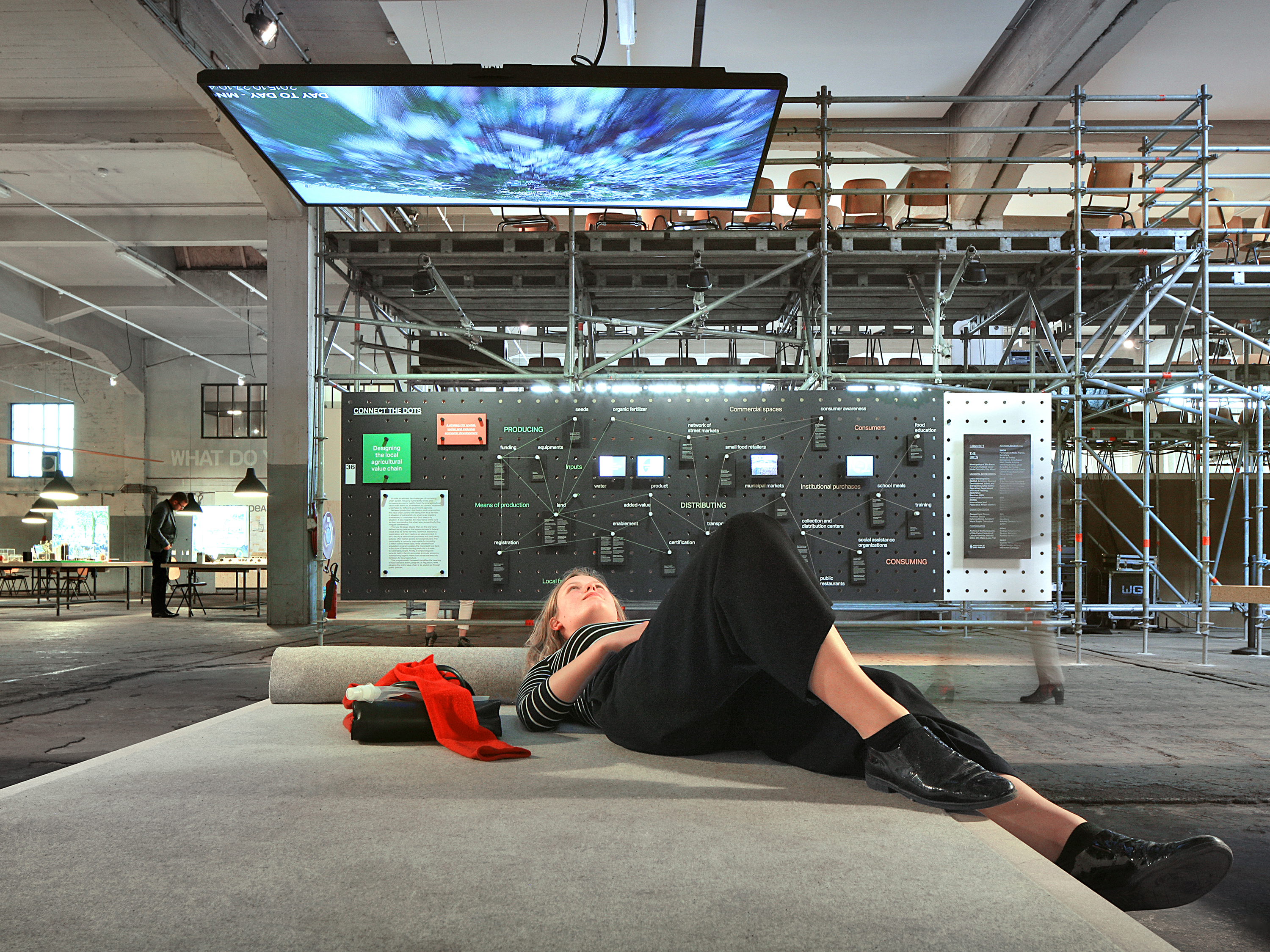
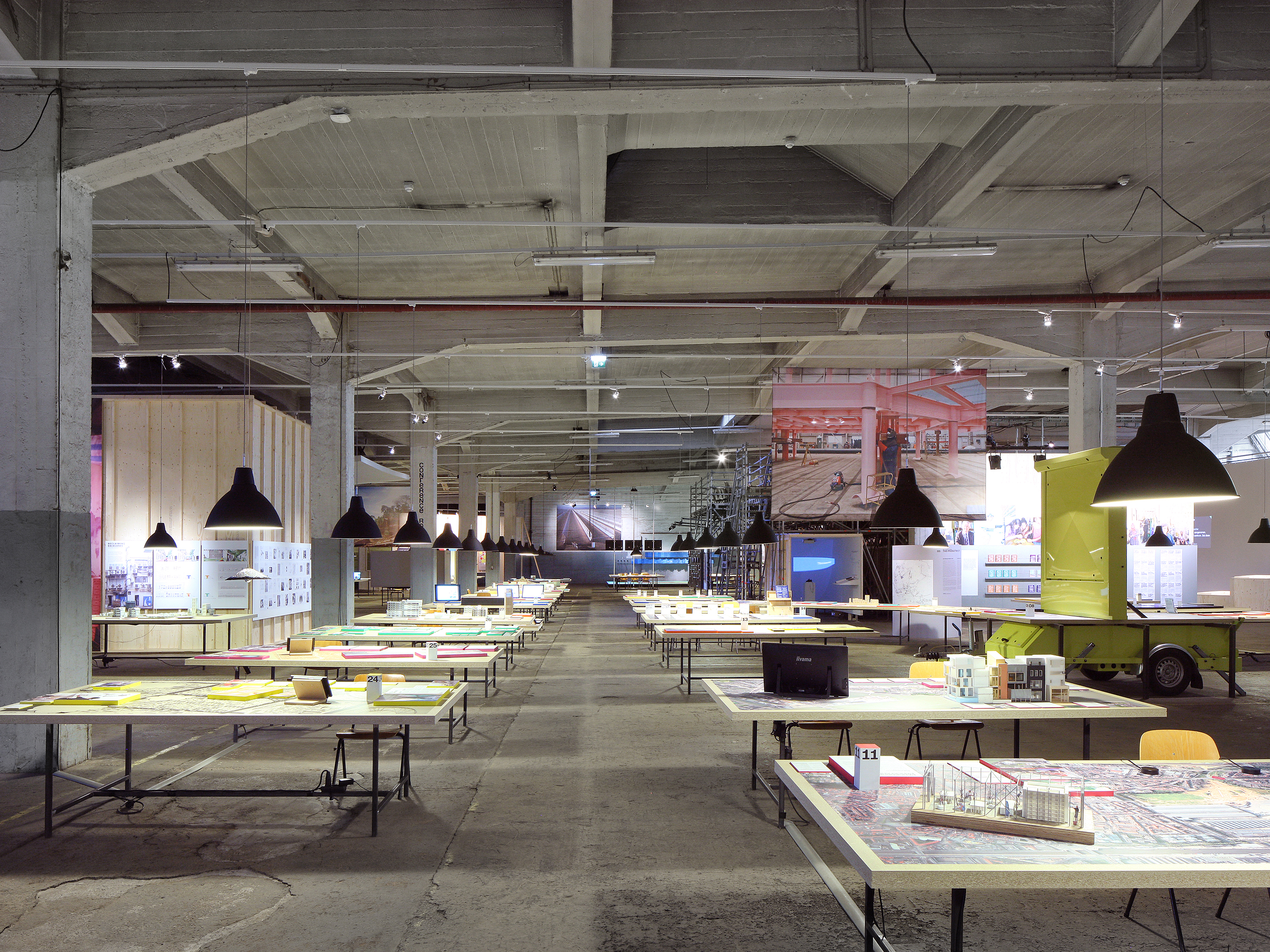

In this exhibition, there is no imposed route, the visitor moves freely between a landscape of tables of the same height allowing an overall view. Chairs can be moved according to each person's interest, allowing a deeper understanding of a particular subject. Other components of the exhibition, empty tables, a tier and two closed spaces make room for discussion and exchange. These empty spaces allow for reflection, appropriation and participation in the content so that the exhibition is no longer unilateral. Visitors debate, present their ideas and thus participate in the development of the exhibition.
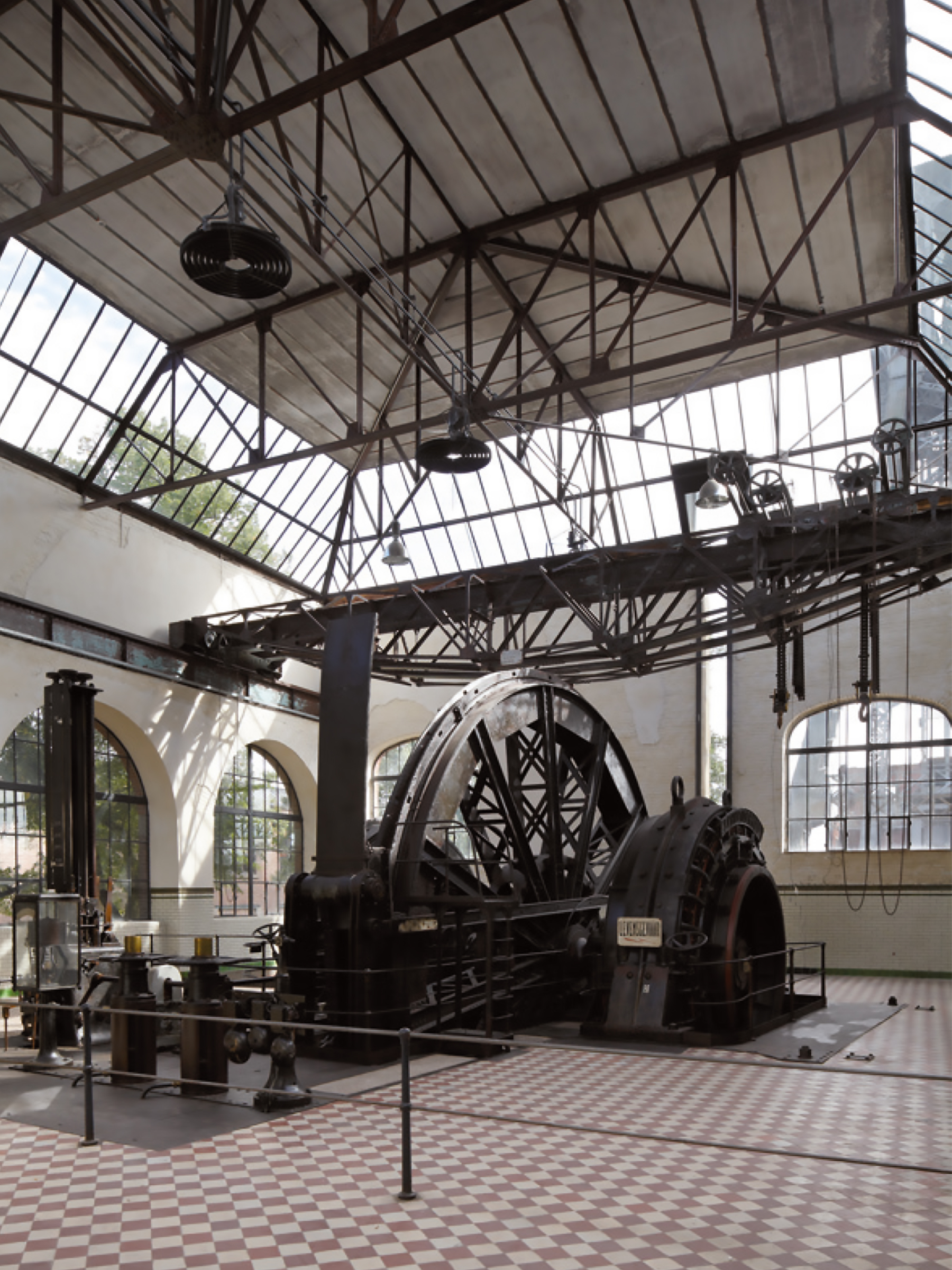
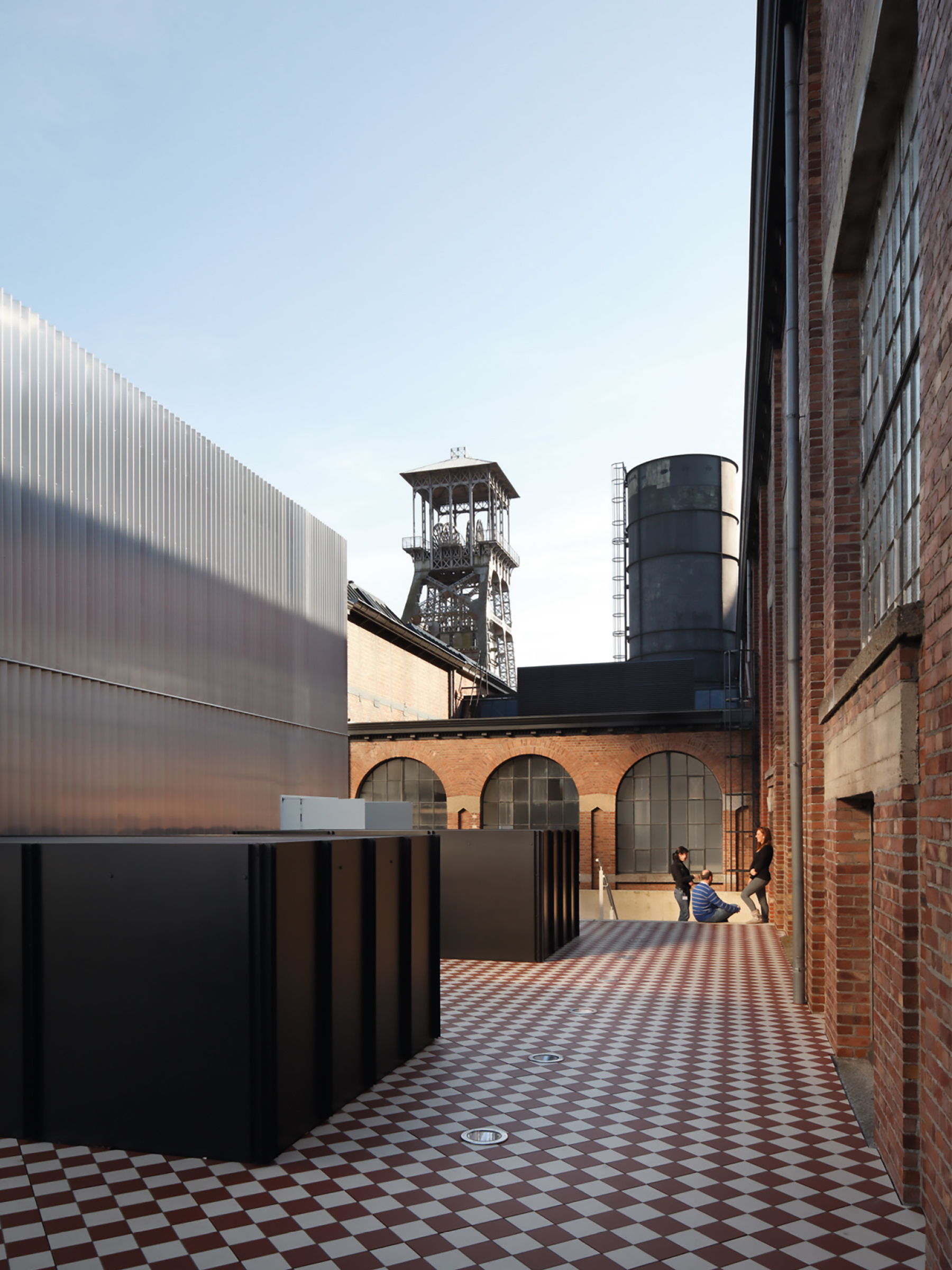
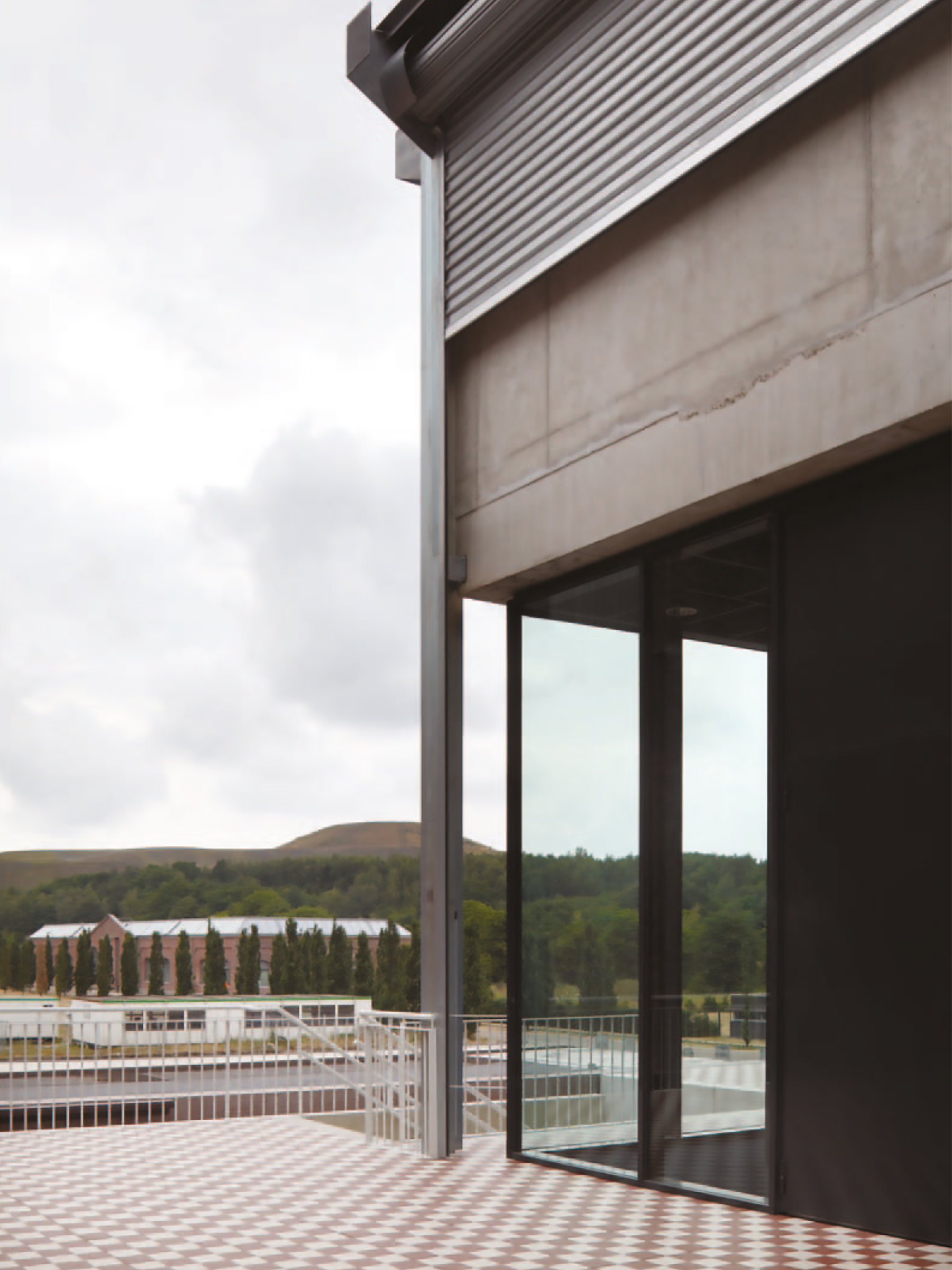
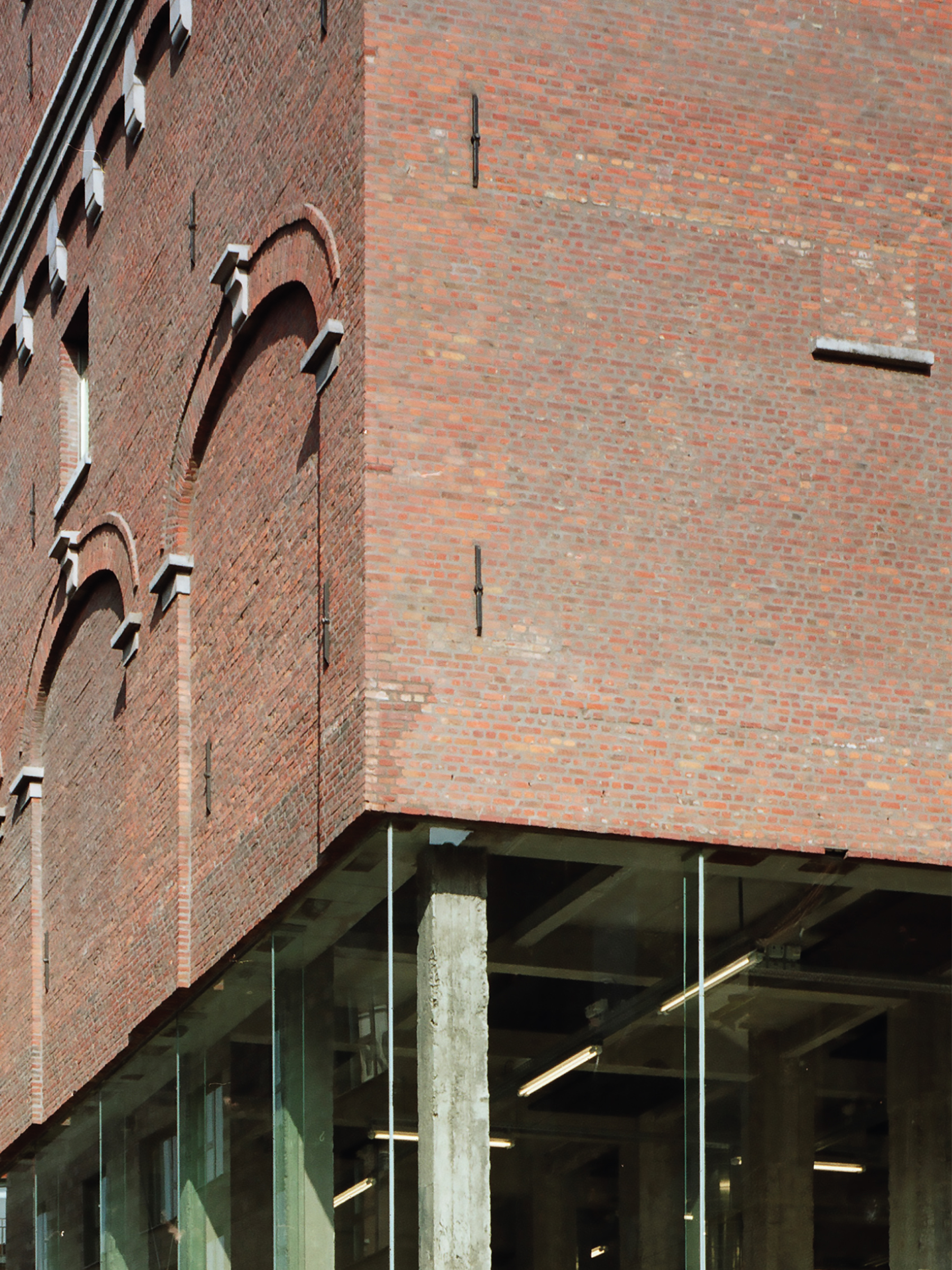
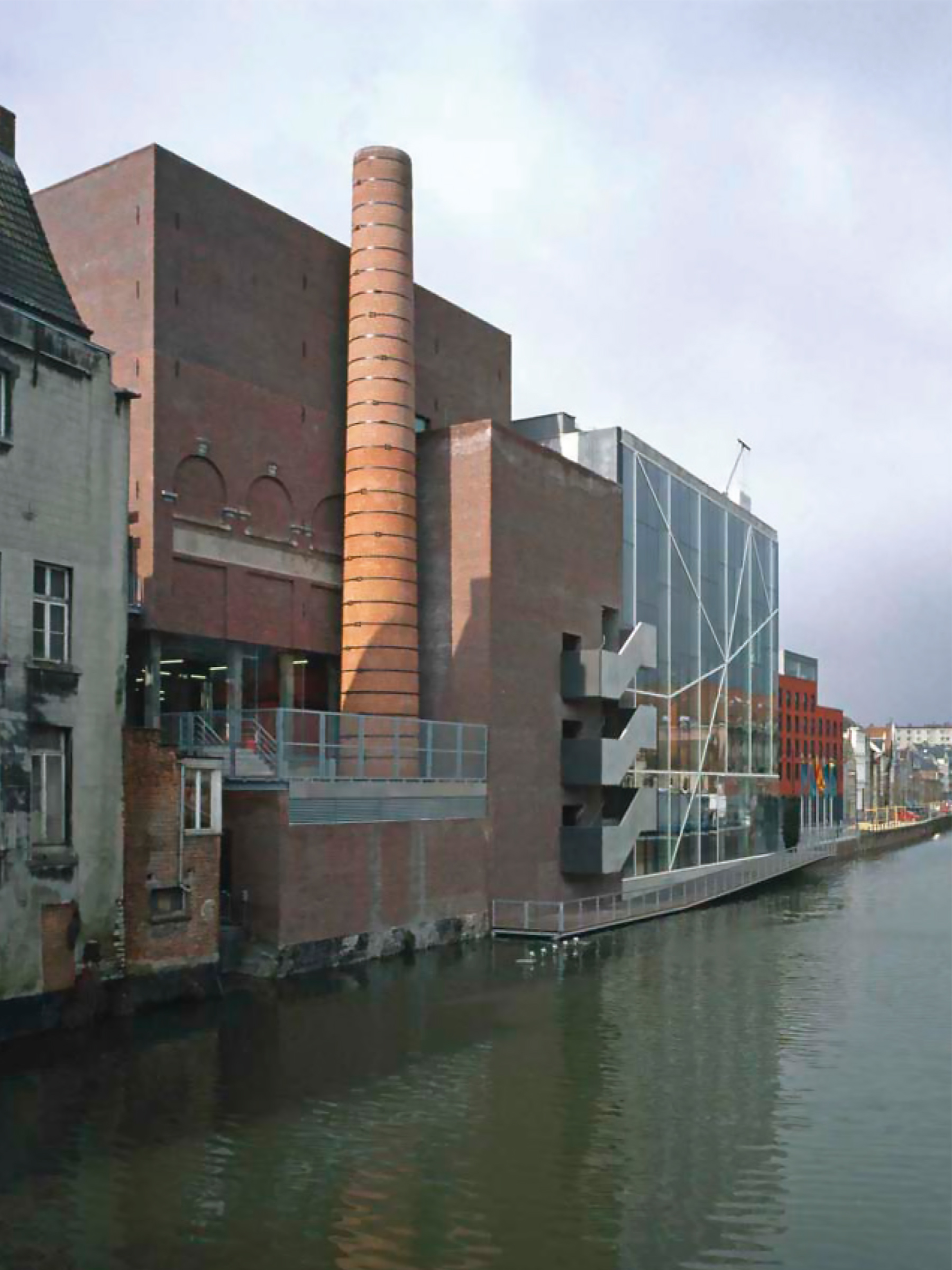

Historical buildings are often landmarks in our environment and part of our shared culture. To acknowledge and work with such a collective memory allows to anchor a building and its users in a specific context, in order to transform the architecture into a tool to observe a broader history or the surrounding landscape. In C-mine, the machine hall is left untouched and becomes the centre of the project, making the site an extraordinary witness of mining history, part of the city narrative and identity. In Lamot, the surgical intervention on the existing buildings allowed to keep trace of its past. In both cases, the collective identity becomes the backdrop for a new meeting space for people to appropriate and relate to.
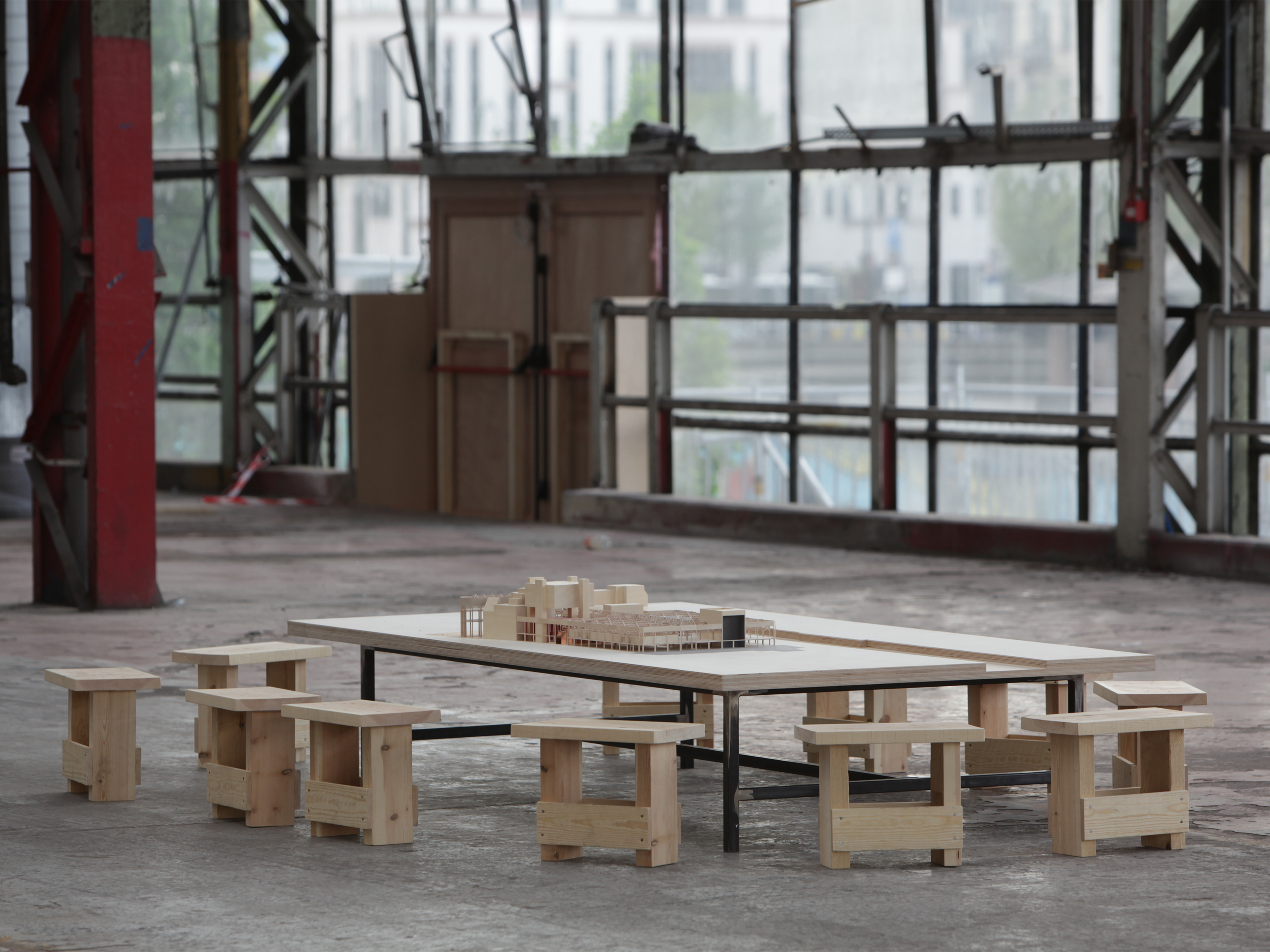

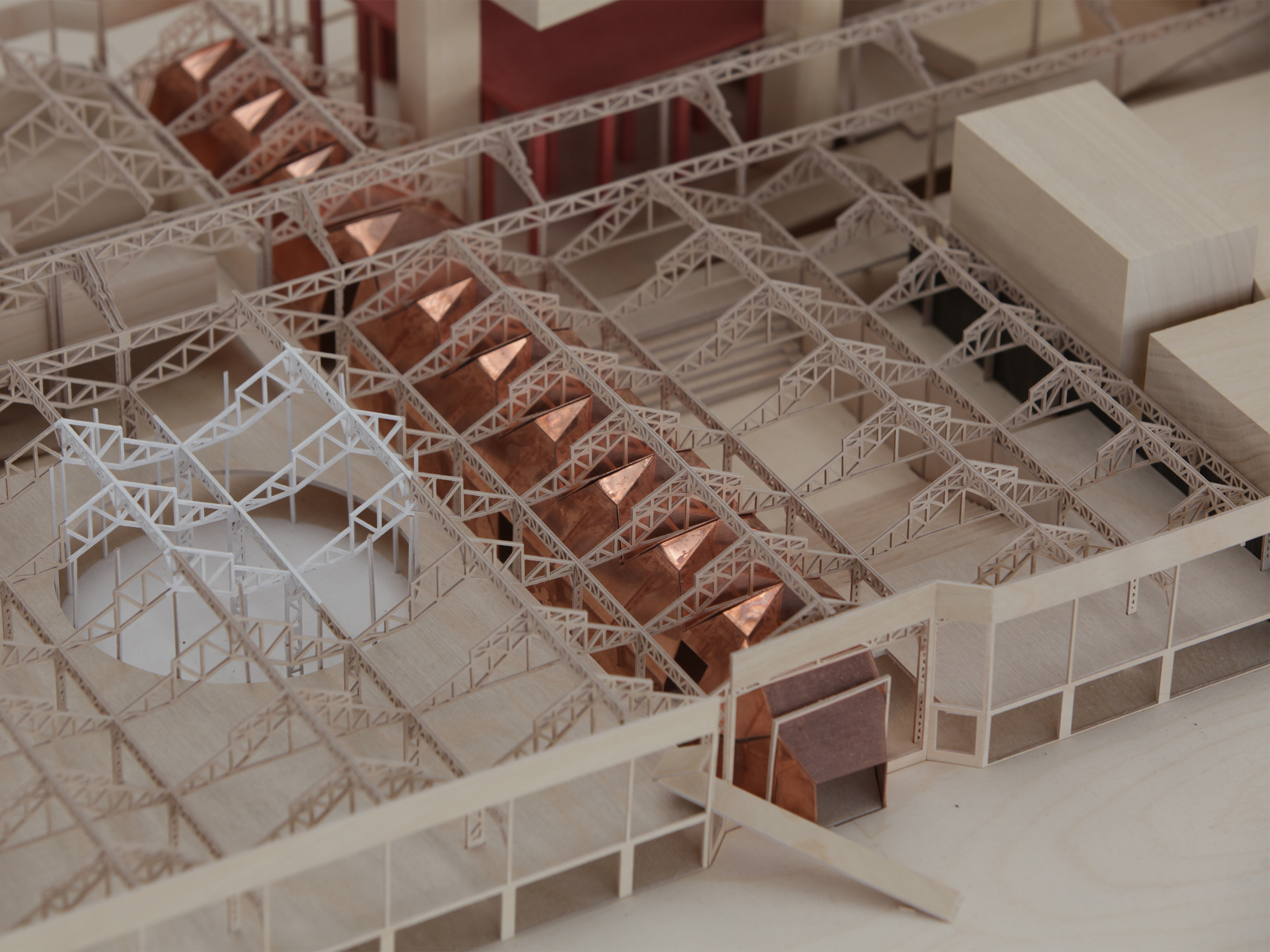
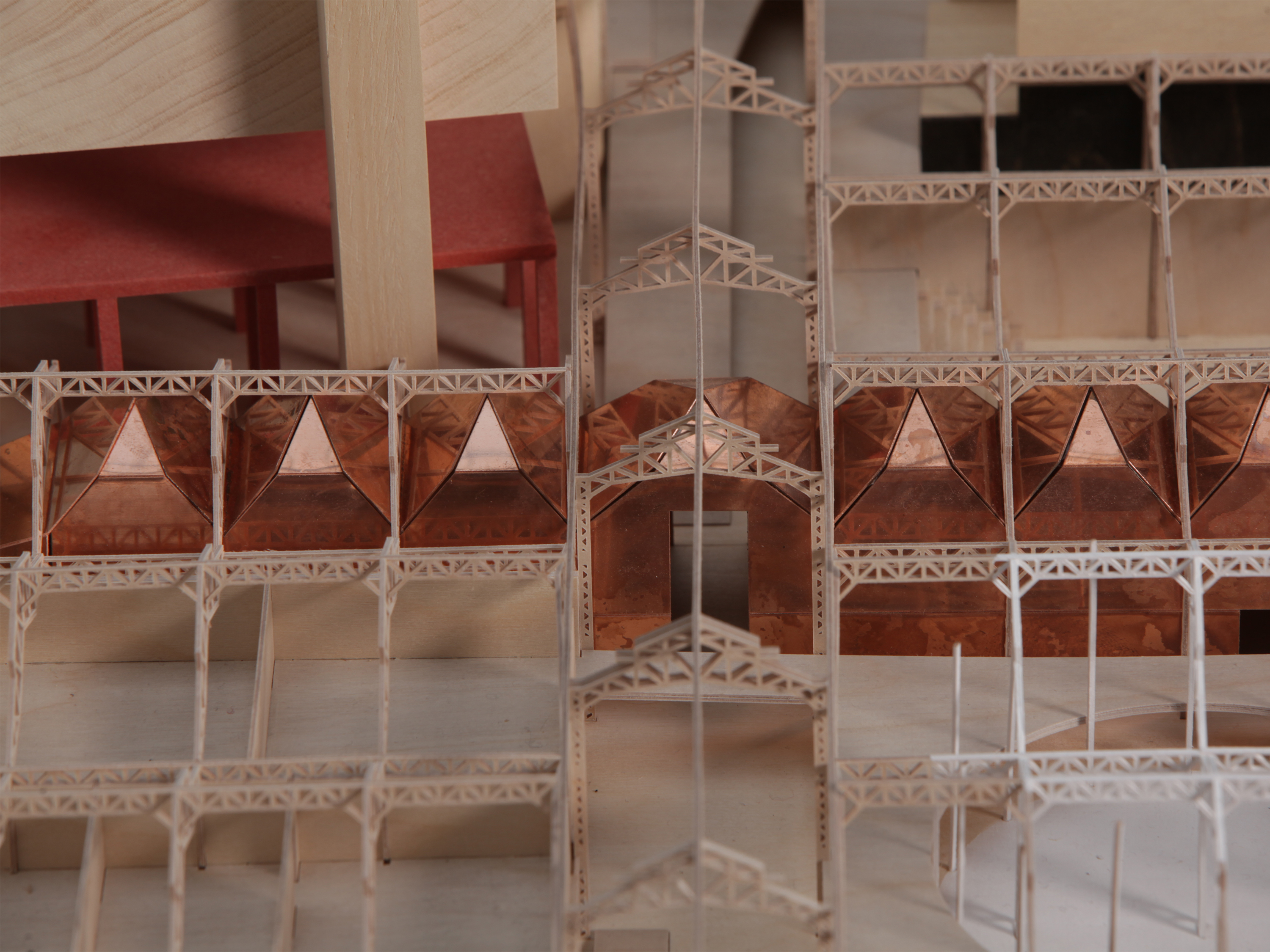
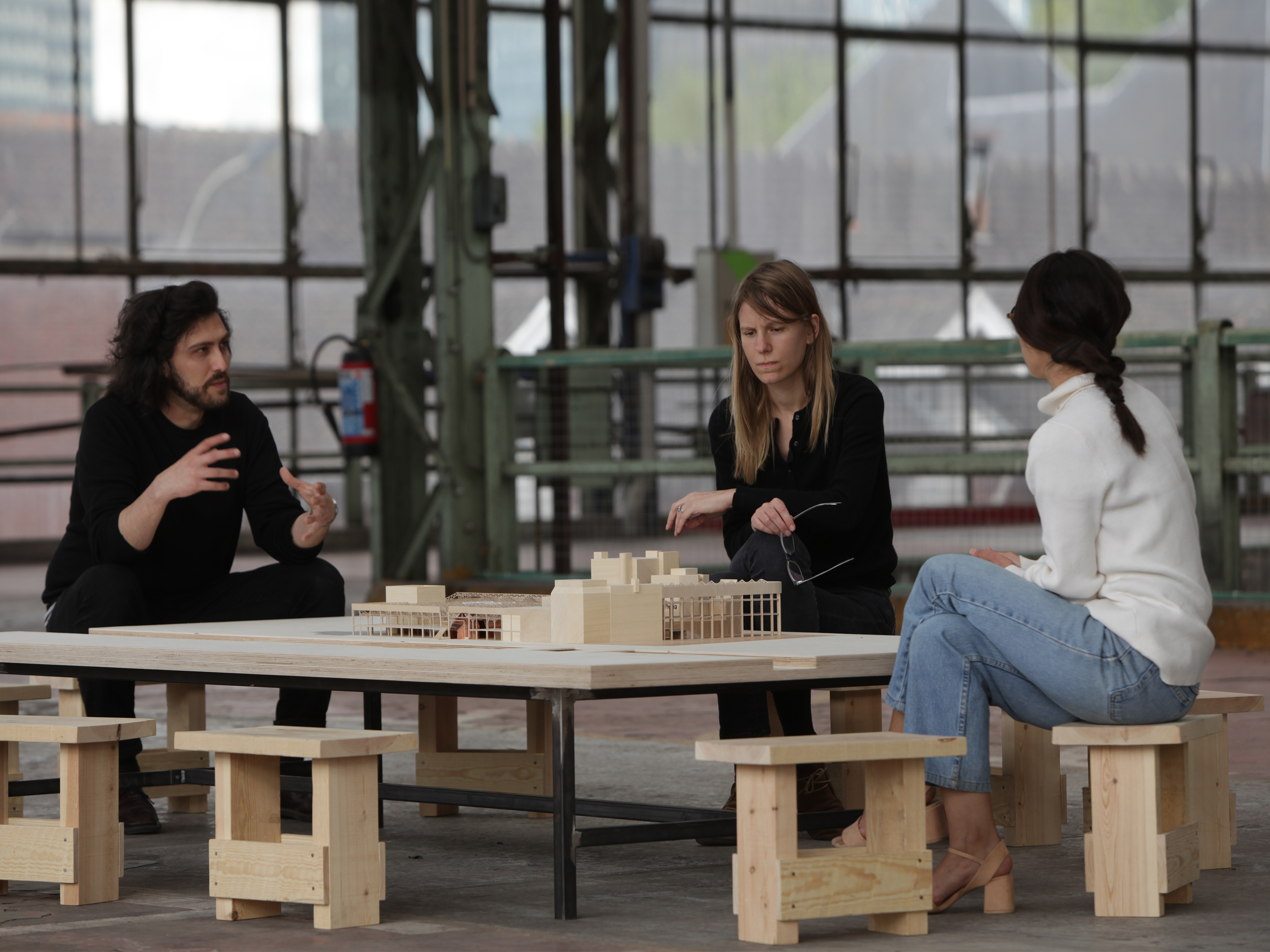

The project for the Soft Museum saw the vast horizontality of the former garage as a generous ‘overcoat’ holding together a set of smaller entities, varying in atmospheres, spatial proportions, light conditions, etc. This departs from the notion of the ideal museum as a closed system with a high-performance sameness. Instead, the museum becomes an urban infrastructure bringing different physical constraints and imaginations in dialogue. In a context with such broad diversity of cultural actors, the array of interpretations of space could even be curated by different people, from professional curators over artists to third parties, ending up in a lively constellation reflecting the richness of its surroundings.

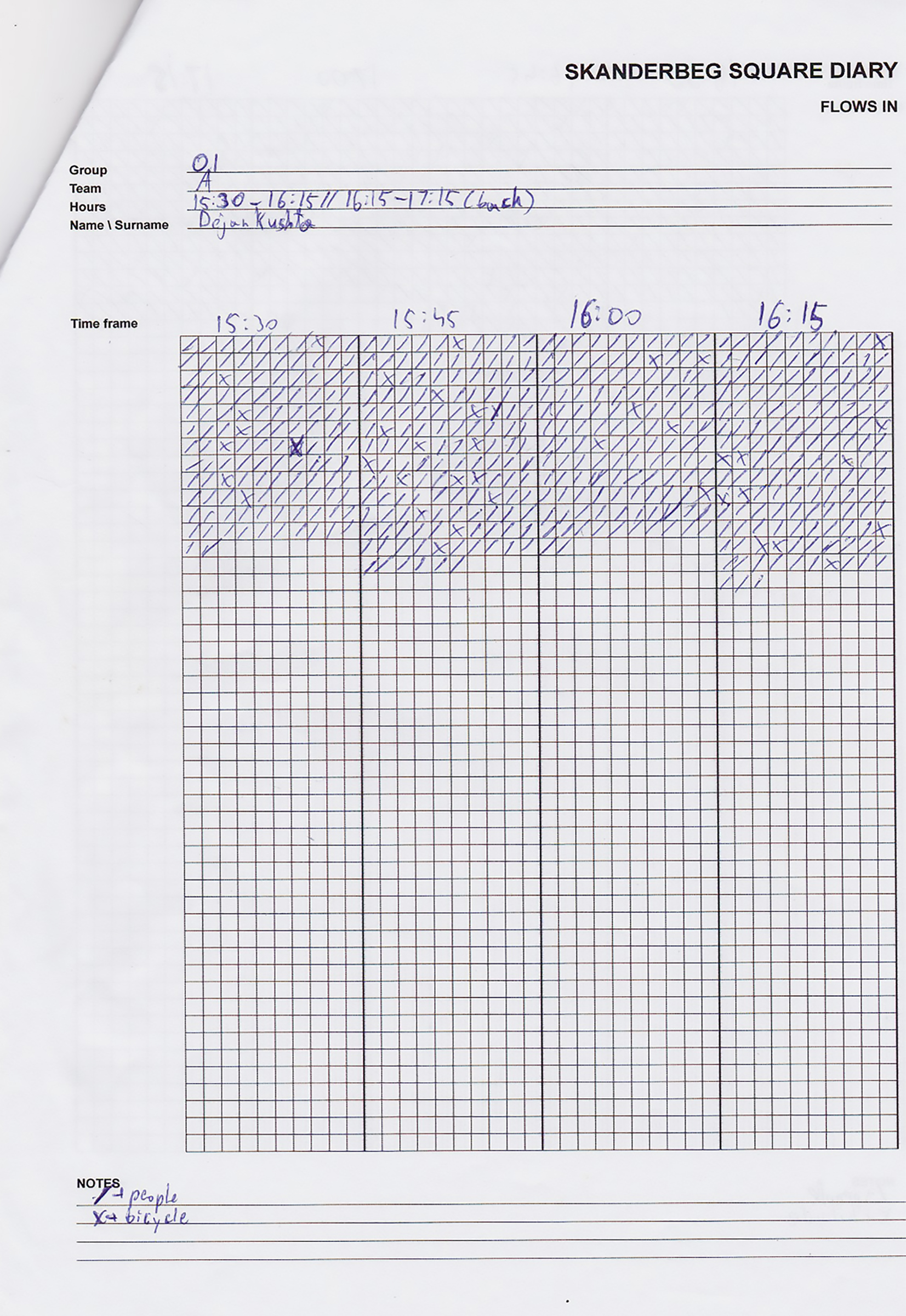


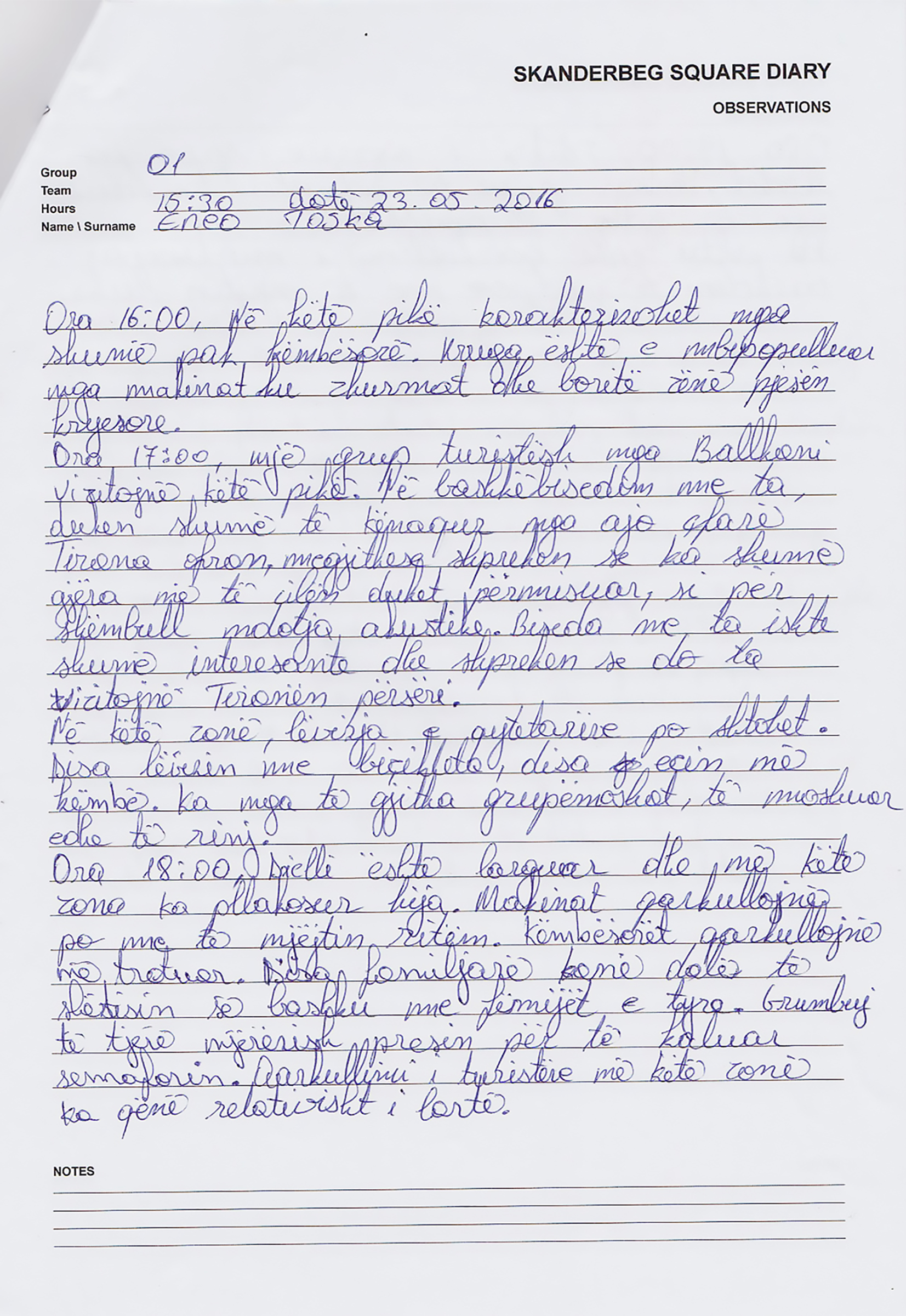

During the elaboration of the design for the Skanderbeg Square in 2016, a group of 140 university students and some high schools pupils were engaged in a project titled “The Skanderbeg Square Diary”. The students were deployed over the course of one month, on various days of the week, at differing hours of the day and in different points of the square in order to cover the whole perimeter. They were asked to describe a section of the square by filling in data about the usage of the square and writing evaluations and descriptions of what they could see.
With Falma Fshazi, Megi Mazreku
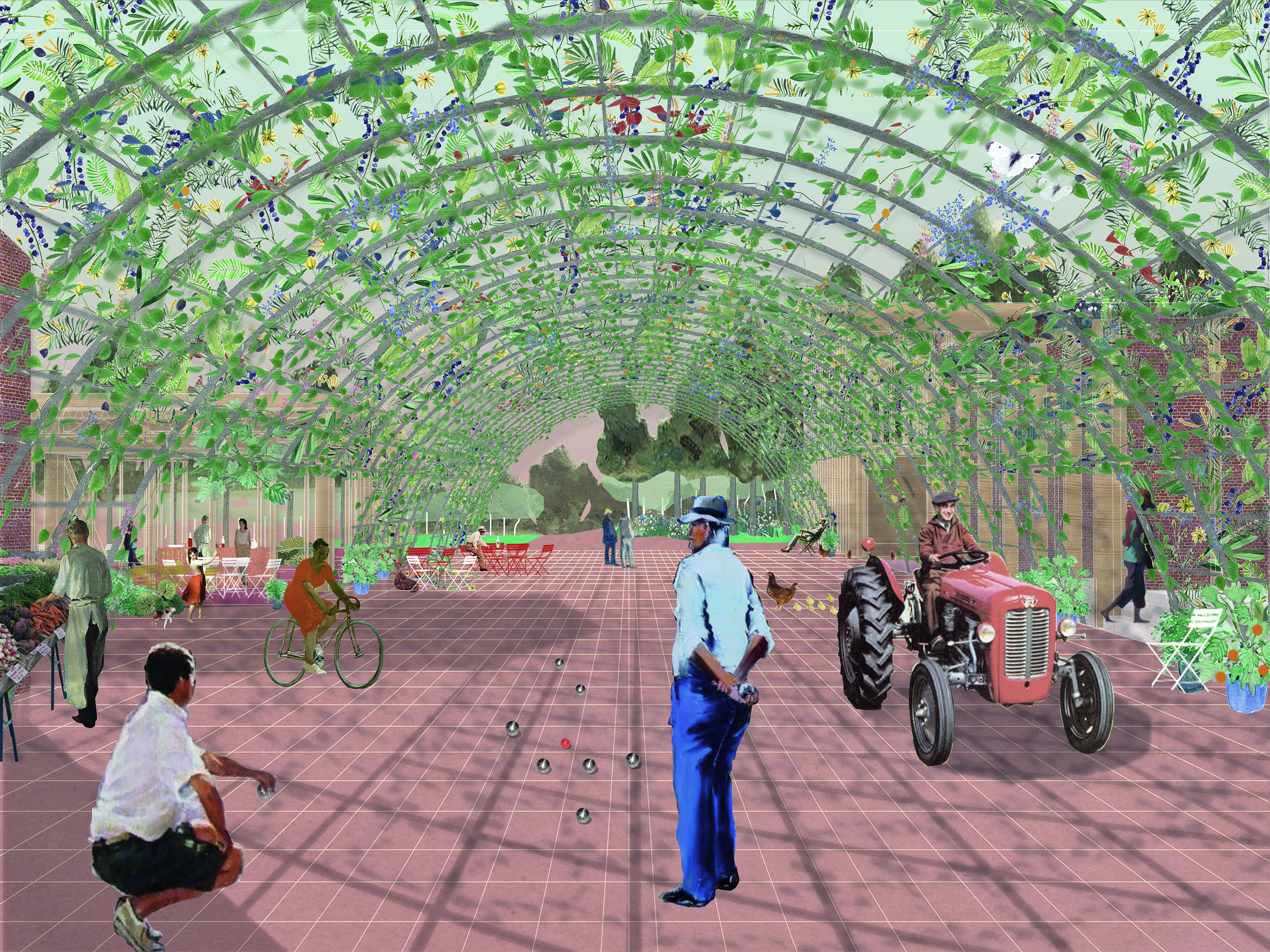

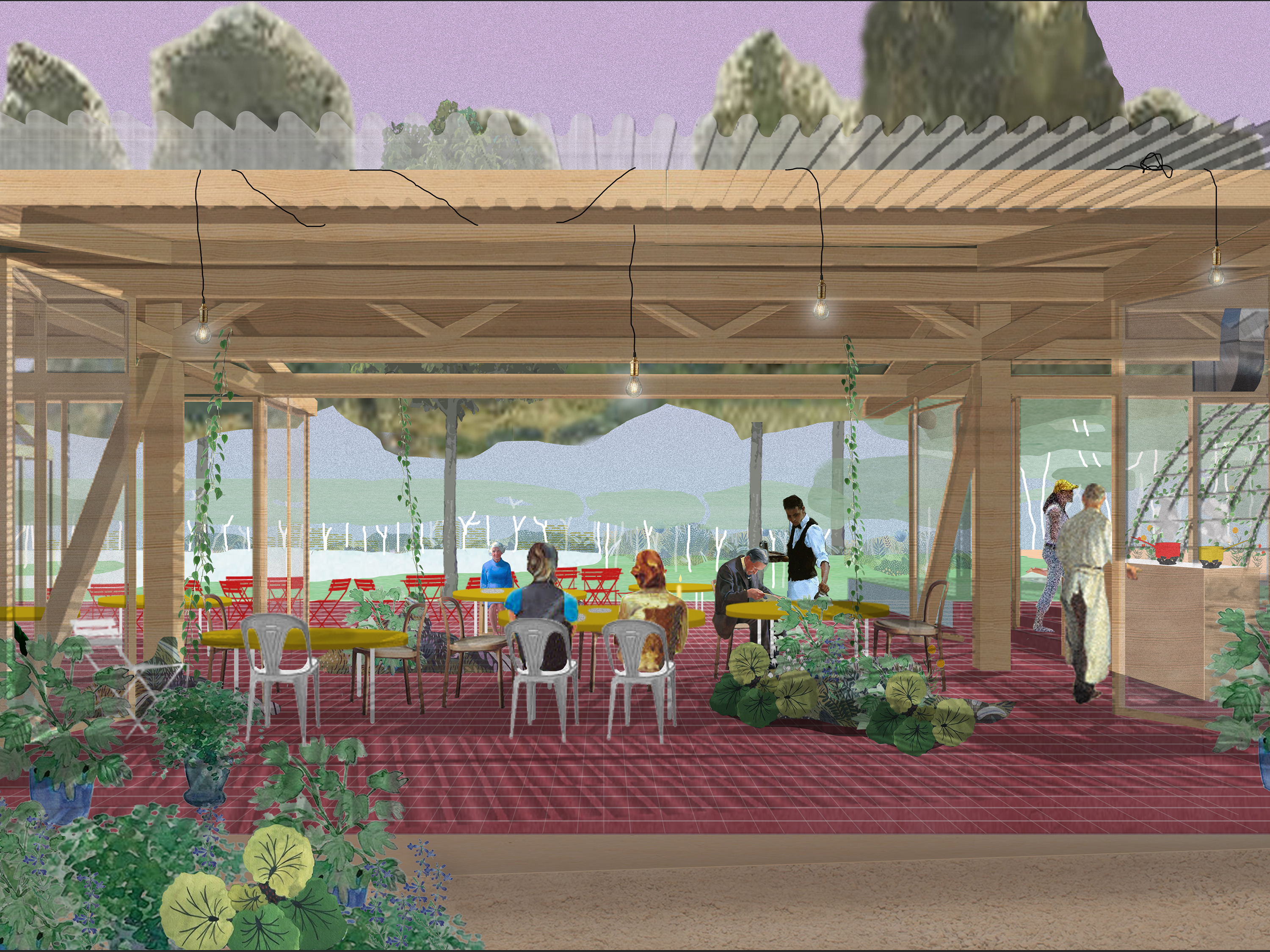


Citizens are becoming increasingly aware of the importance of relocating food production and therefore reaffirm the added value of farms on the outskirts of cities. However, the traditional farmer model is being challenged. It is associated with that of the urban farmer who is often an activist for the ecological and social cause. Urban farmers are reinventing the way they work together, reappropriating the entire food chain: from production to consumption. The project represents a tool that updates the needs and desires of the new urban farmers. A model that should multiply in the outskirts of cities to transform traditional farms into places that create social ties, a strong educational dimension and contribute to a relocated agriculture.
What would be possible if we create the frame and the occupation together, as a mutual learning process?
What would be possible if we create the frame and the occupation together, as a mutual learning process?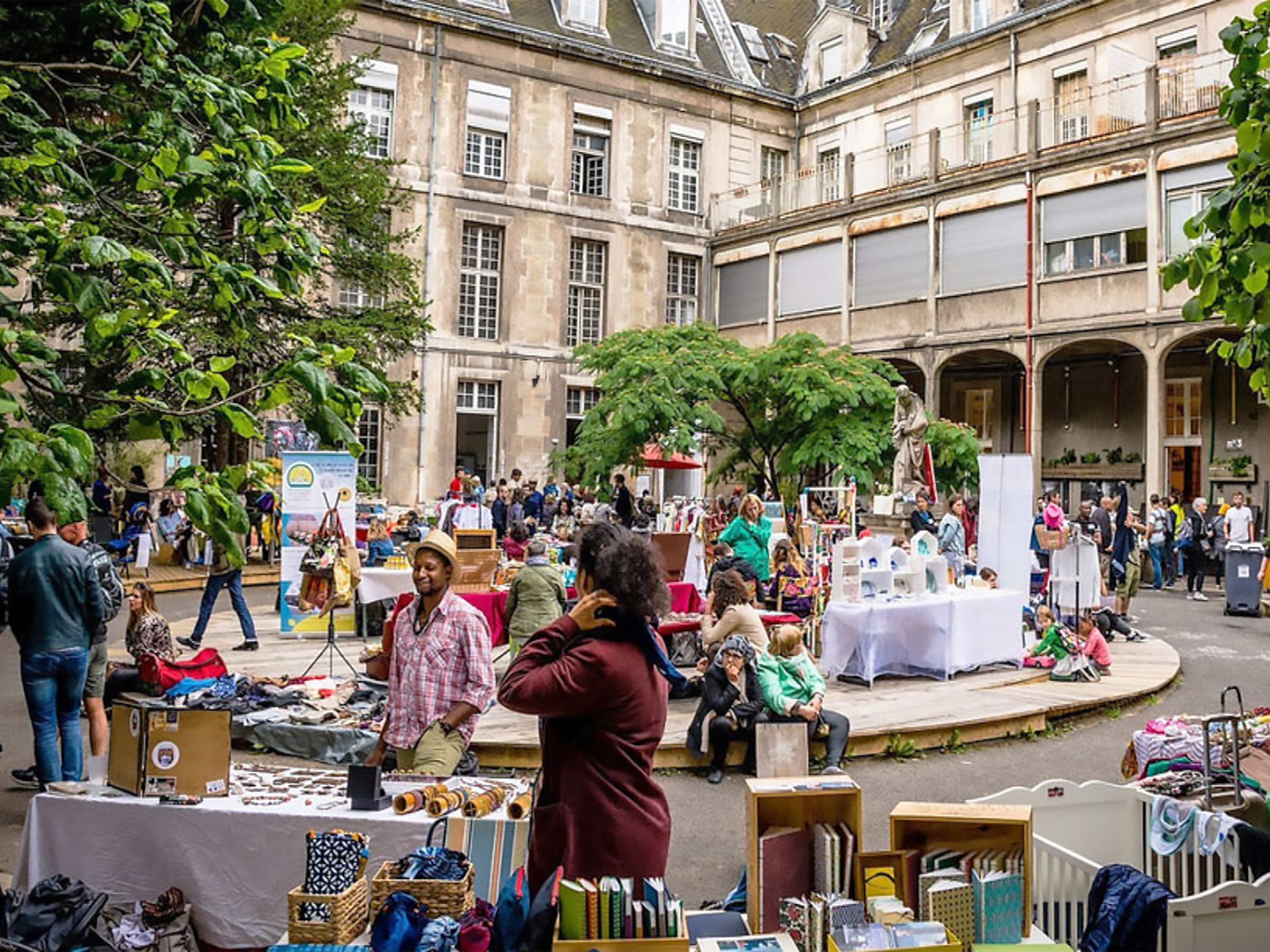
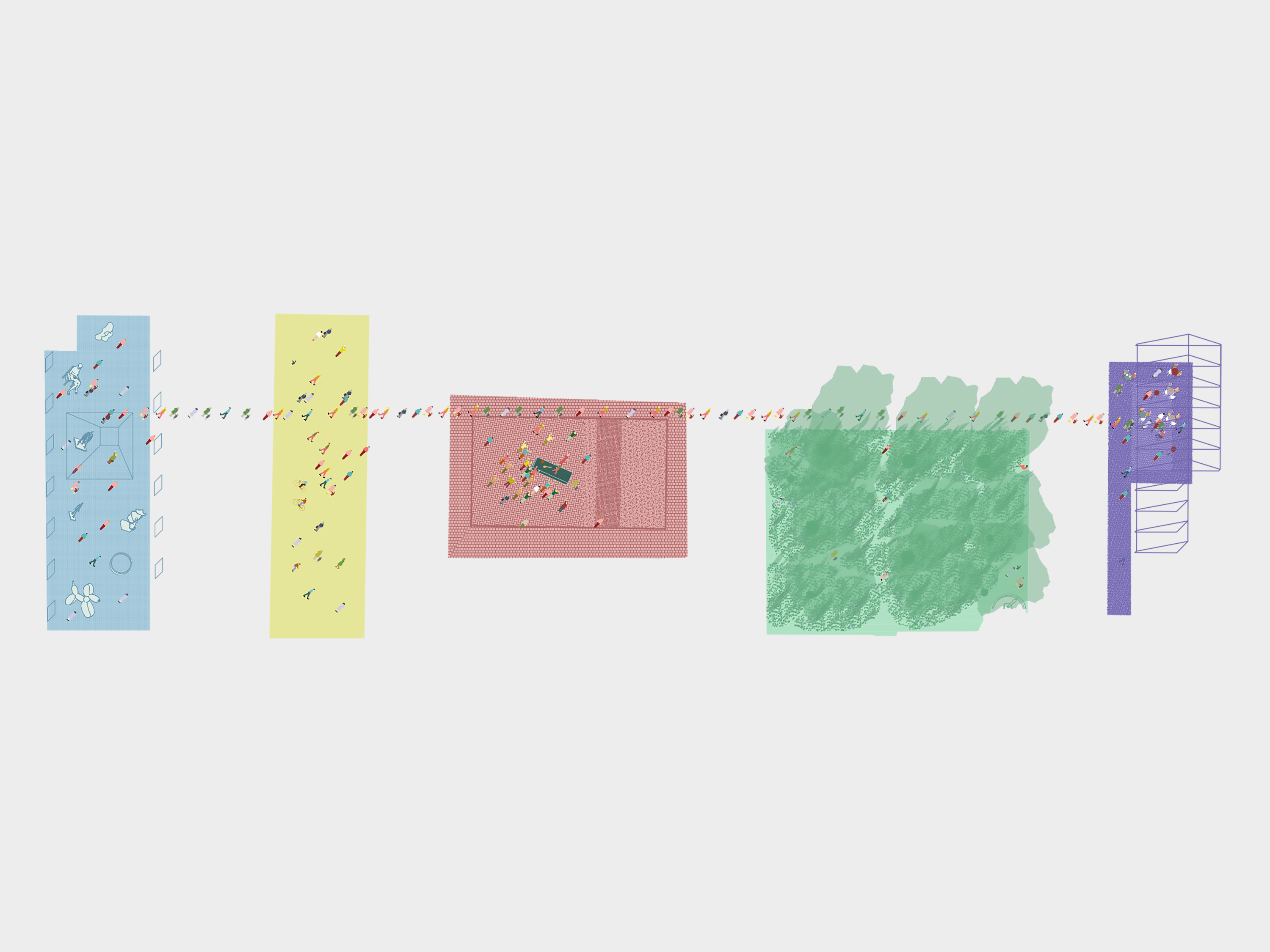
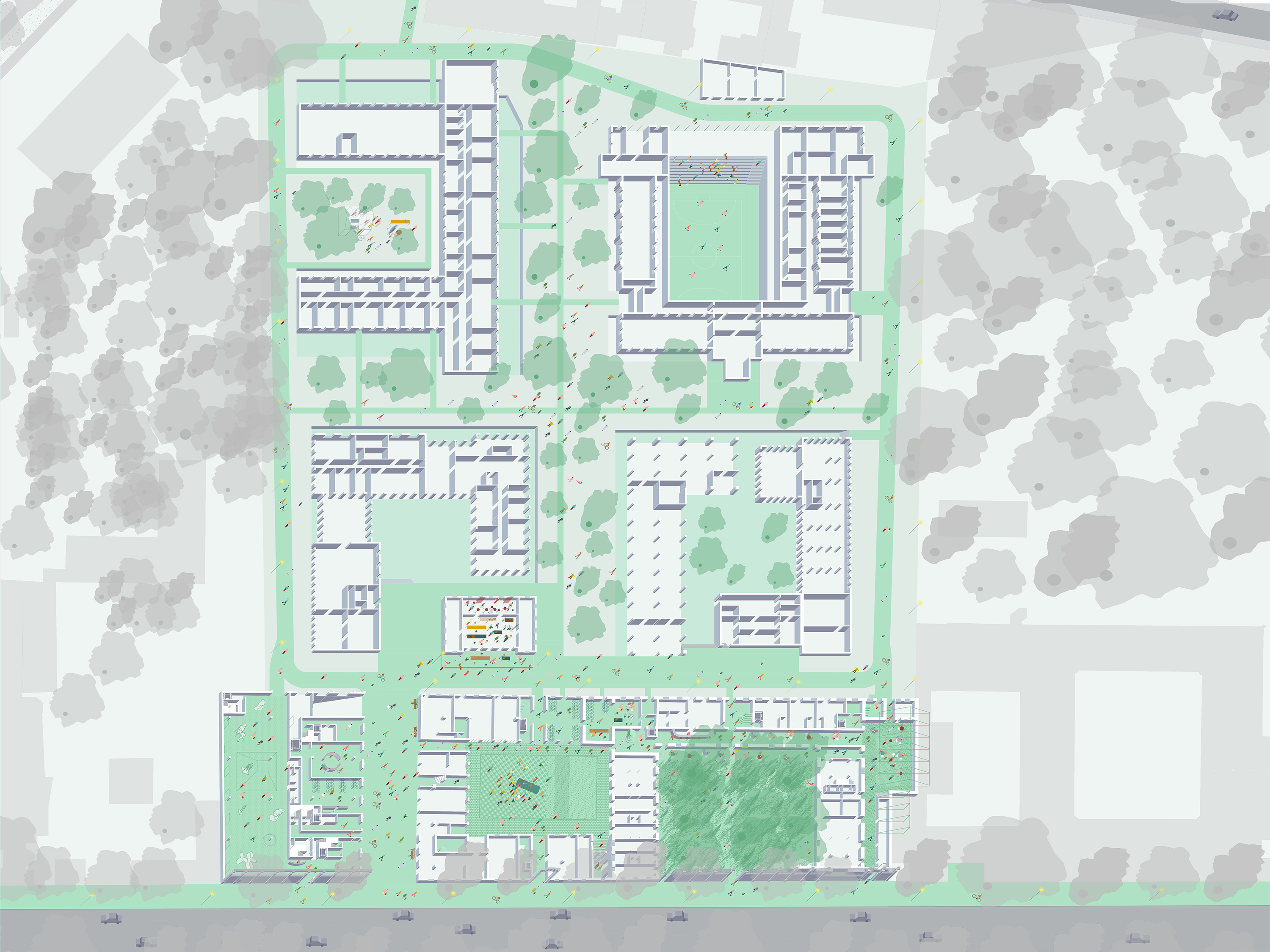

Since 2015, Les Grands Voisins have created an active community on the site upstream of the long-term project. The transformation of the façade located on Avenue Denfert gives the opportunity to perpetuate the transitory experience and the dynamics generated by Les Grands Voisins: the existing uses are preserved and added to the future programme. This explains the interventions are on two levels: an upgrade of the preserved spaces and an improvement in the links between these spaces suitable to interaction.
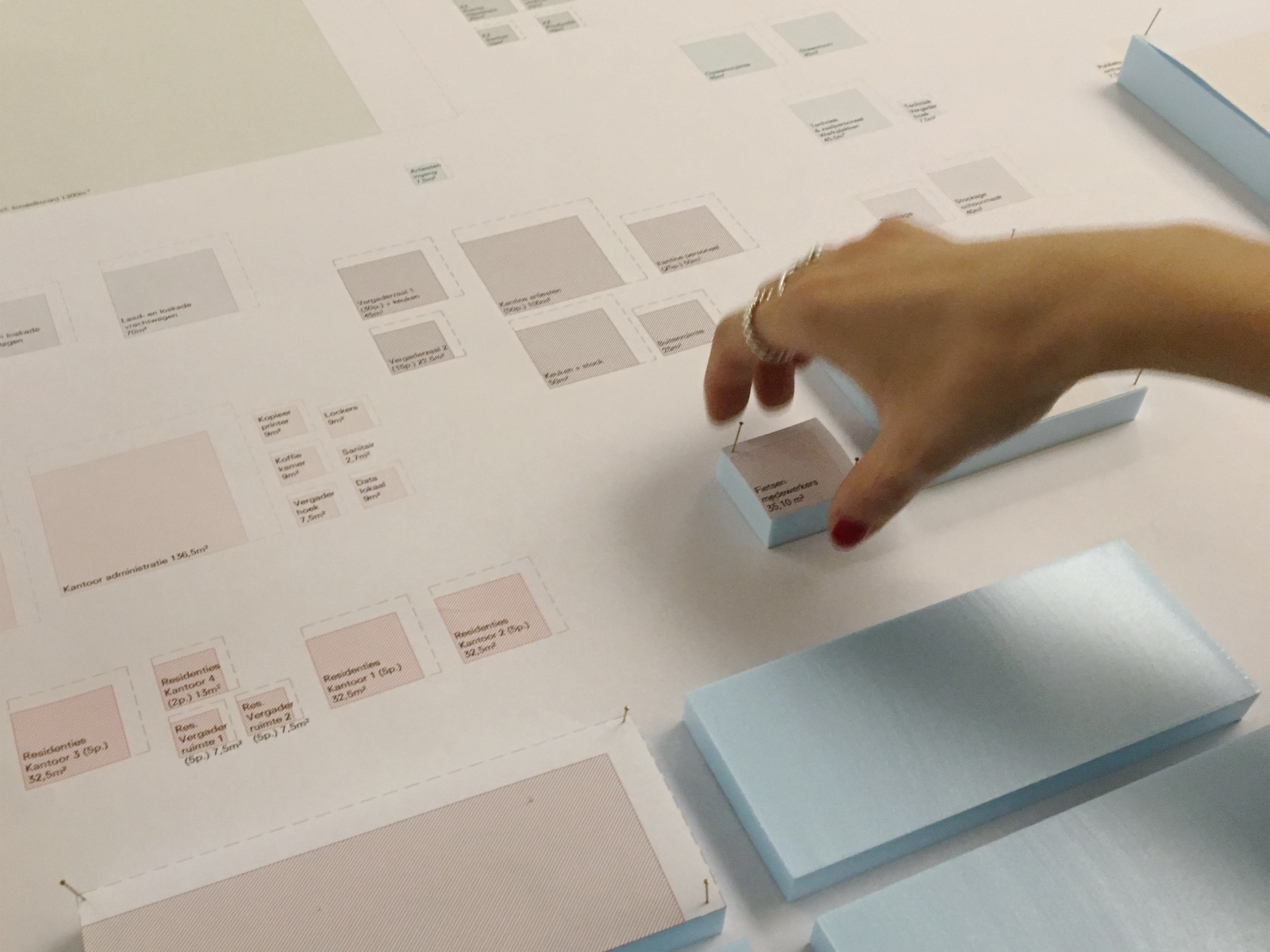
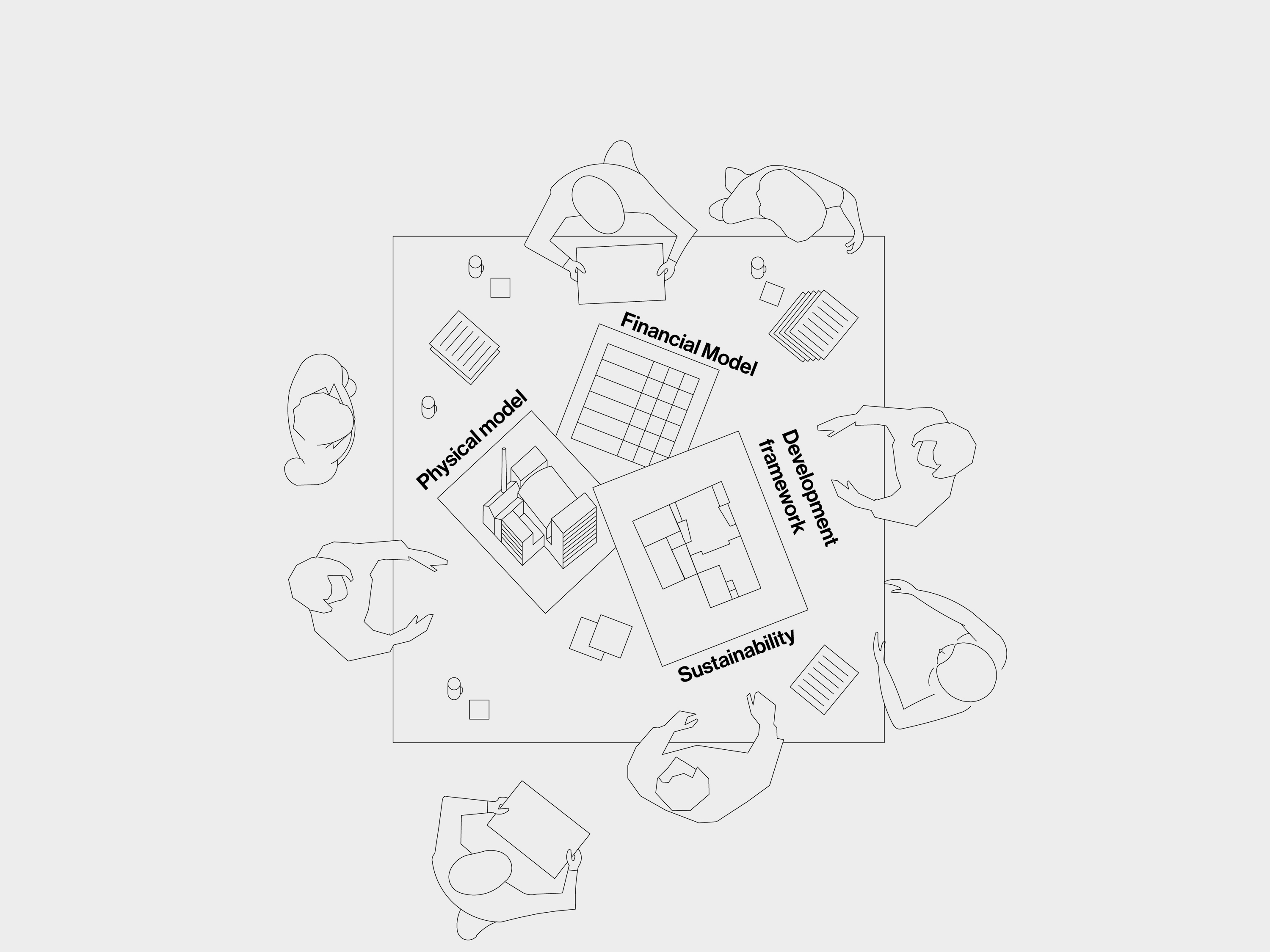



For Kaaitheater, we developed a potential scan for the extension and reconversion of the theatre, prior to the launch of an architectural competition. The exercise happened in close collaboration with the users, and on multiple levels at once. The design research used scenarios to define a development framework for the future institution, and summarized the potential of the existing building and the infrastructural requirements of the future project. But the iterative exchange process also allowed to produce new insights on the future working of the theatre; touching on the potential relations of the institution to its context, and as importantly, of different groups working daily within it.
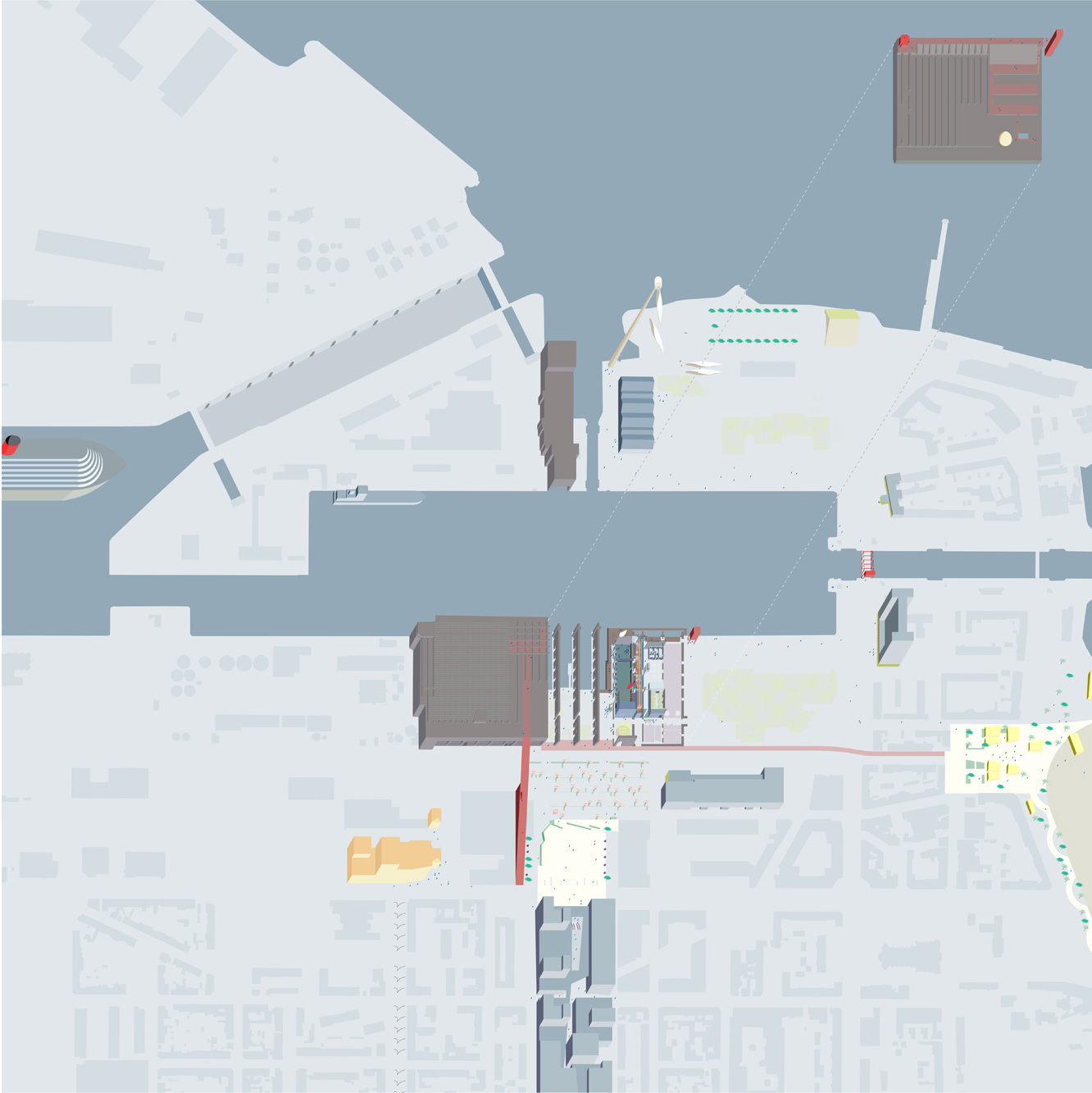


A diverse palette of tools was used in the design approach, which allowed us to look beyond the building and the project’s perimeter in a double movement of both zooming out and zooming in. Zooming out, we created a new discourse, clarifying and naming the different ambitions and scales that this intervention would have an impact on. Terms and words were formulated for the project, structuring how the various parties involved talked to each other. An urban reality drawing of the city was created to evaluate the urban impact of the project. The drawing allowed to see the intervention in relation to the other venues that were already in place, and discuss how all of them would work together.
Freek Persyn, Tabula Scripta, 2019
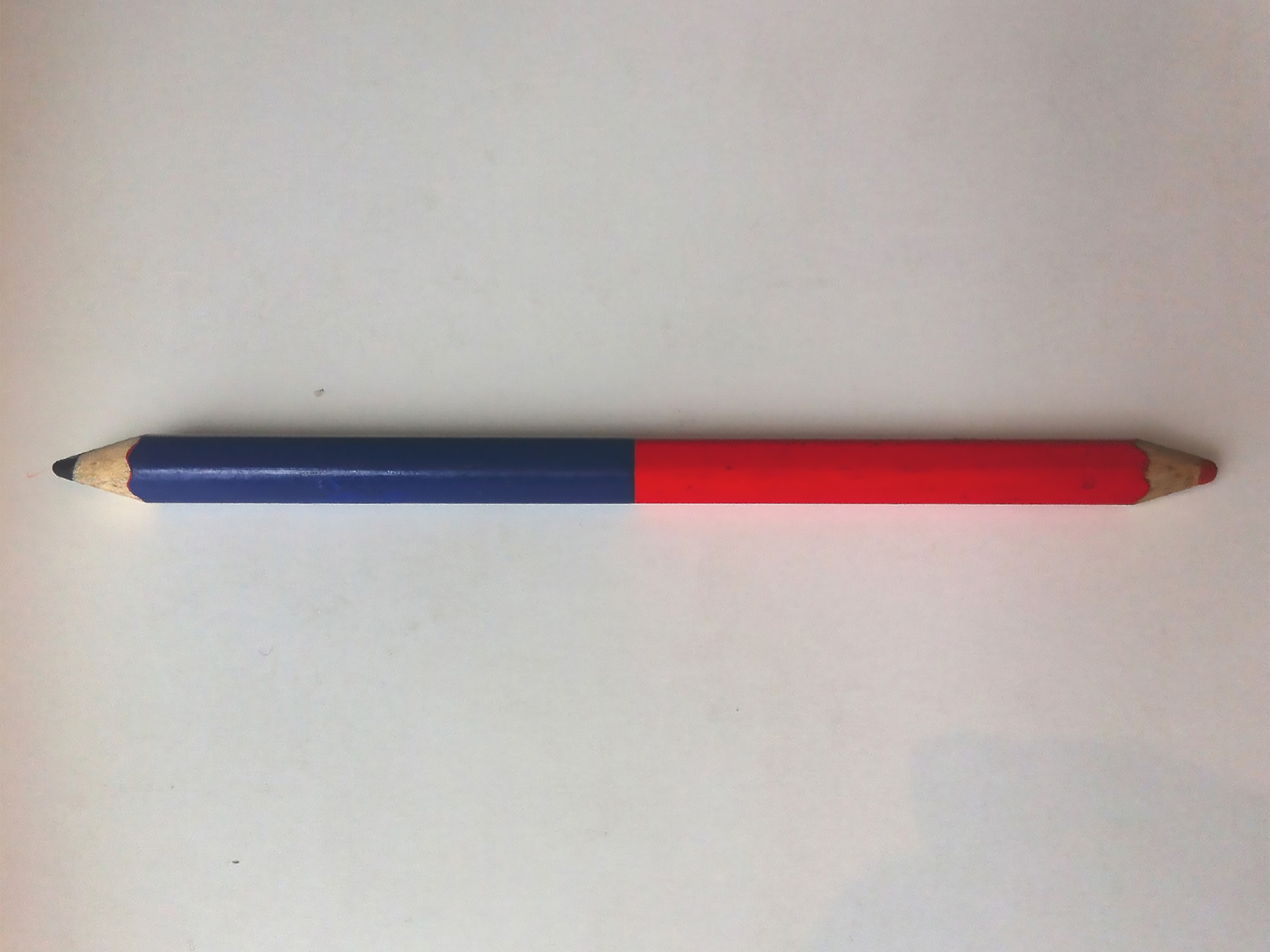

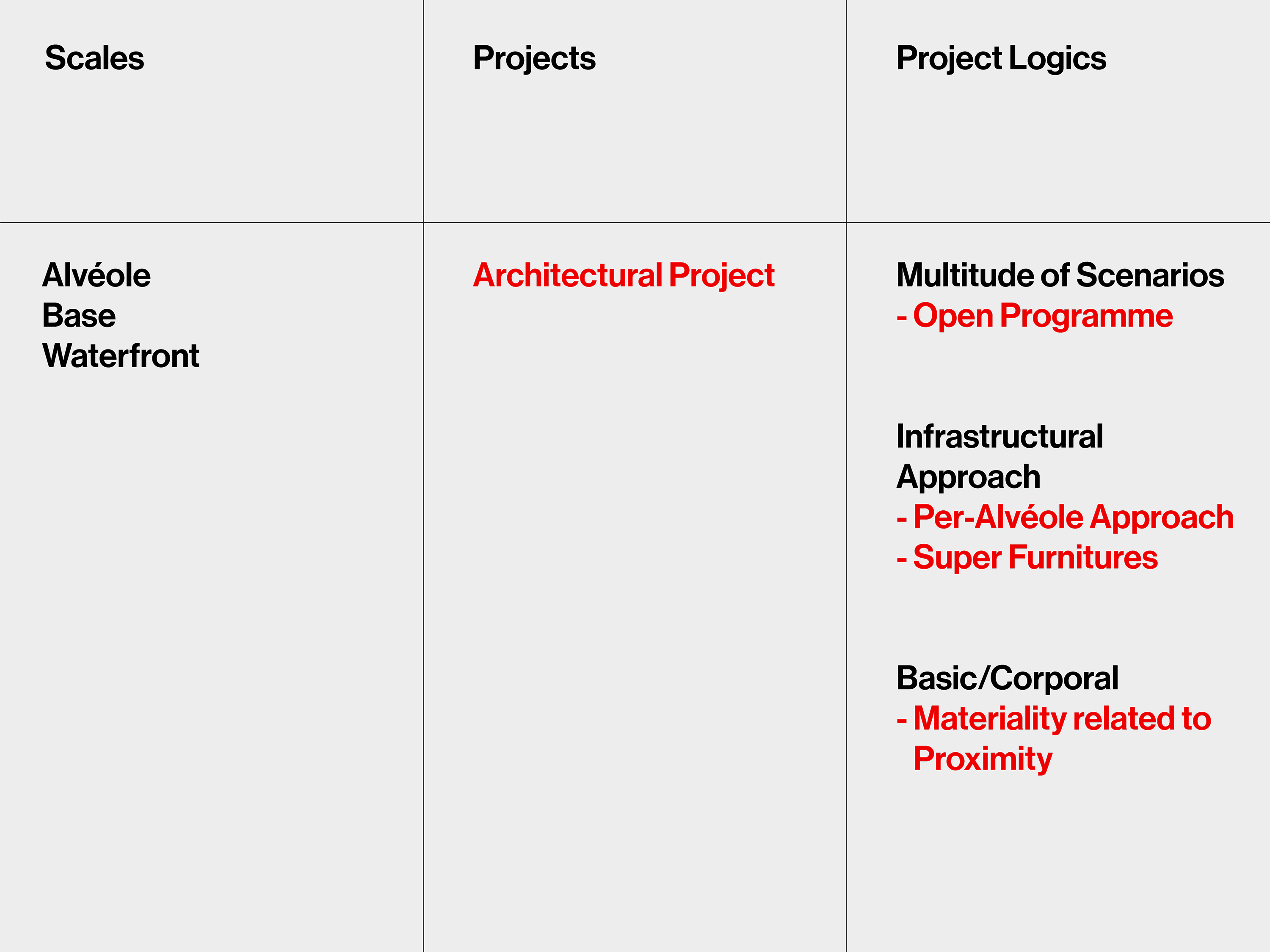
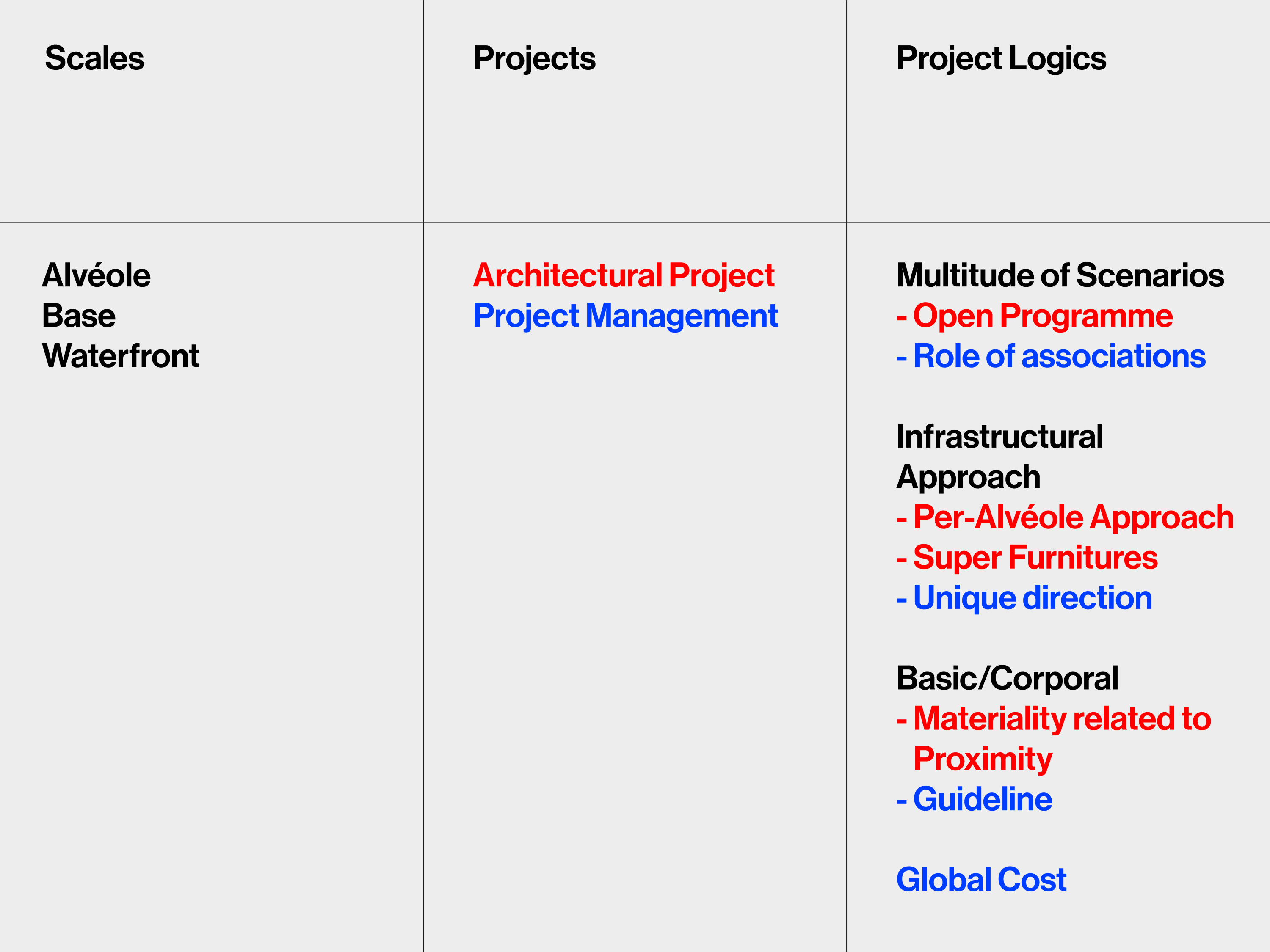
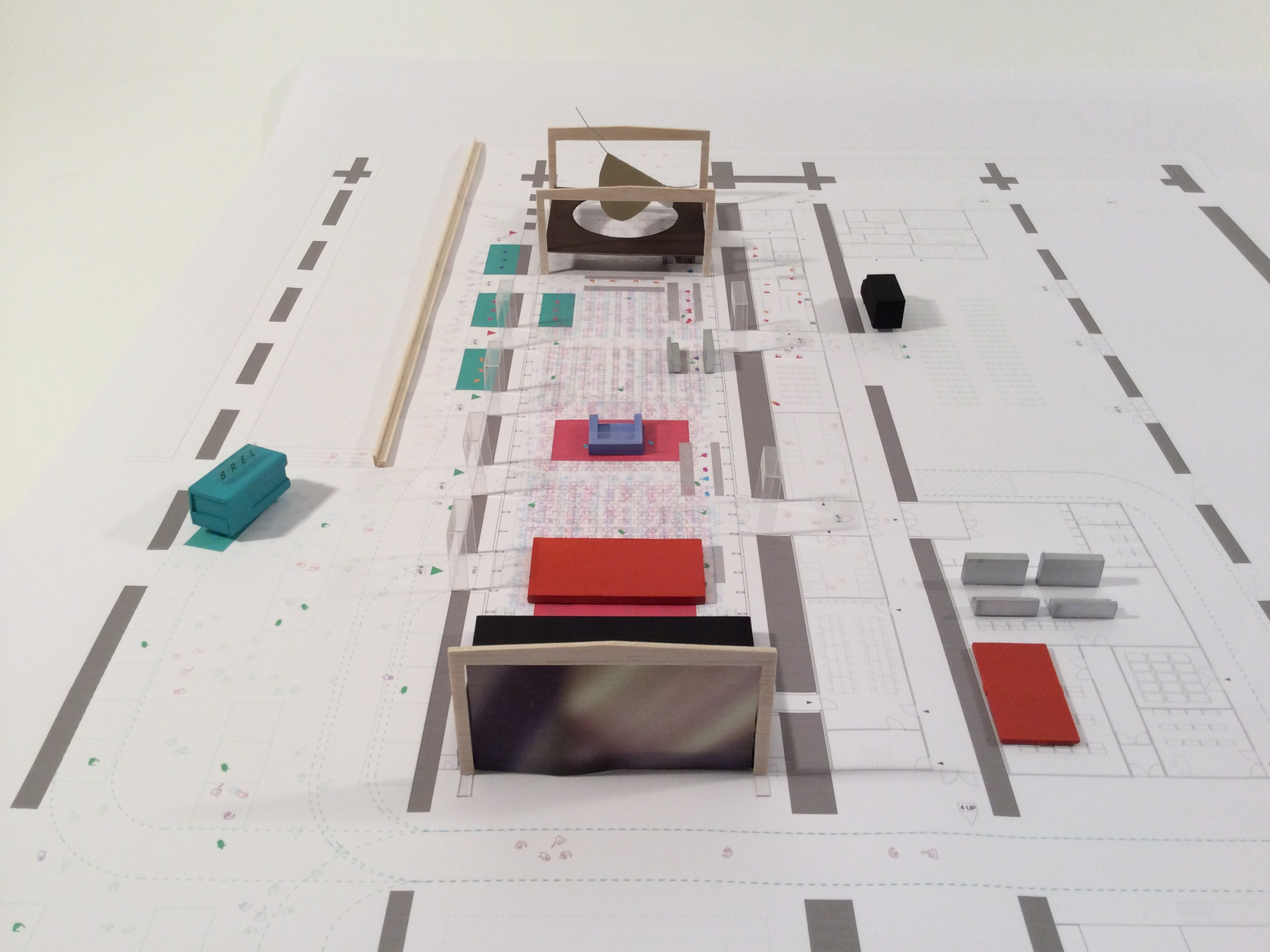

Inspired by the tension between the harsh condition that the base presented and the convivial programme of a 'salle des fêtes', we presented not a project, but an approach: to design in dialogue. This approach meant that we did not start by talking about architecture, but to try and envision how the base could be used, and why. The question we asked ourselves was: how could occupying the base become attractive? This approach got us selected, and we entered a process where nothing was to be taken for granted, not even the assumption that they really wanted to do this.
Freek Persyn, Tabula Scripta, 2019
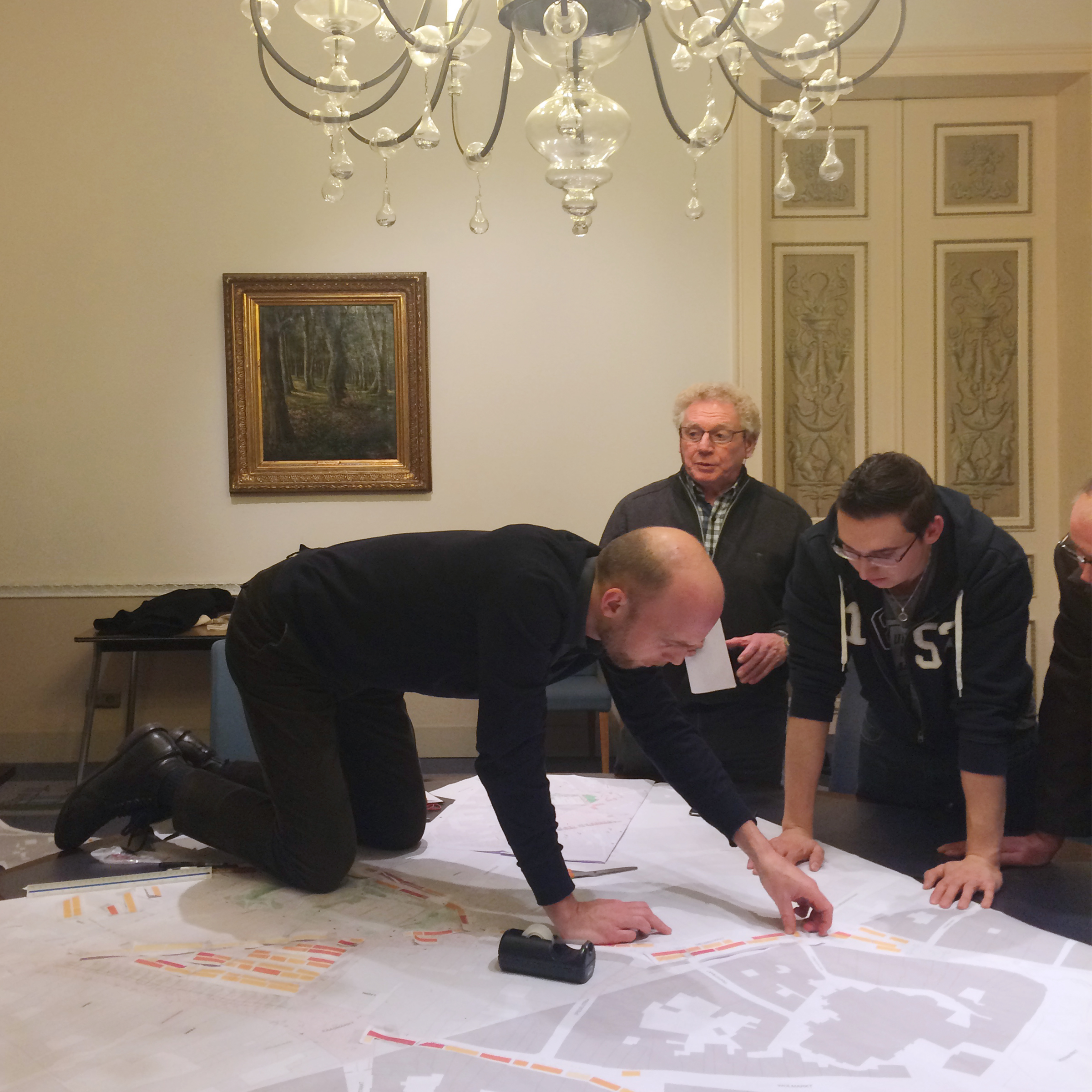

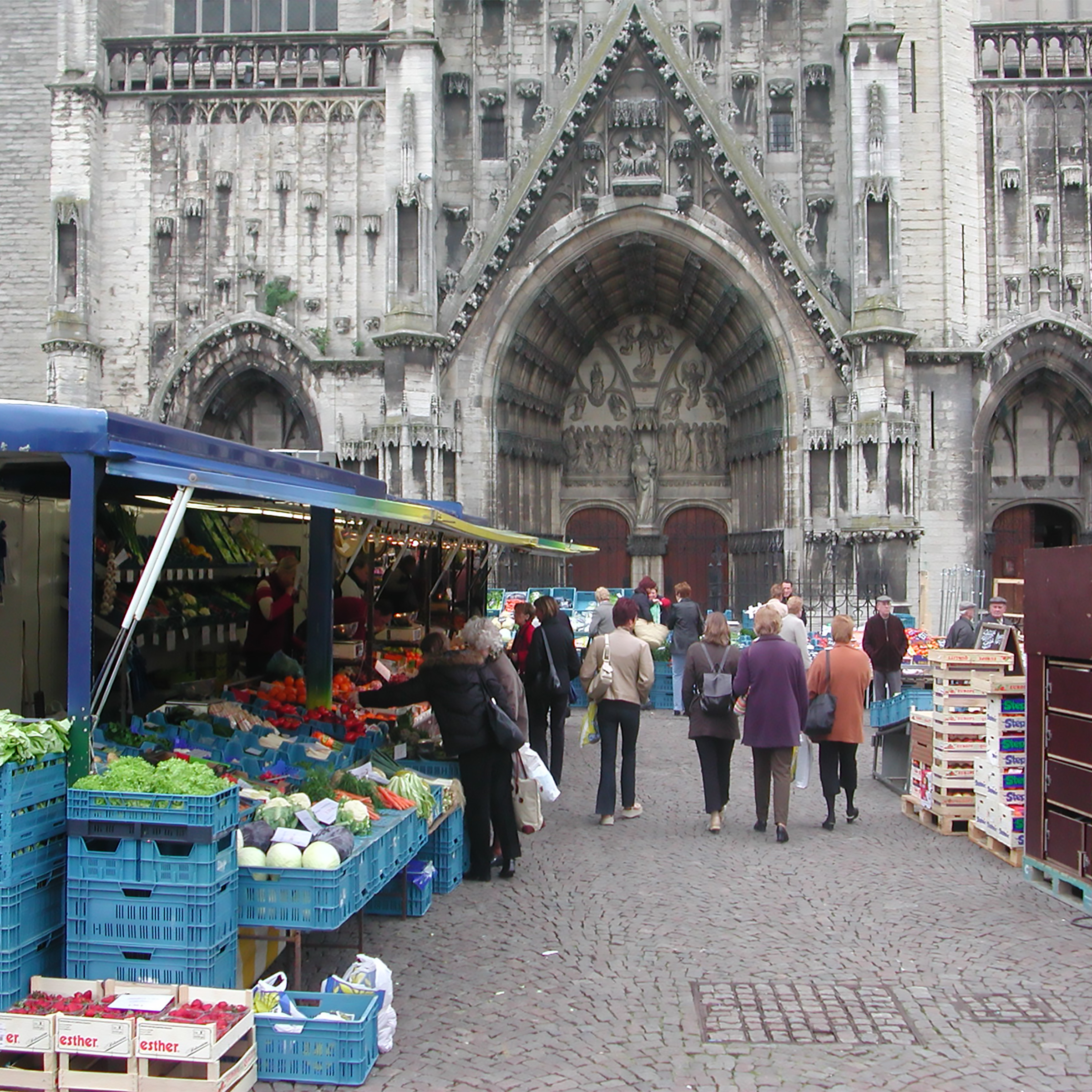

A participation tool was elaborated to involve all parties - policy makers as well as residents, users and other interested parties - in the development process of the project. This led to the definition of four desired levels of ambition that frame various ideas and issues within the main outlines of the design. This made it possible to develop a project that takes into account the comments, ideas, wishes and dreams of the different stakeholders and frames the large market as part of the city center’s strengthening.















